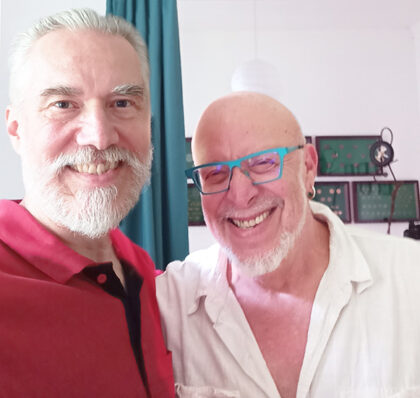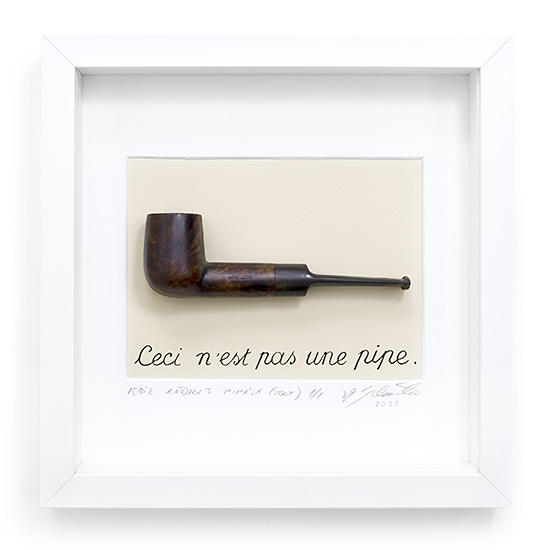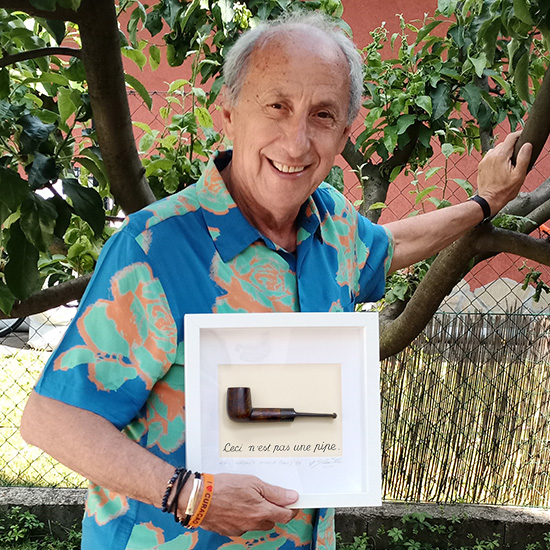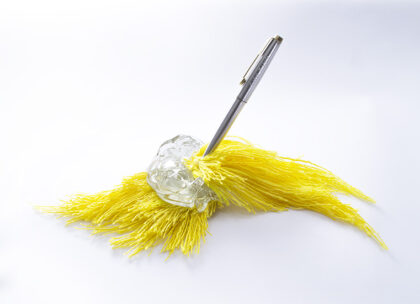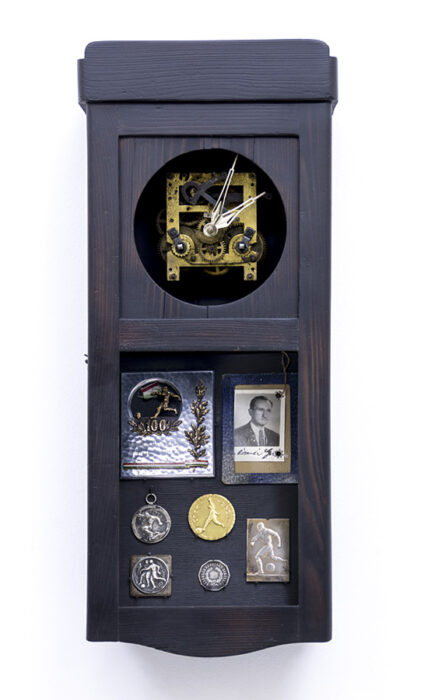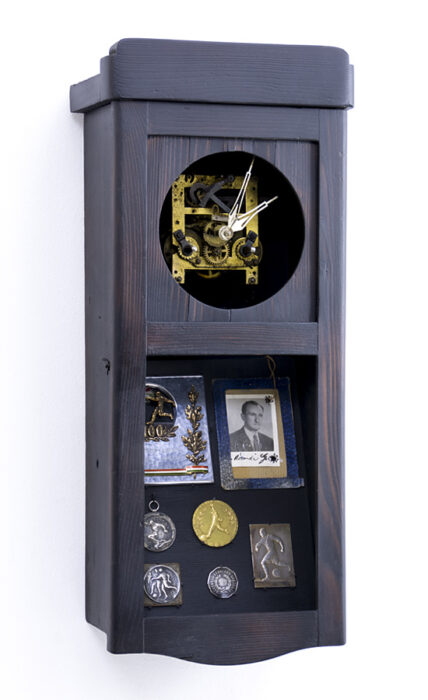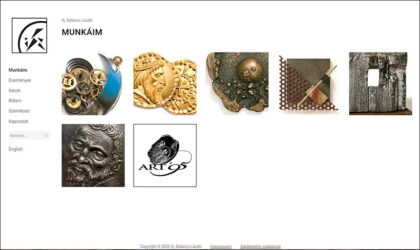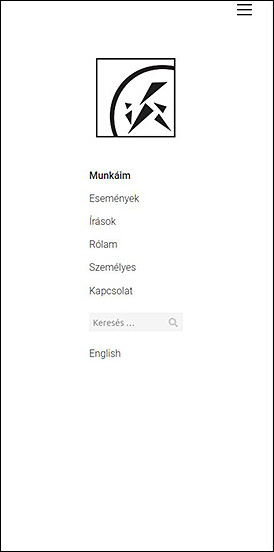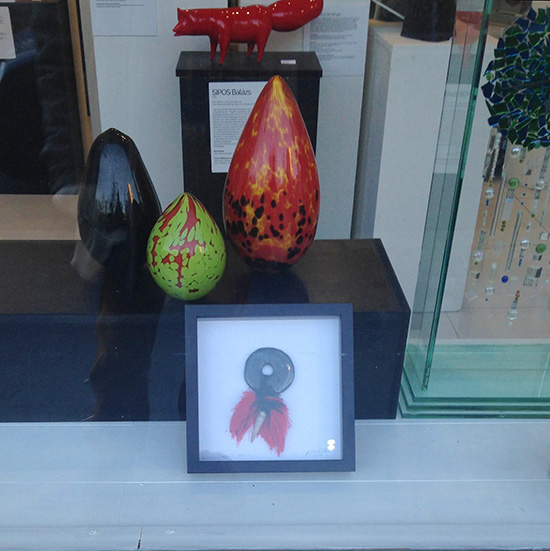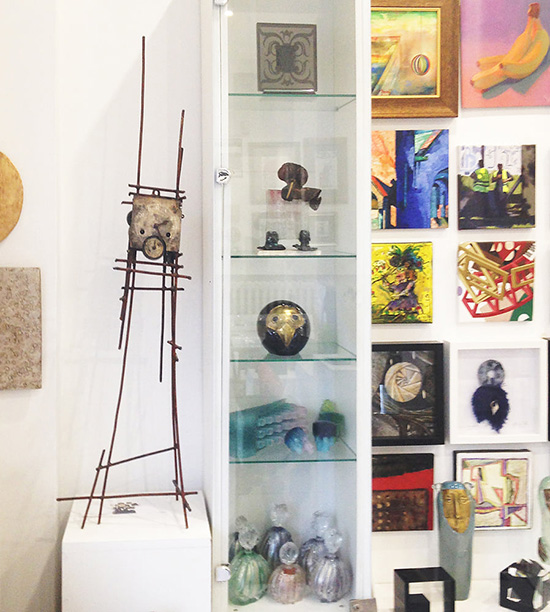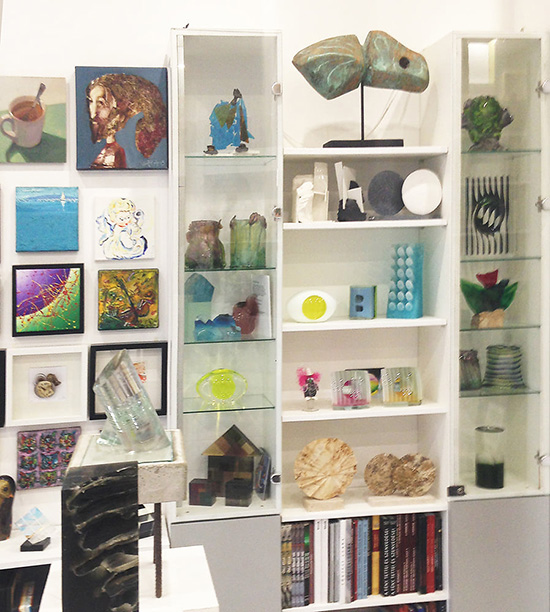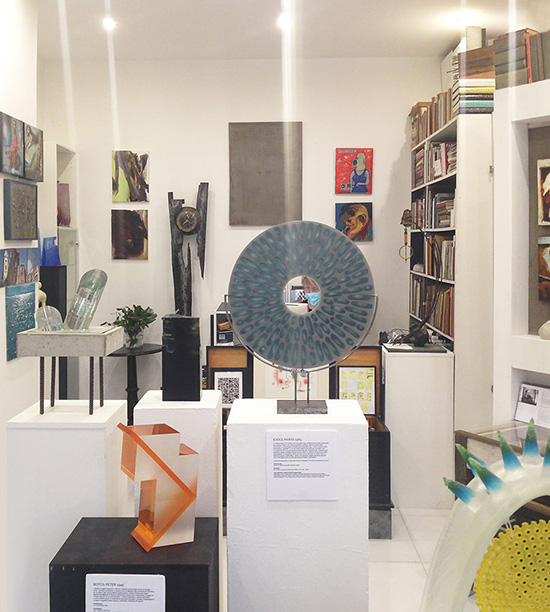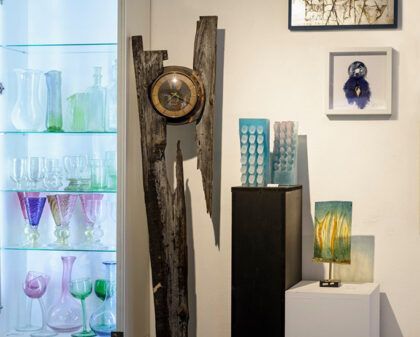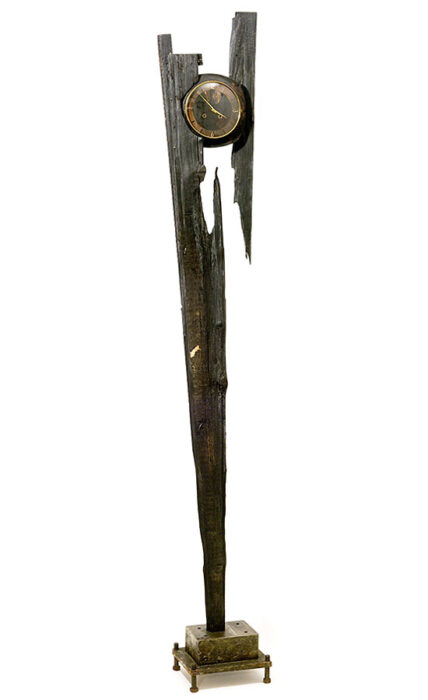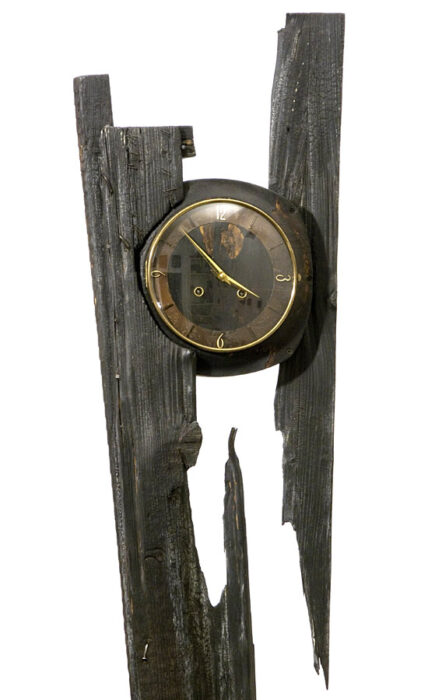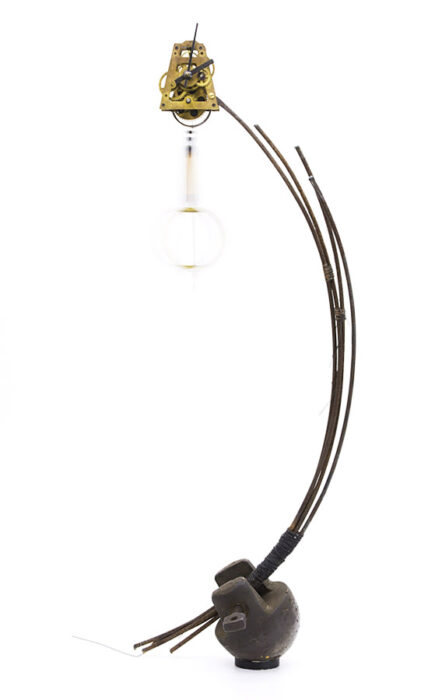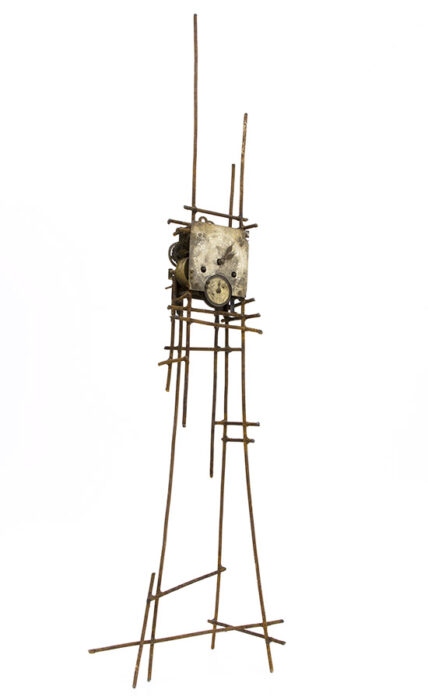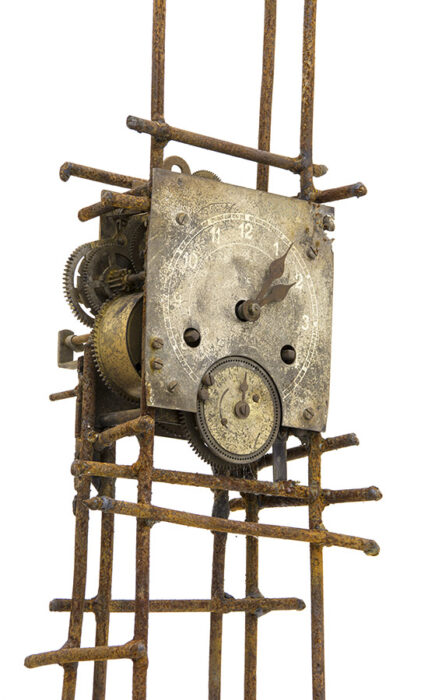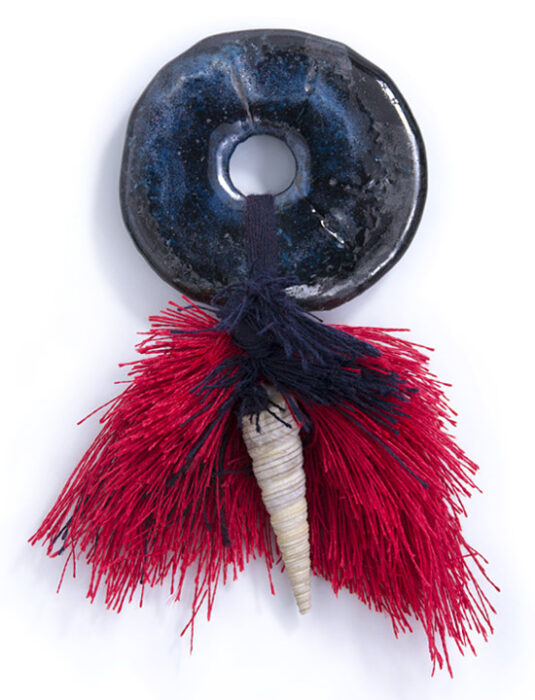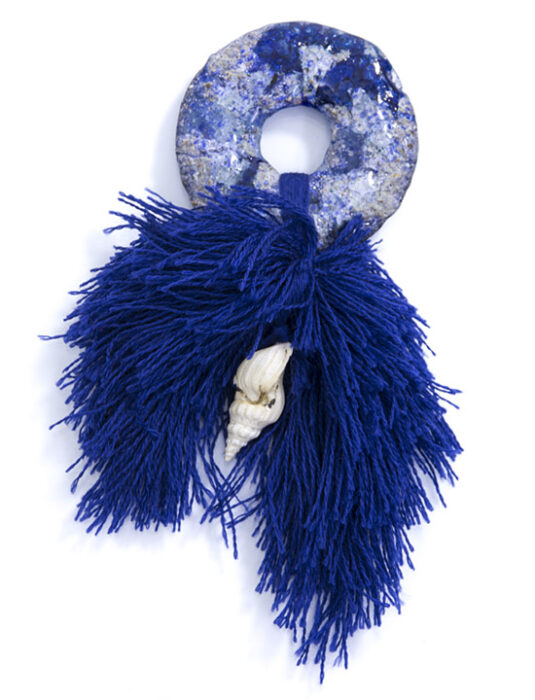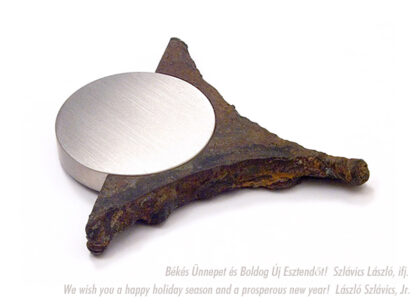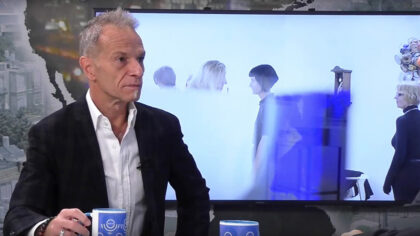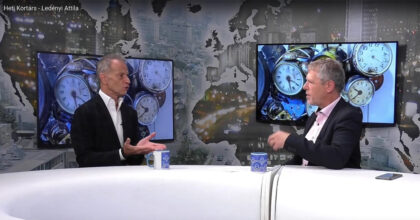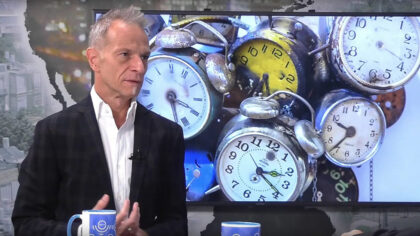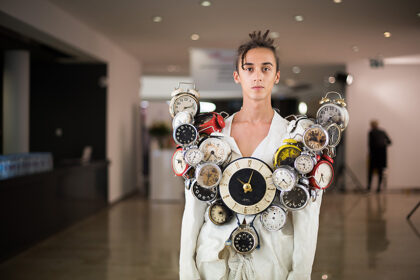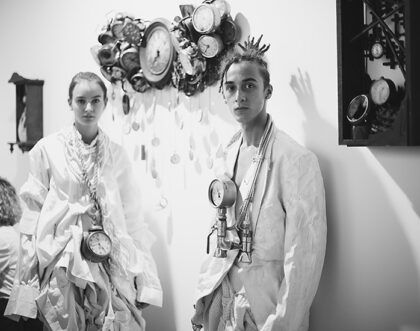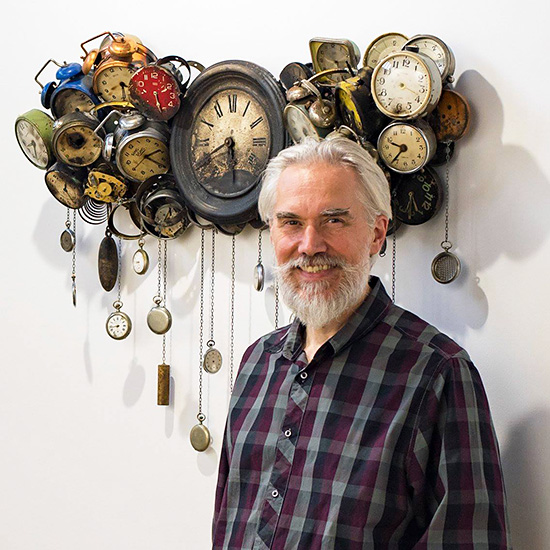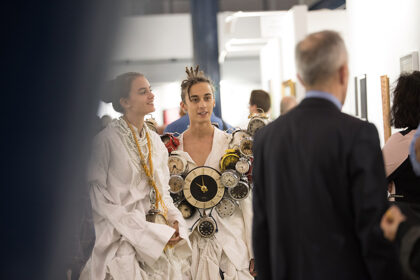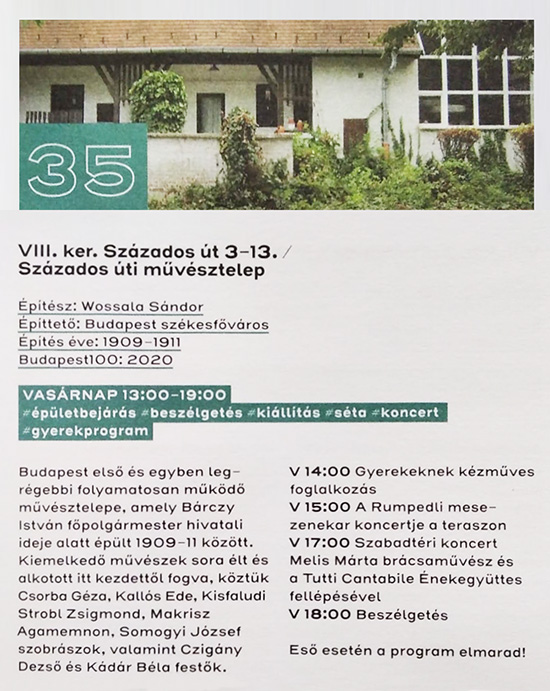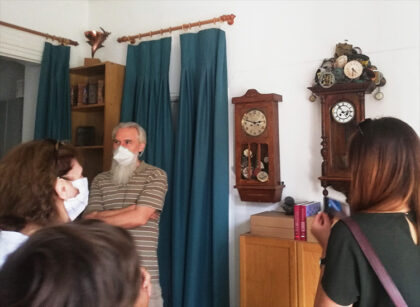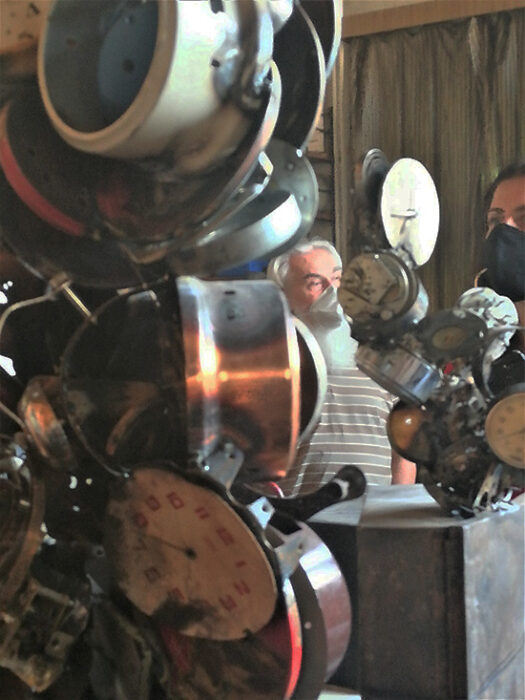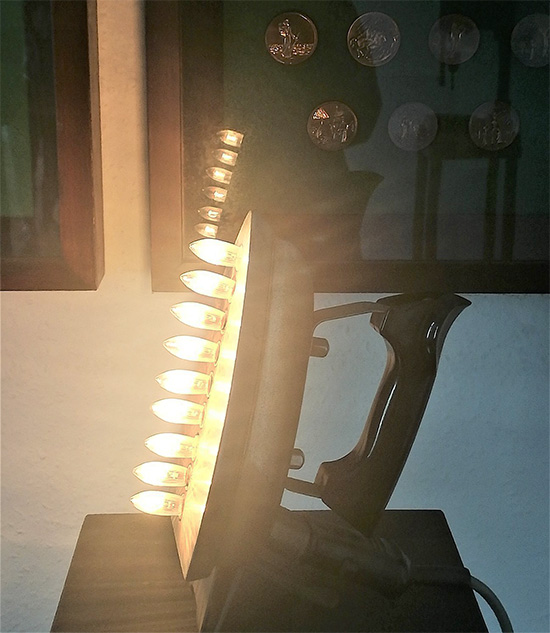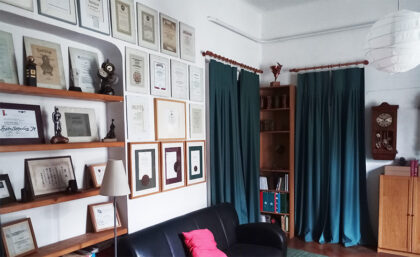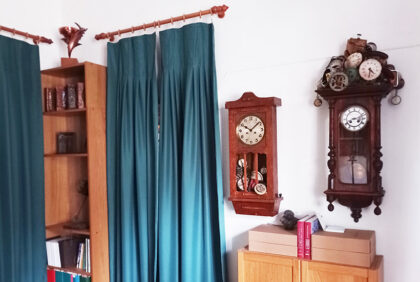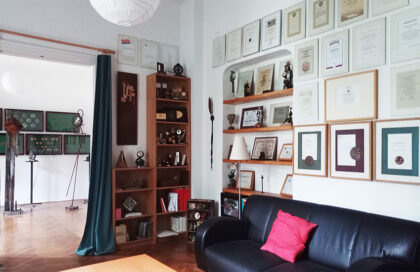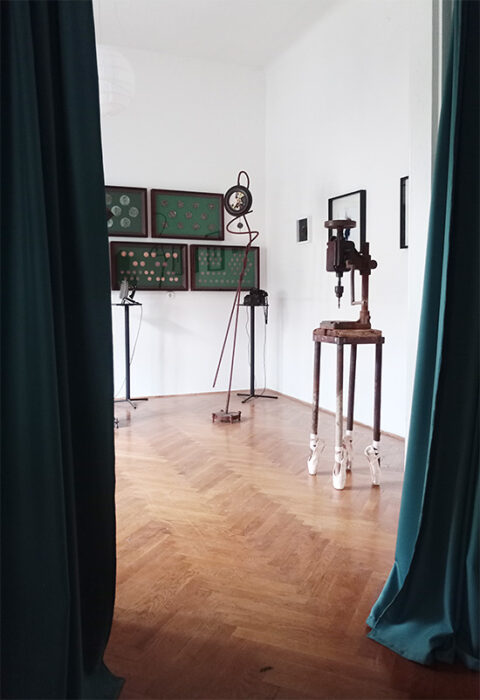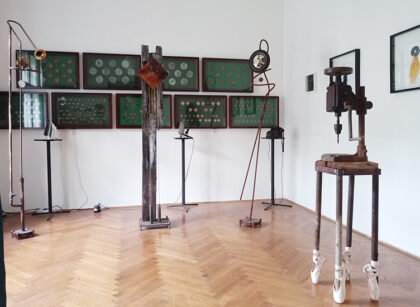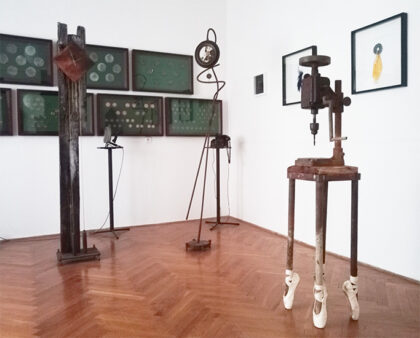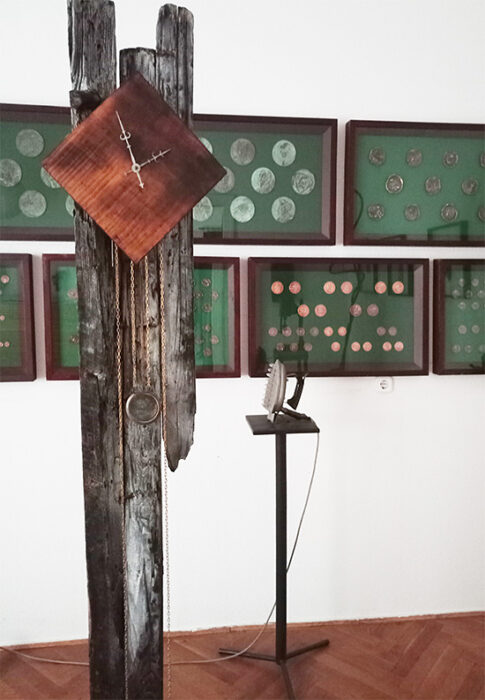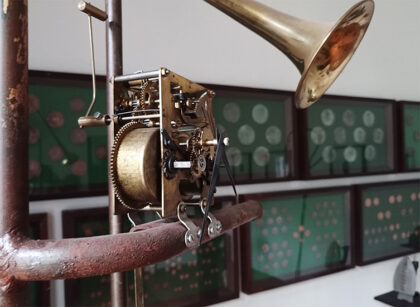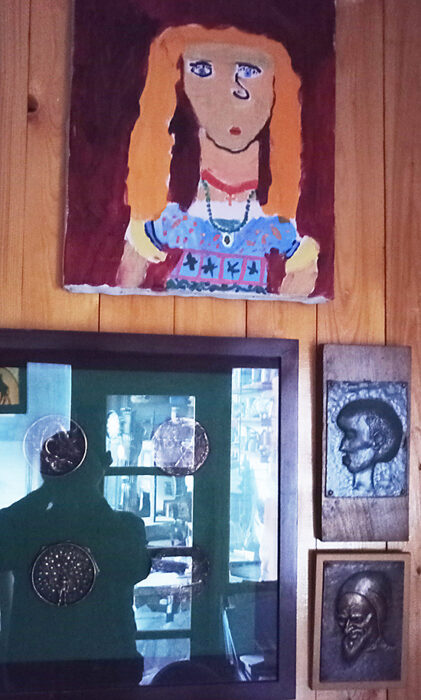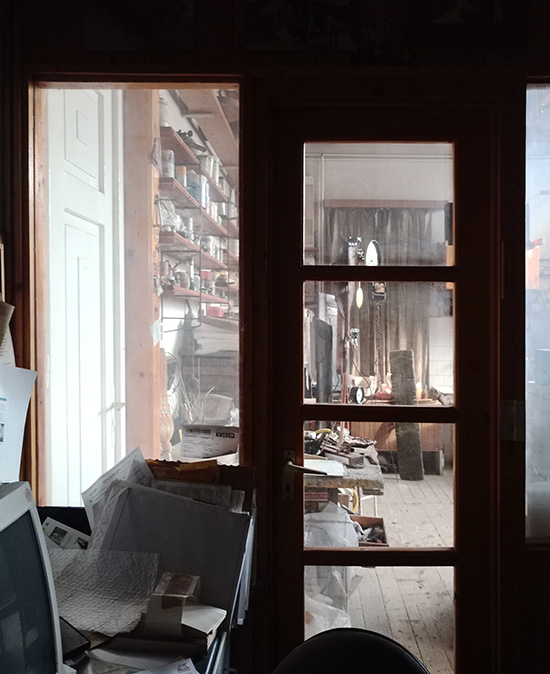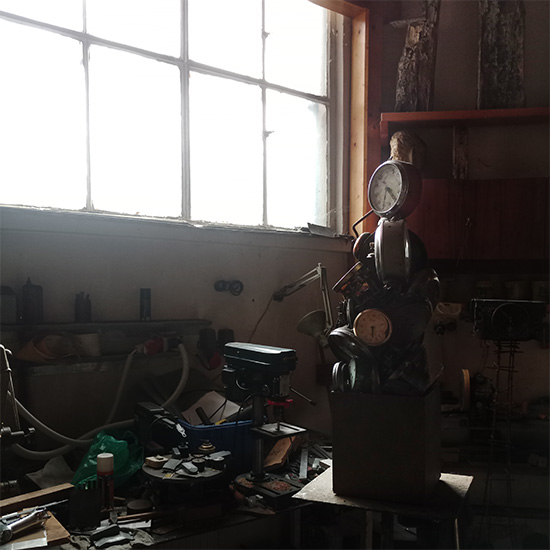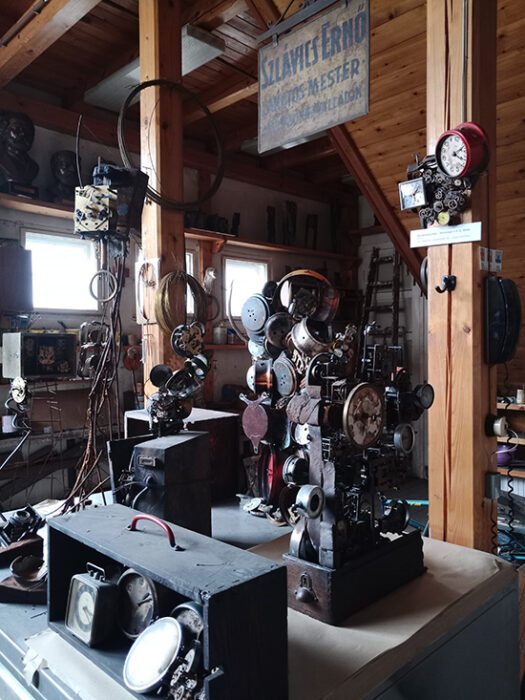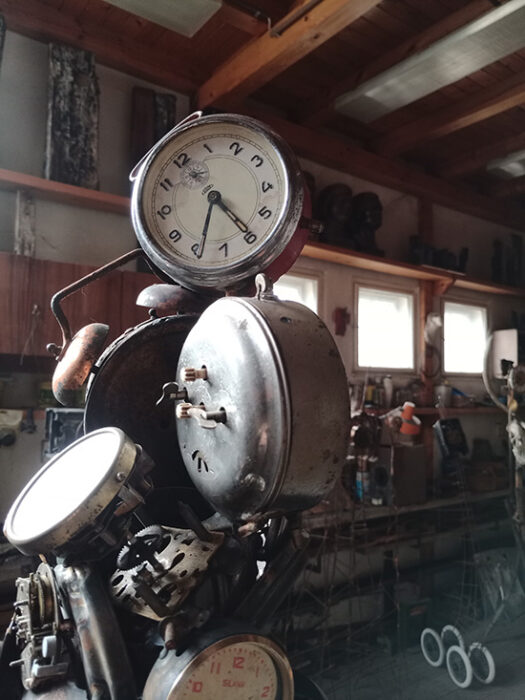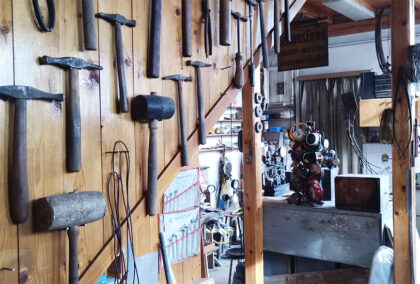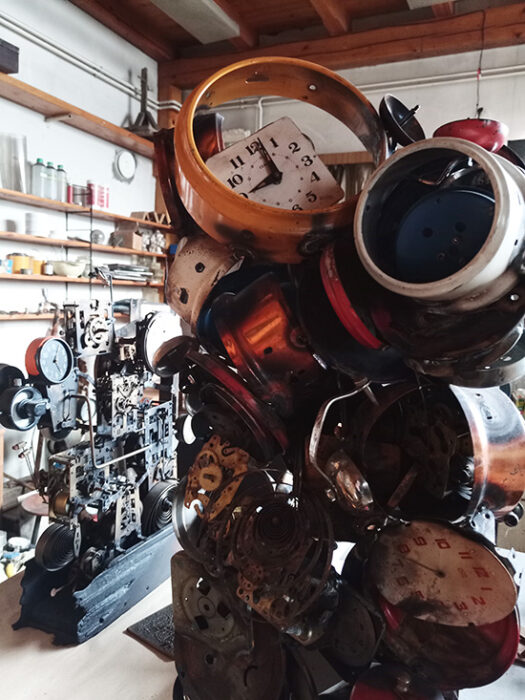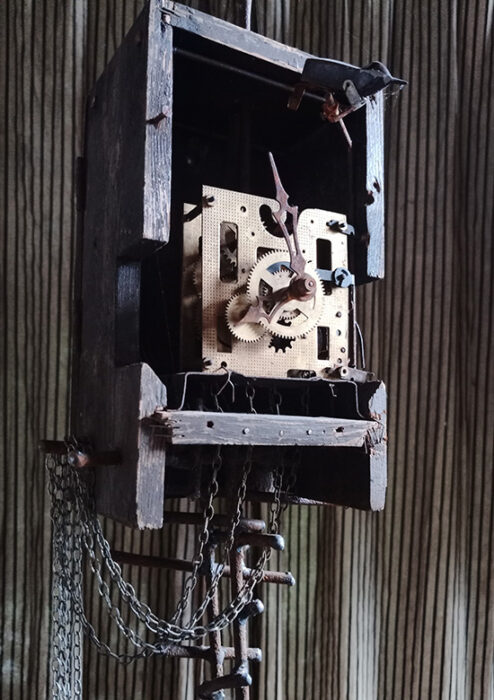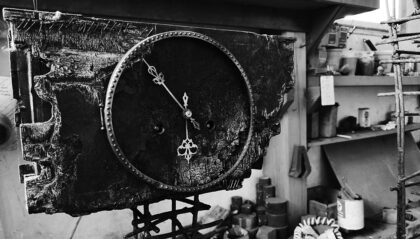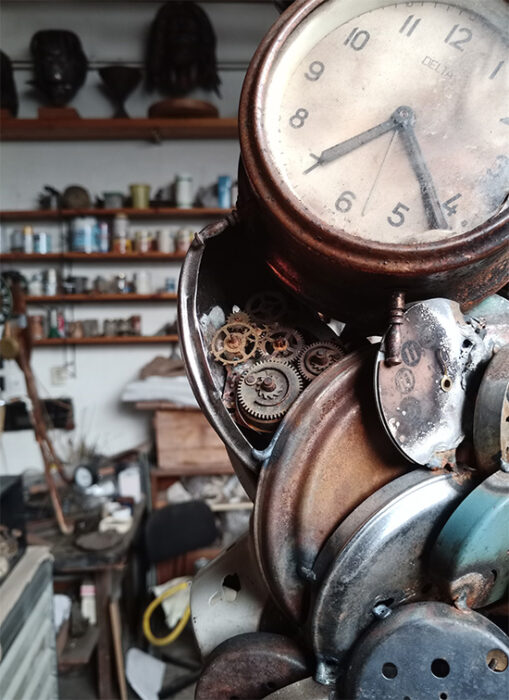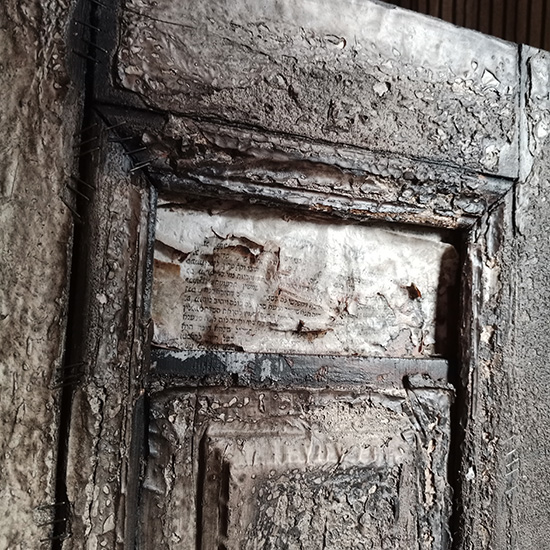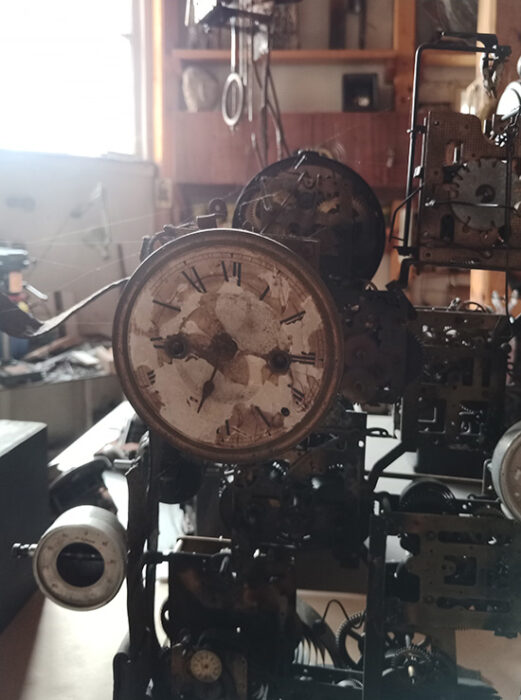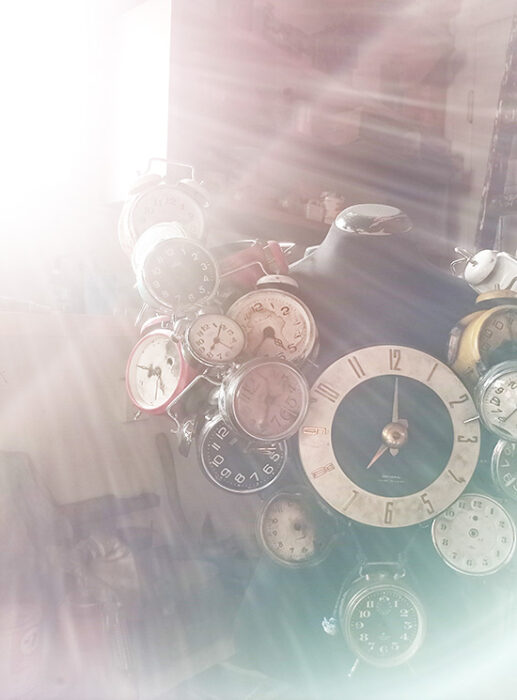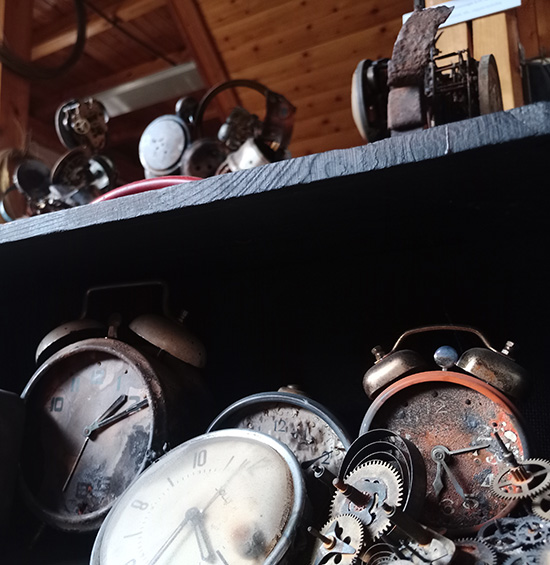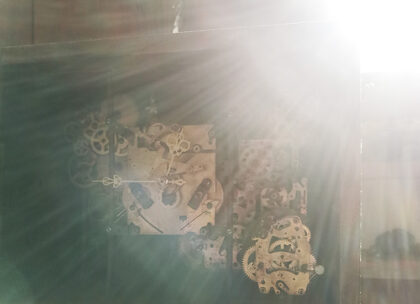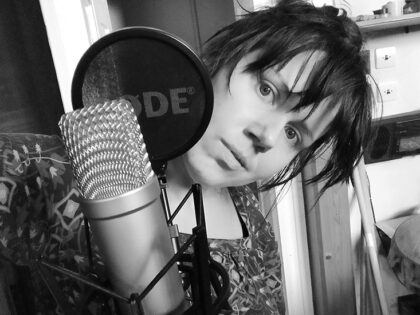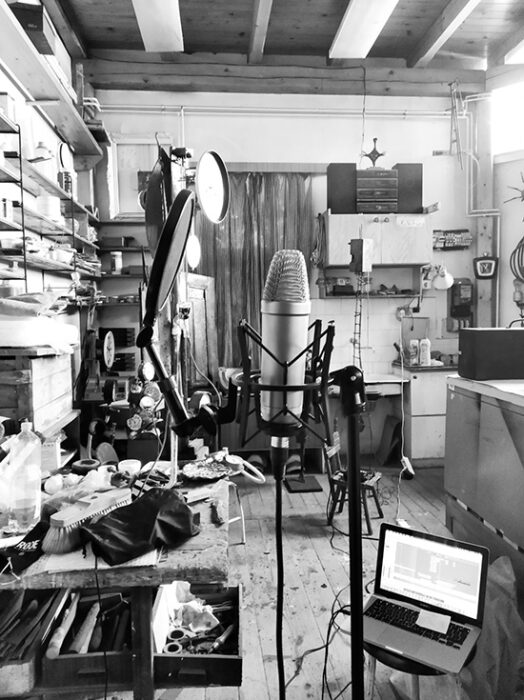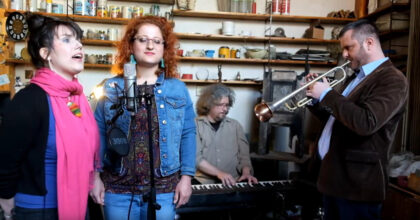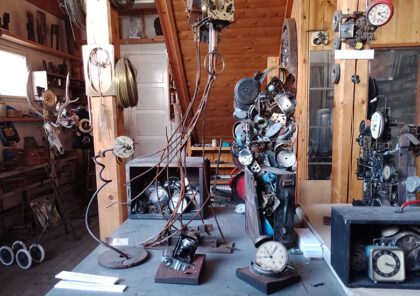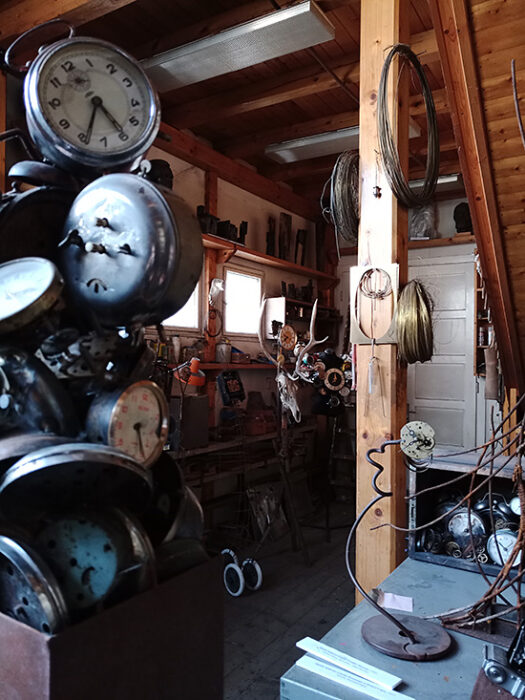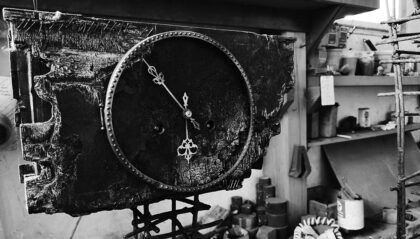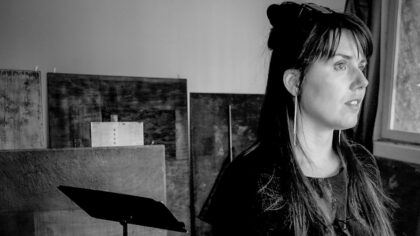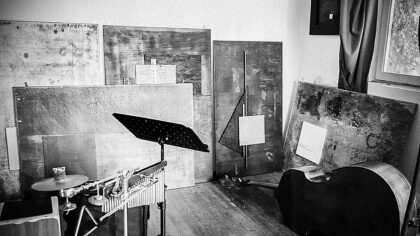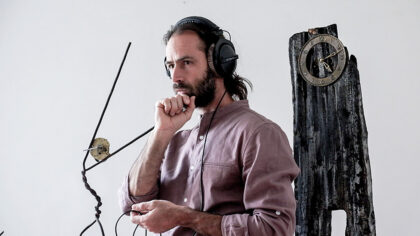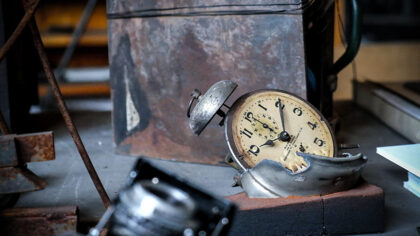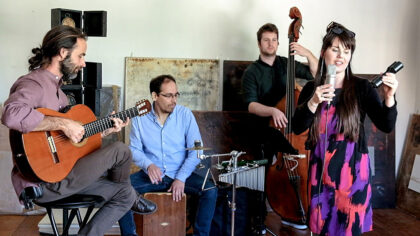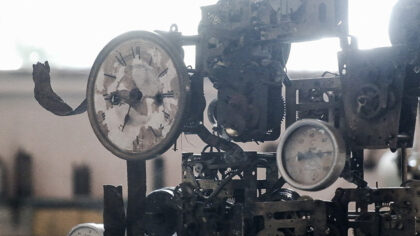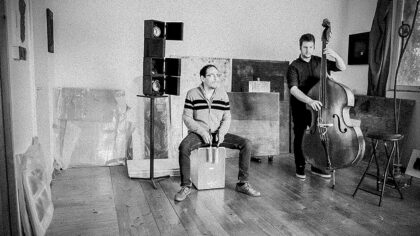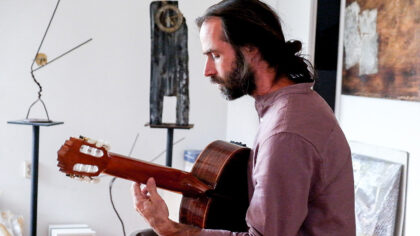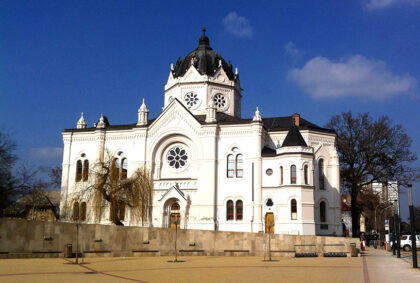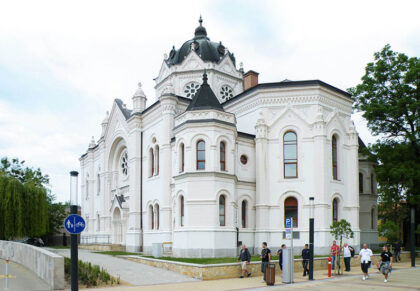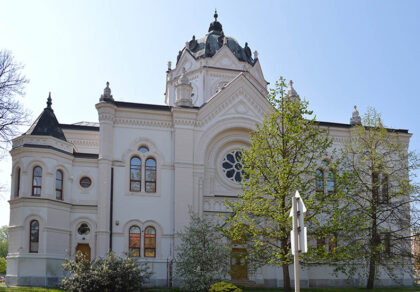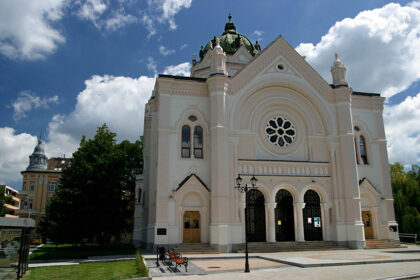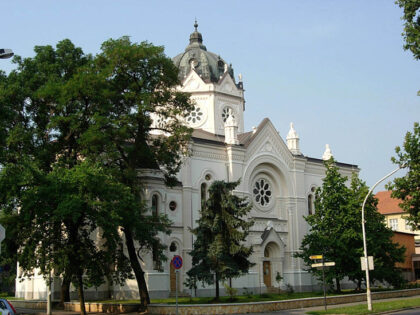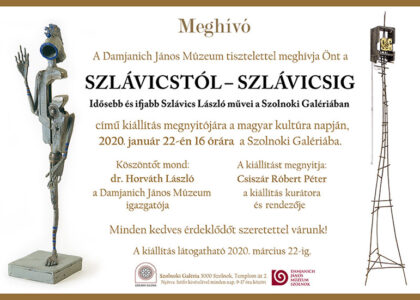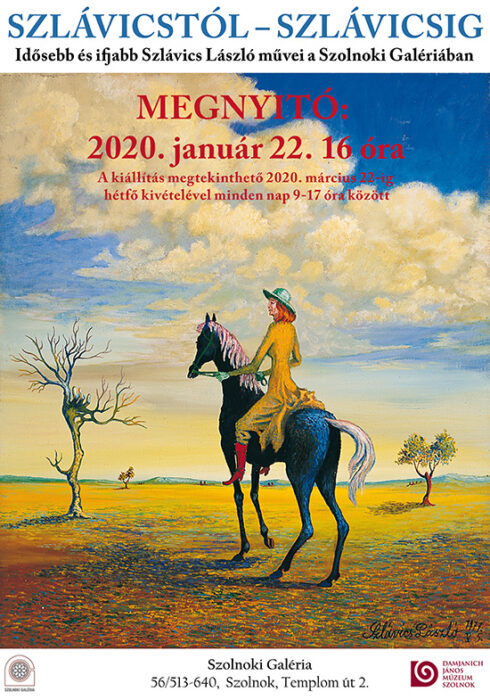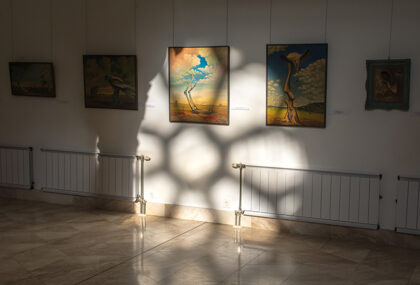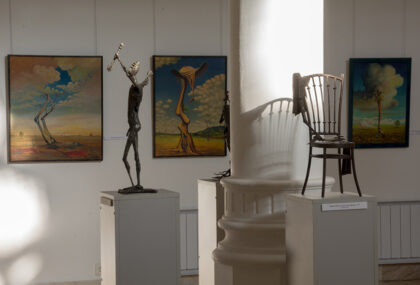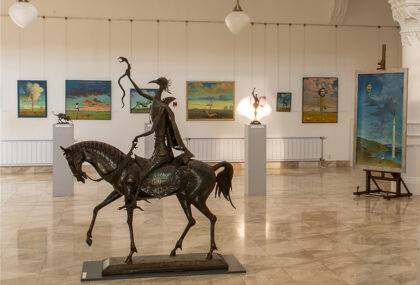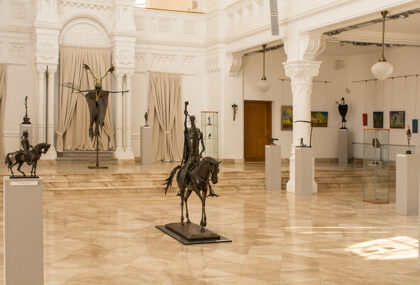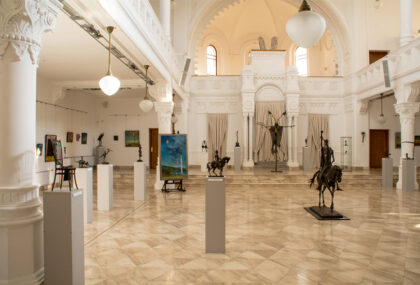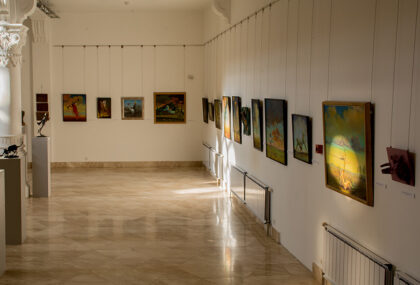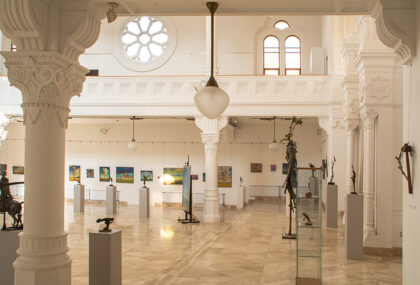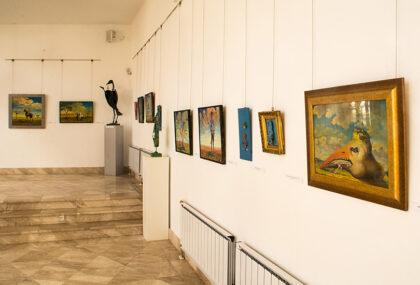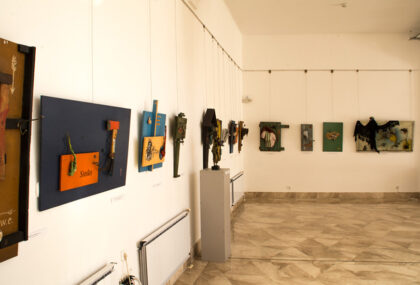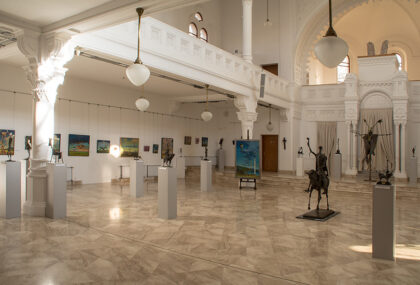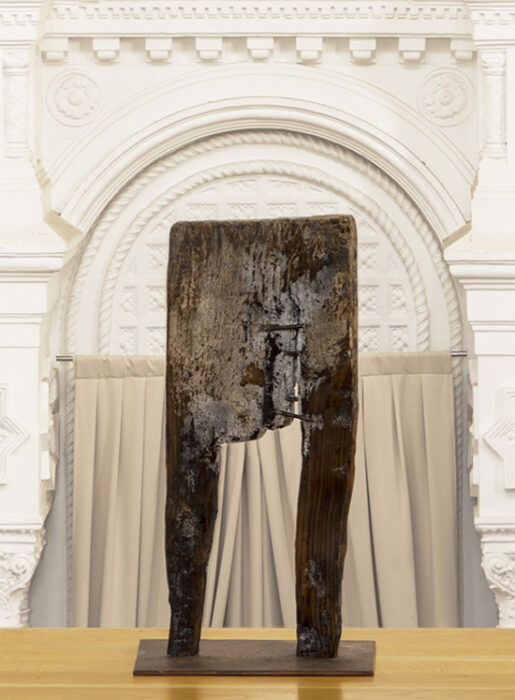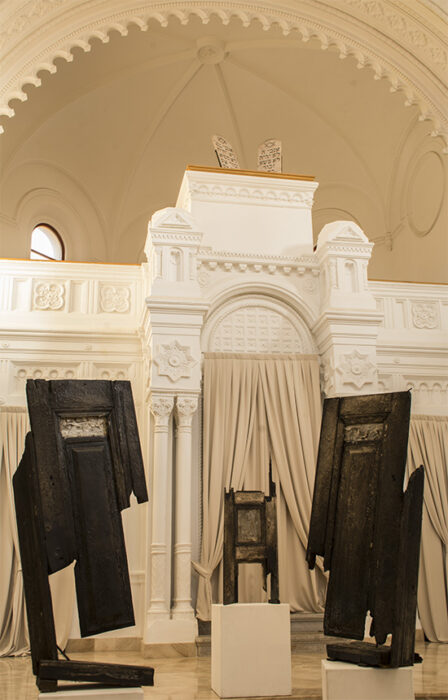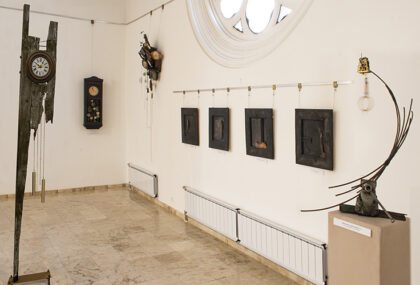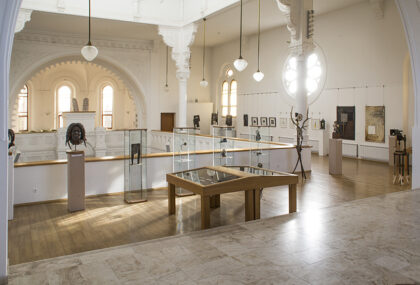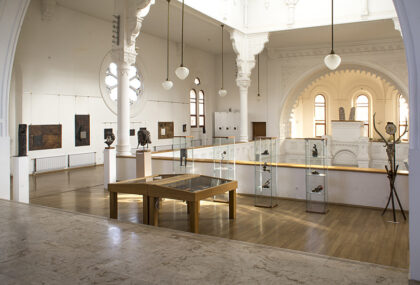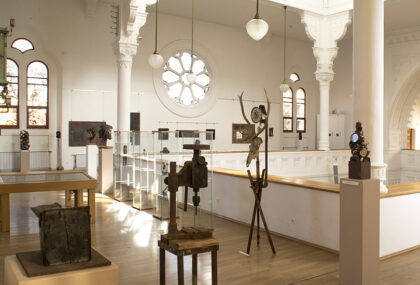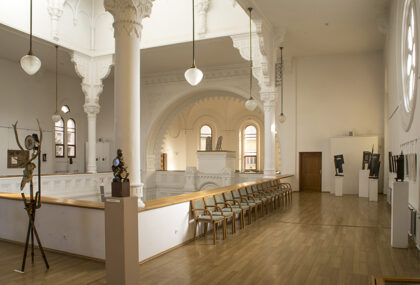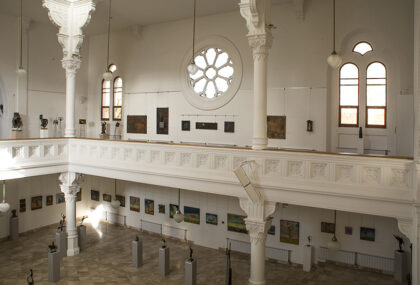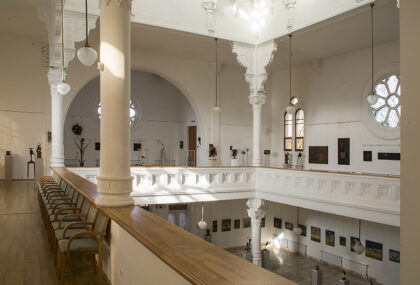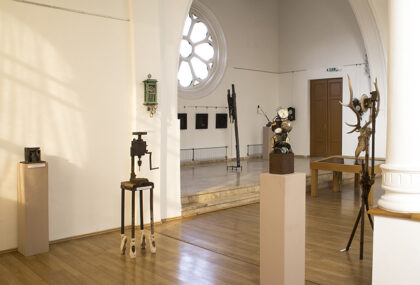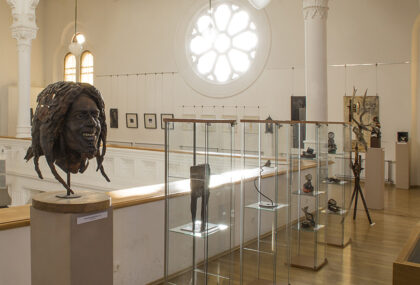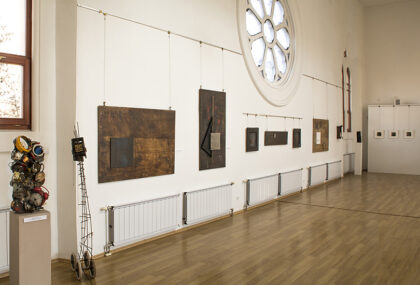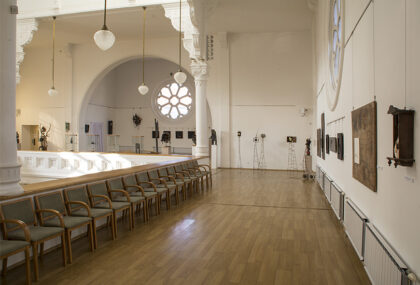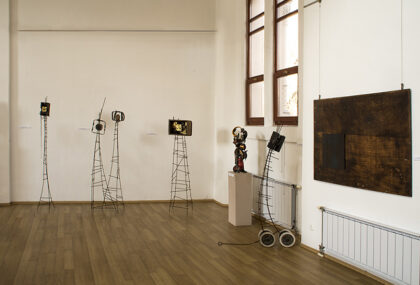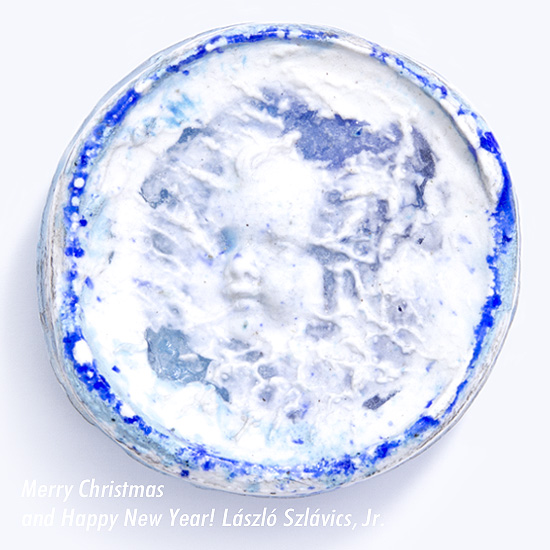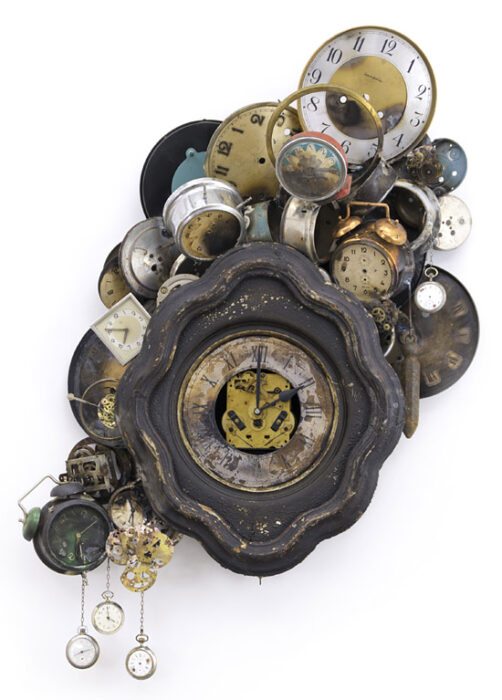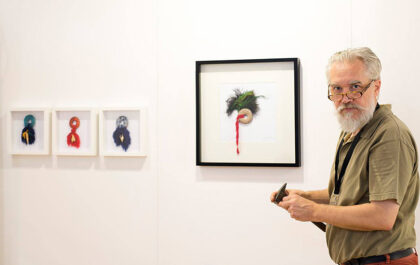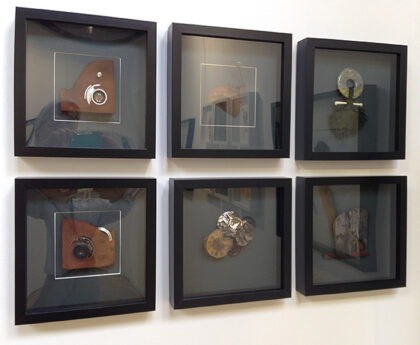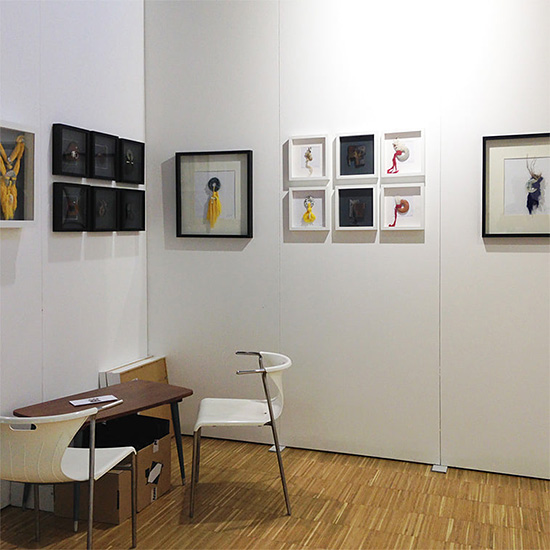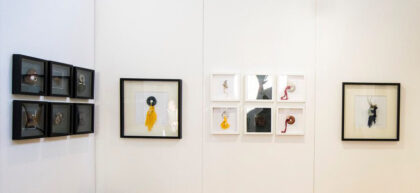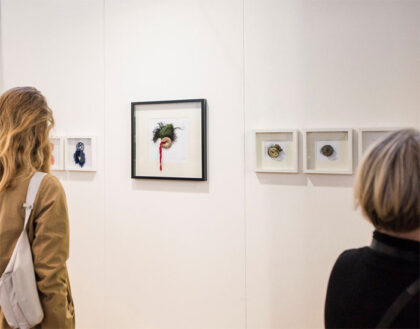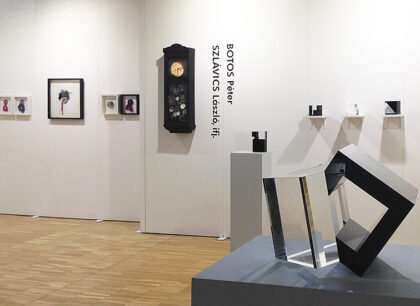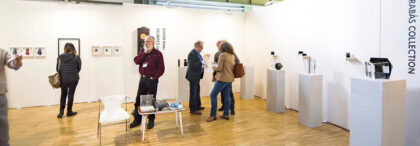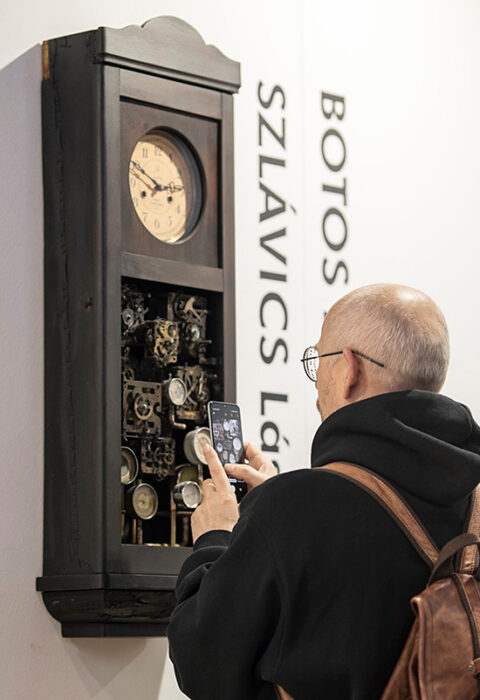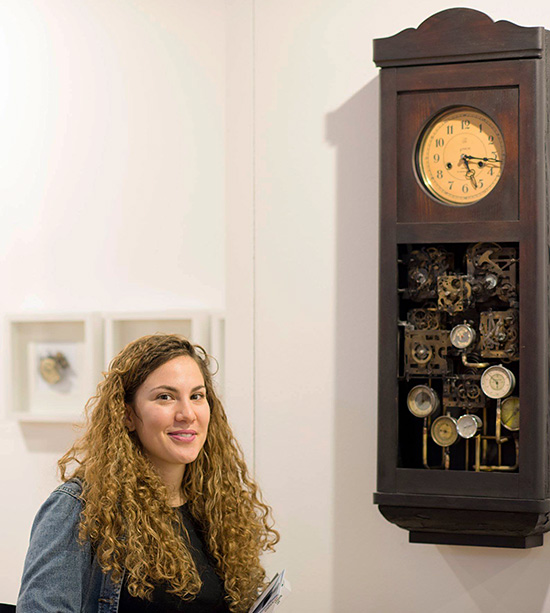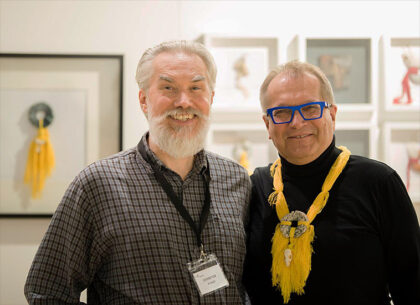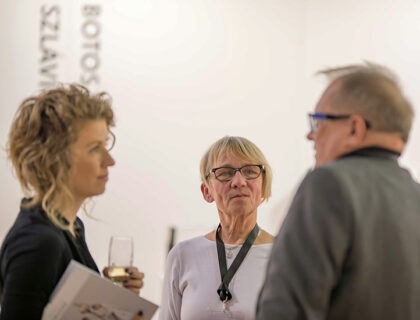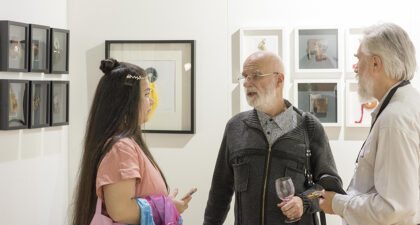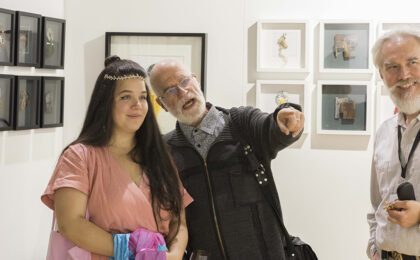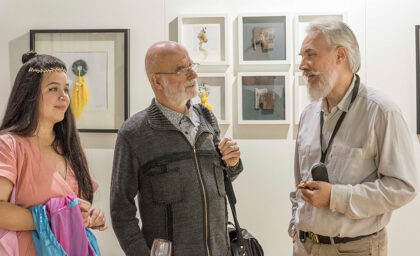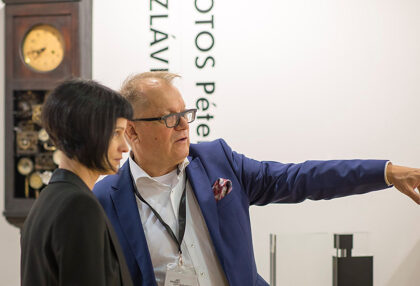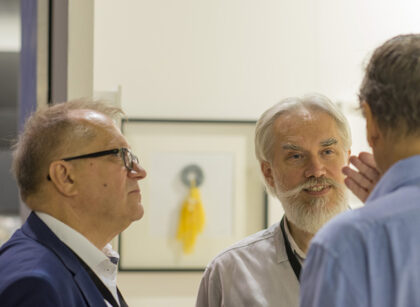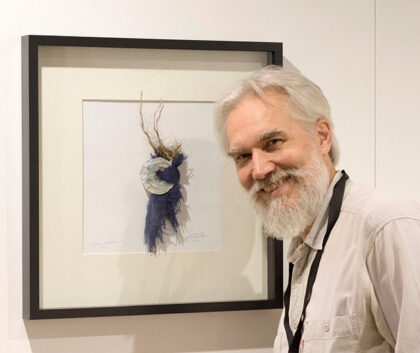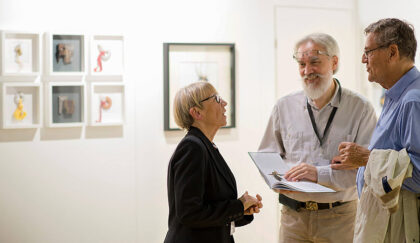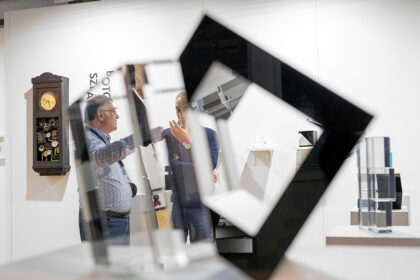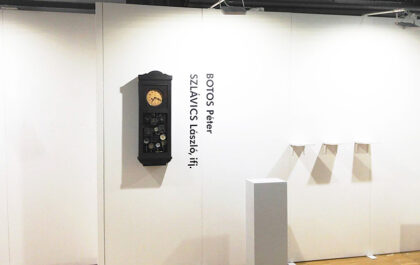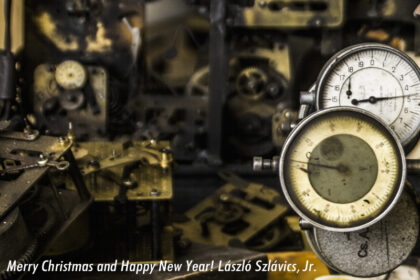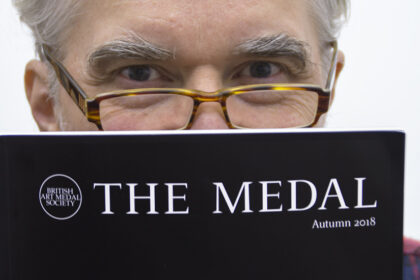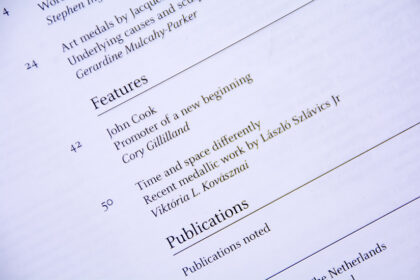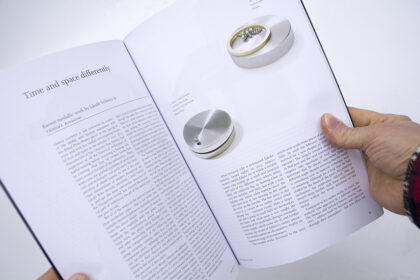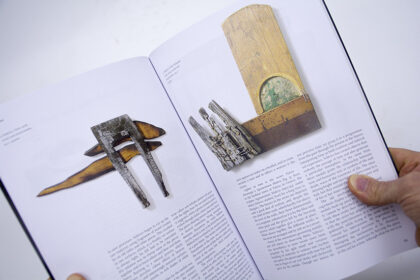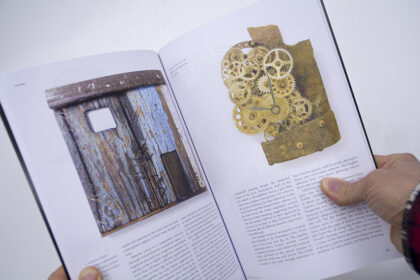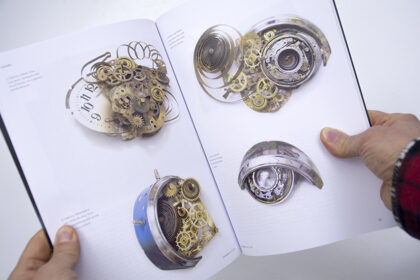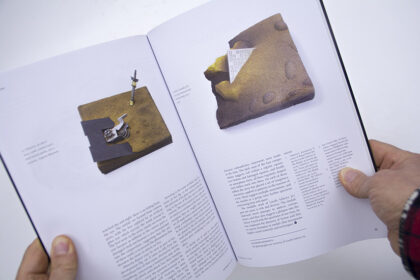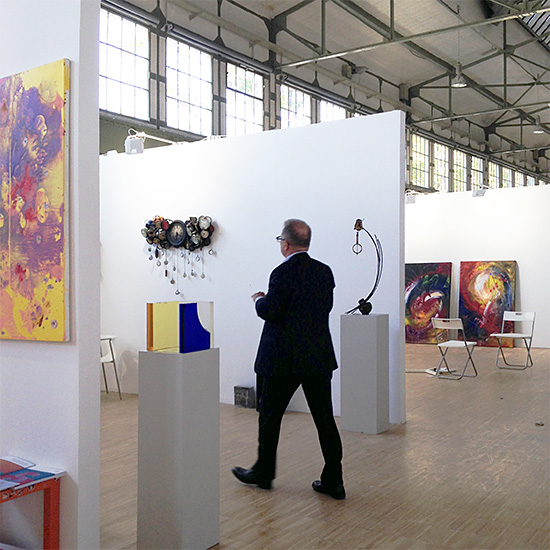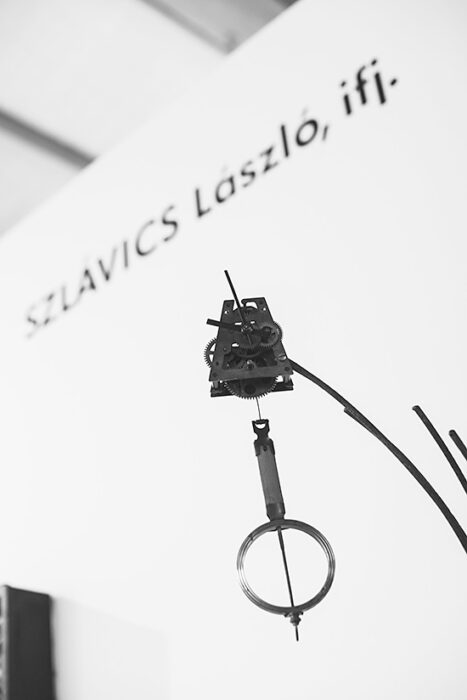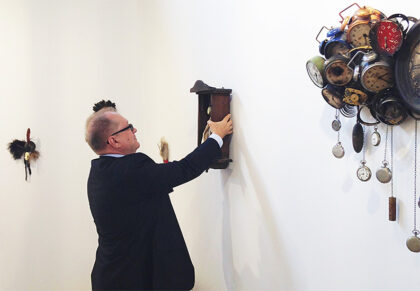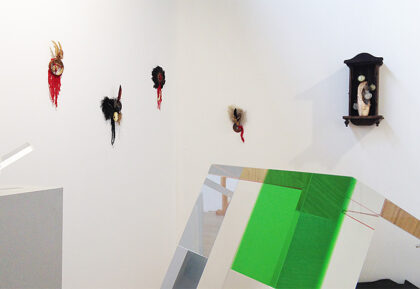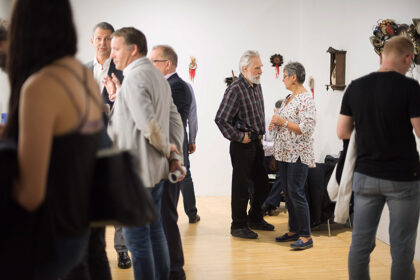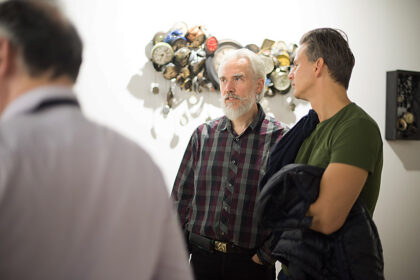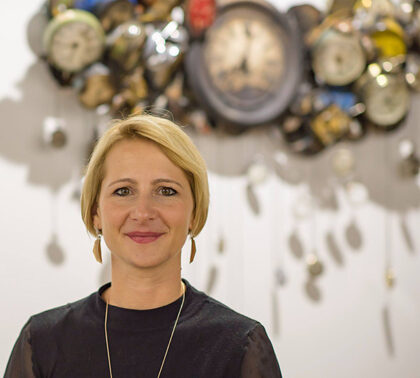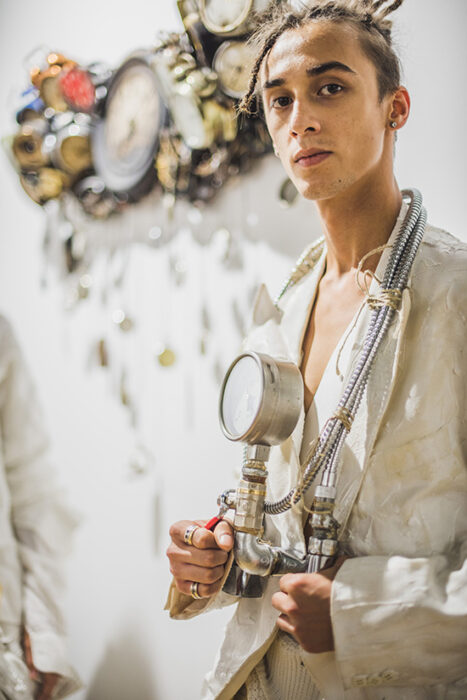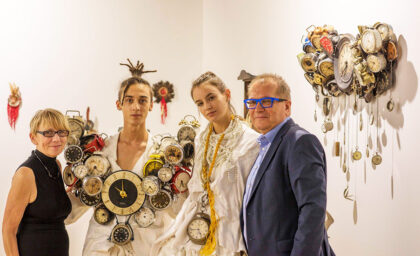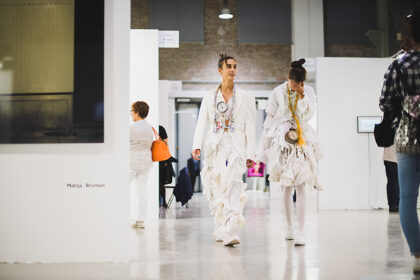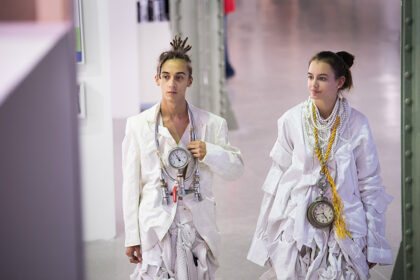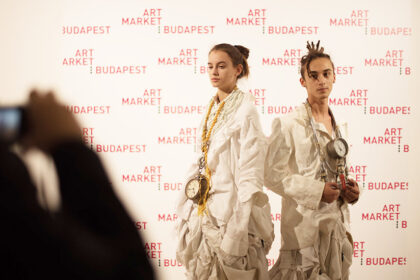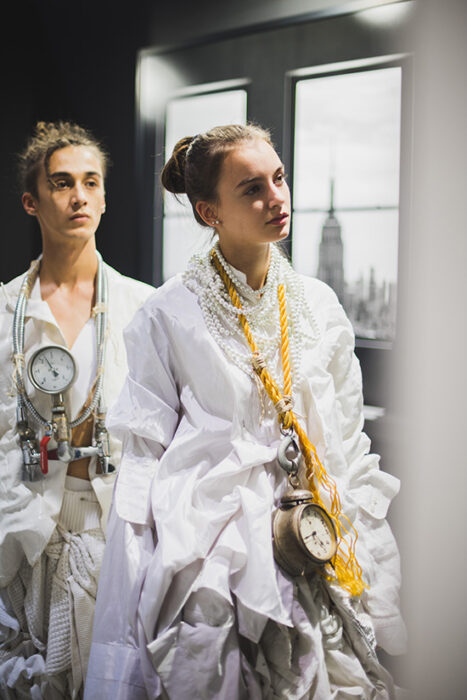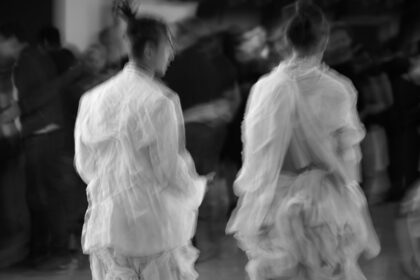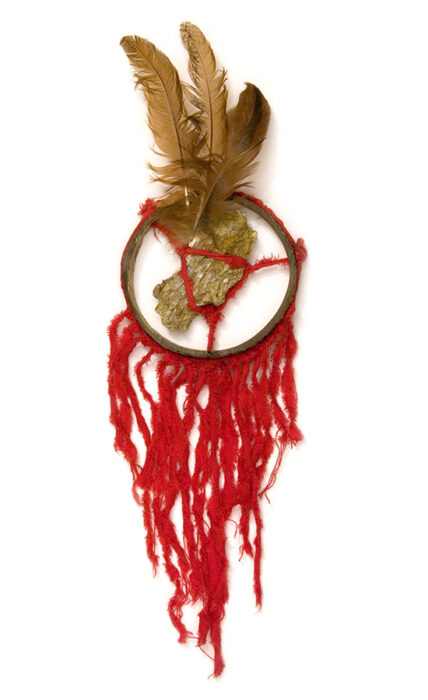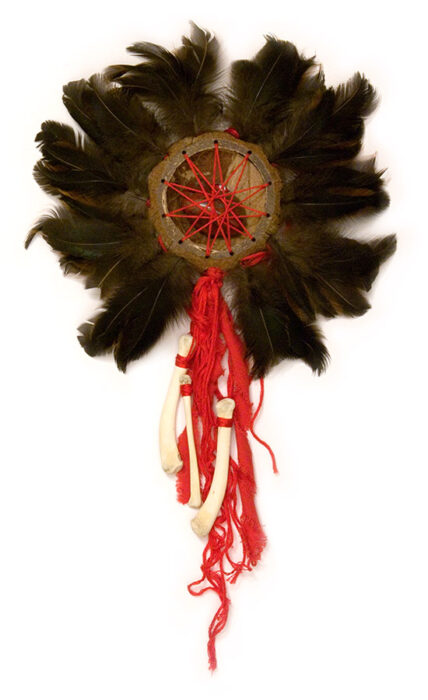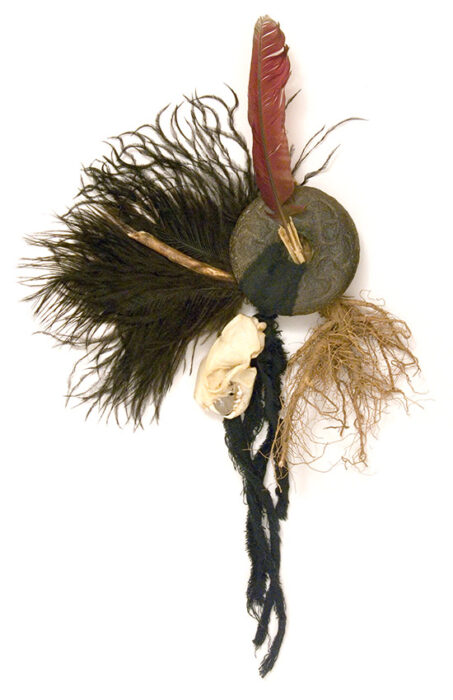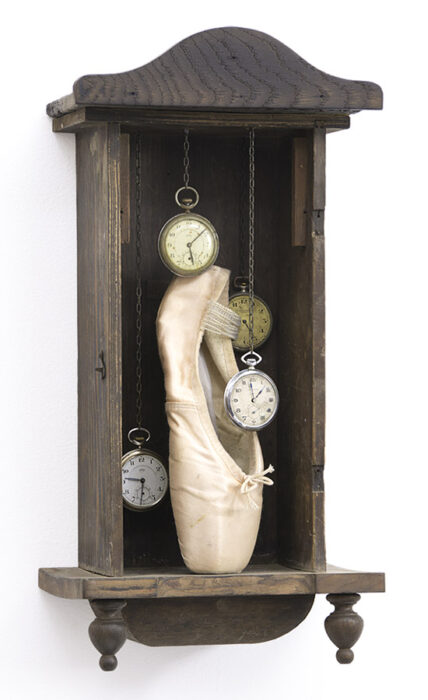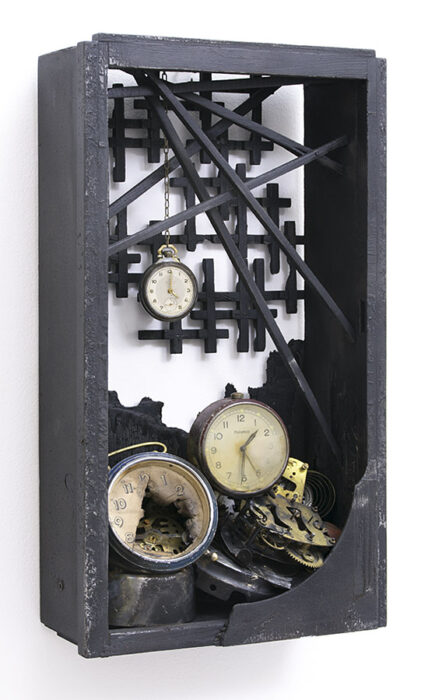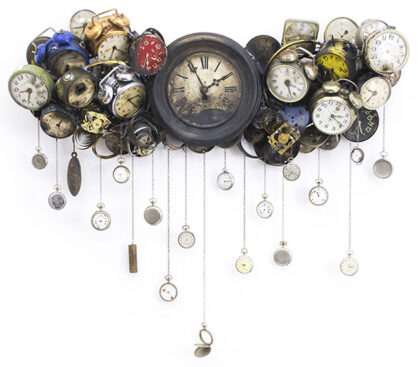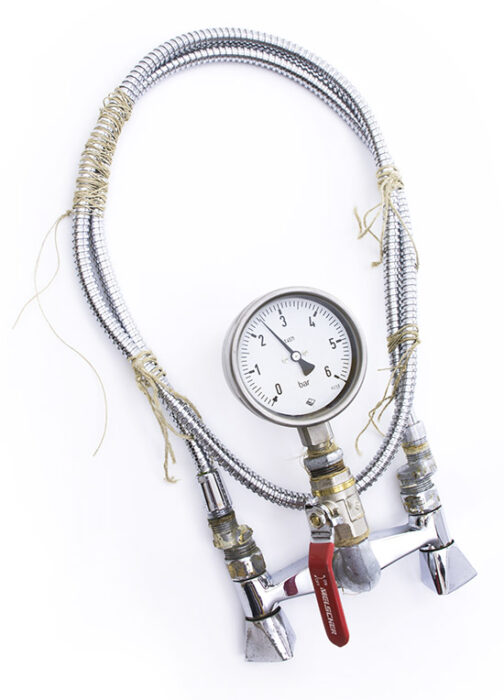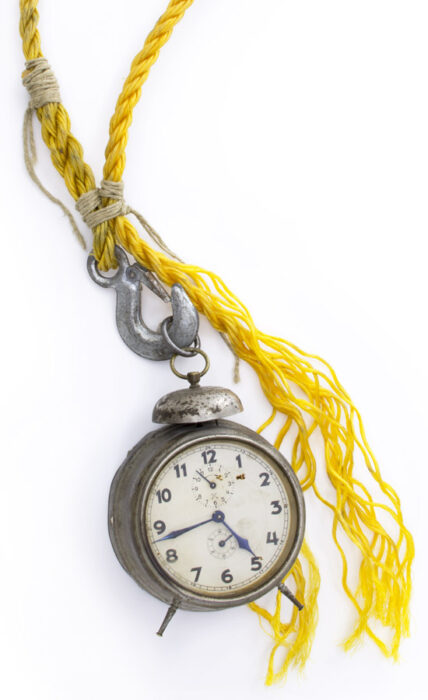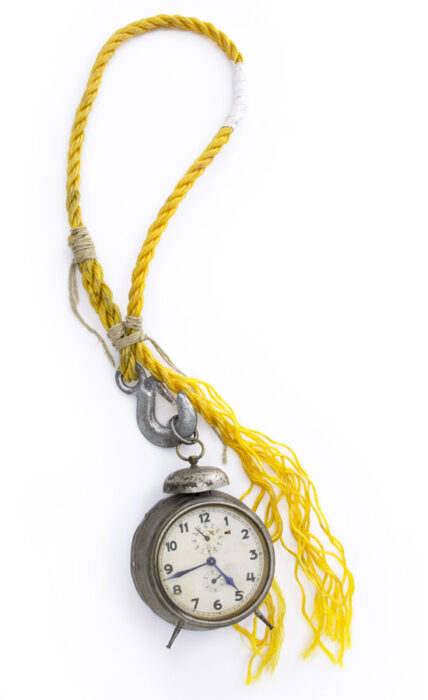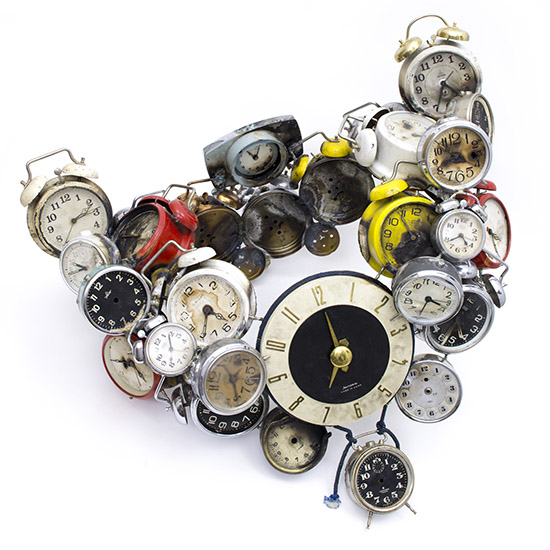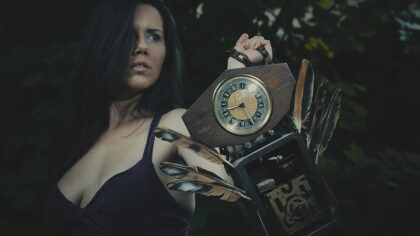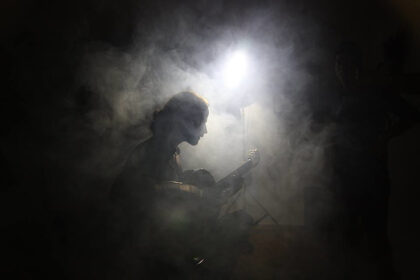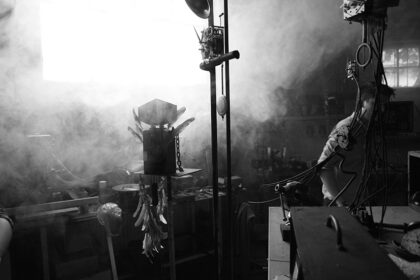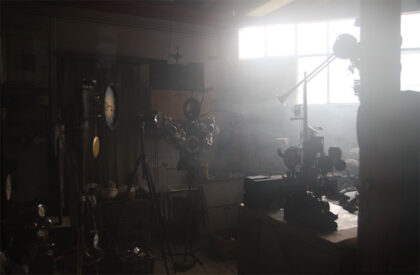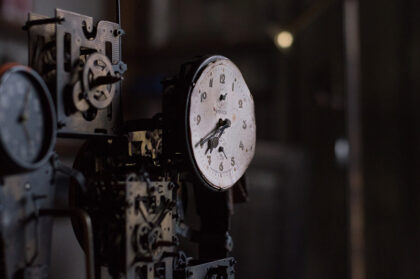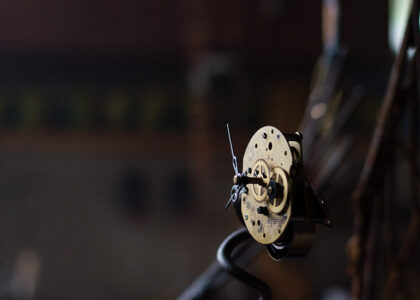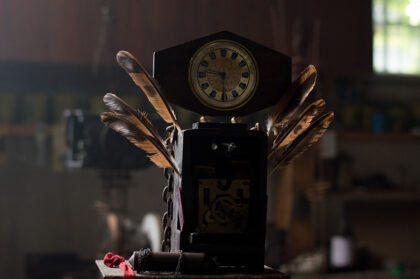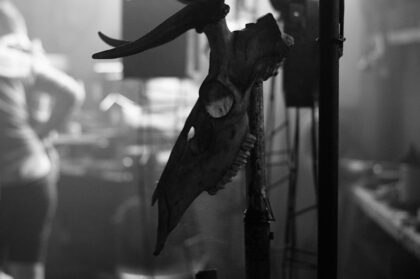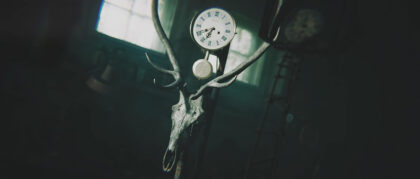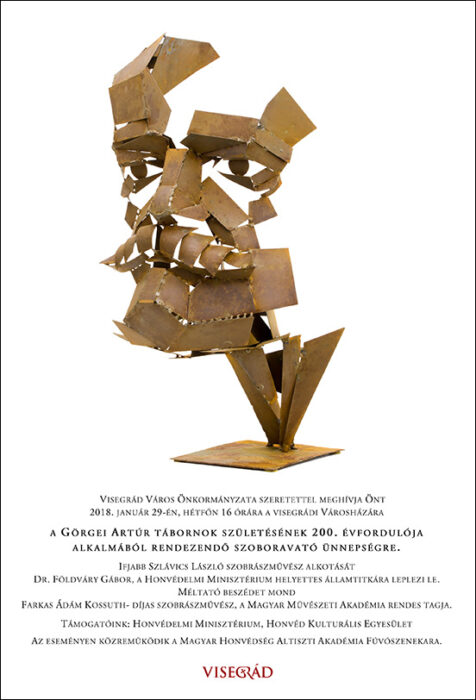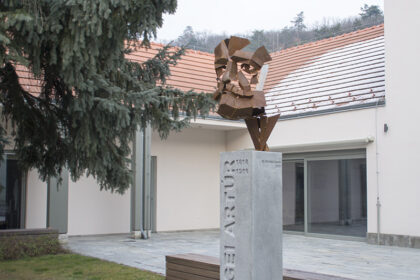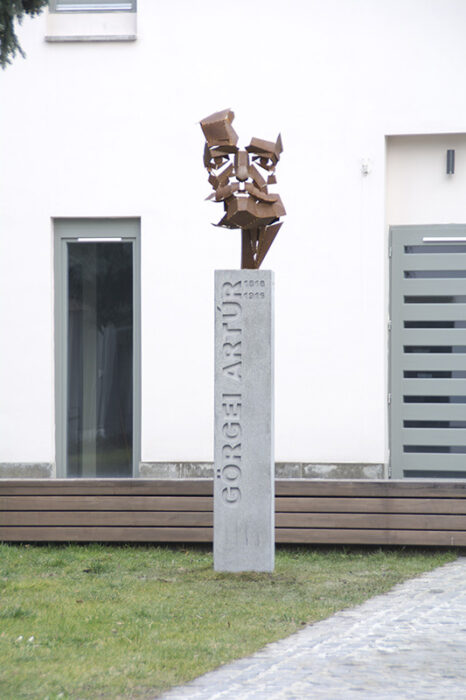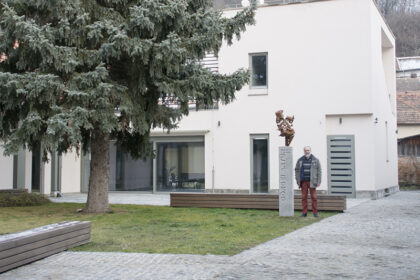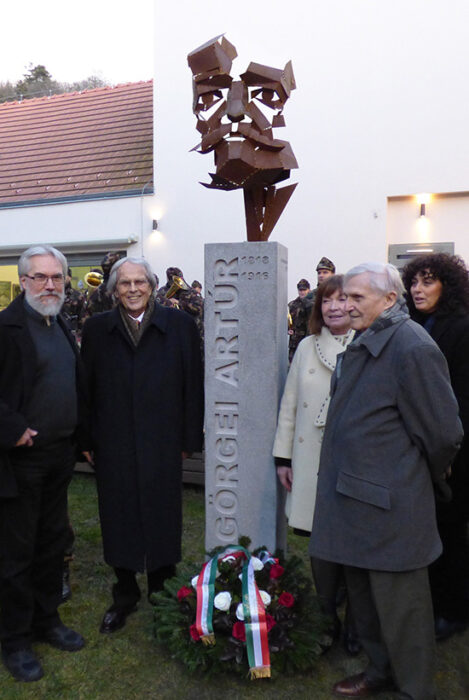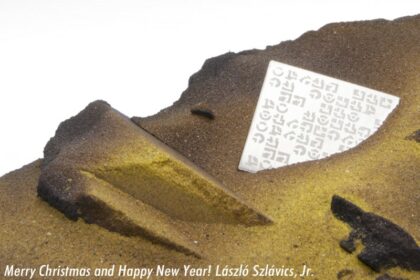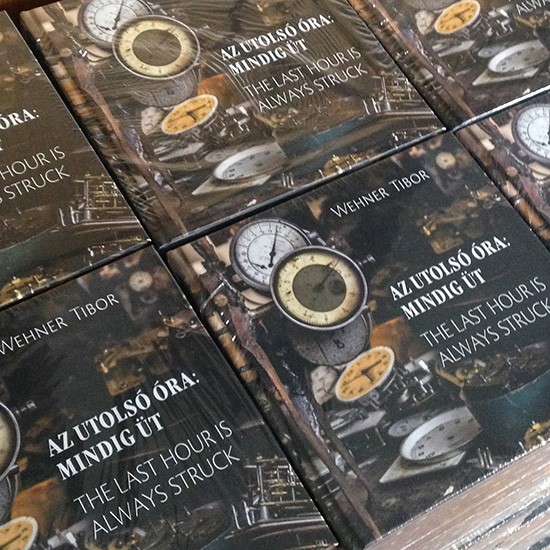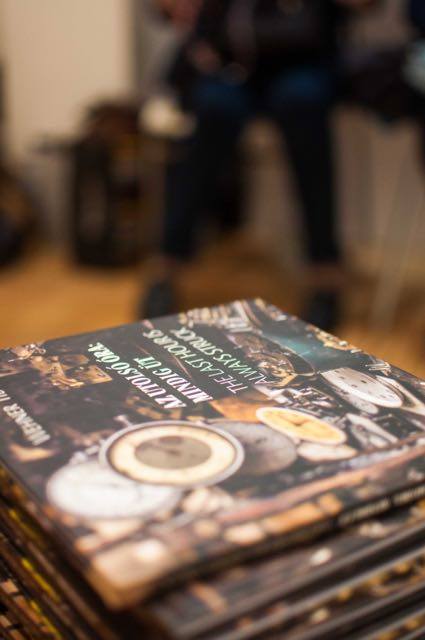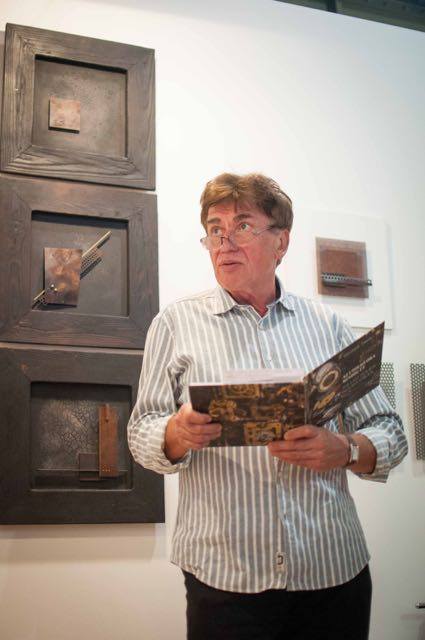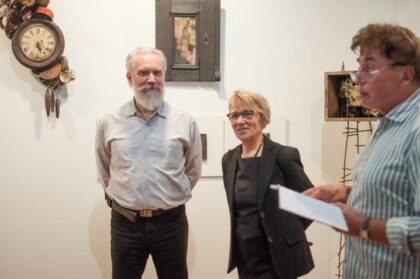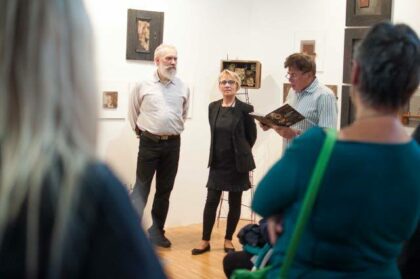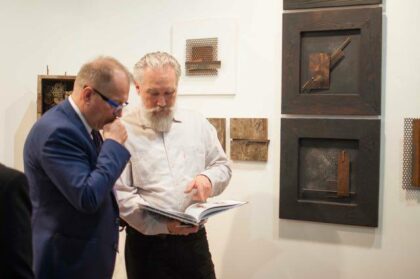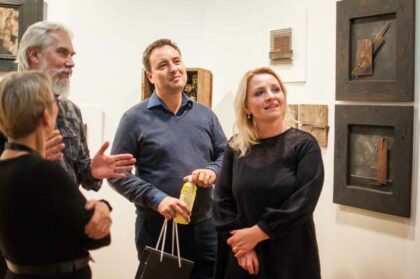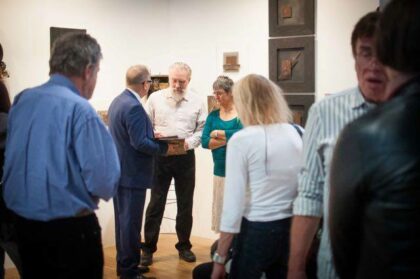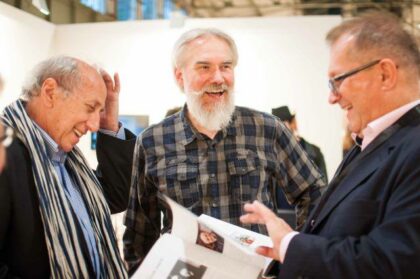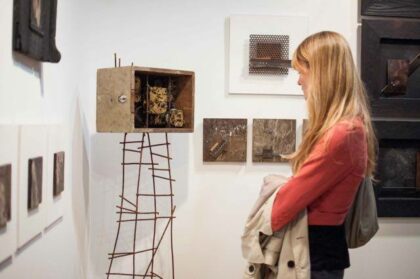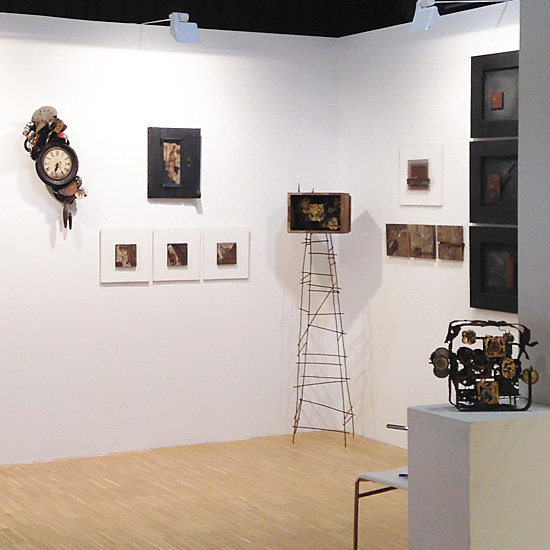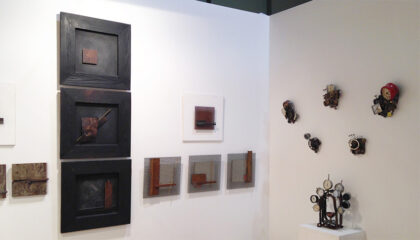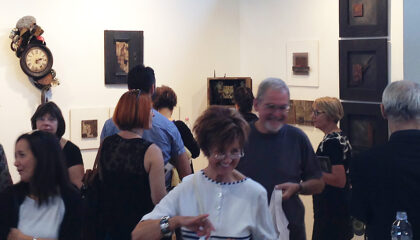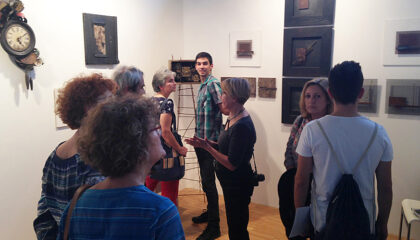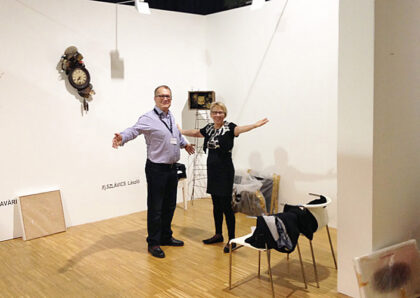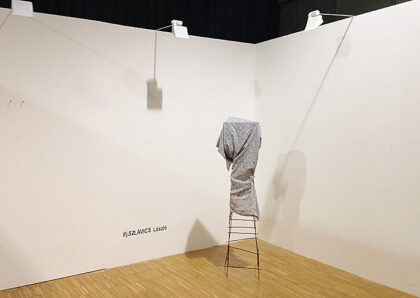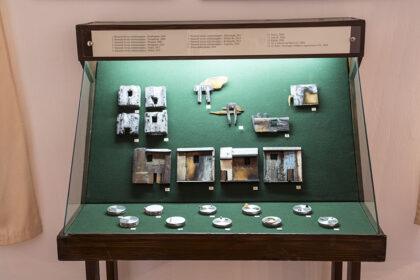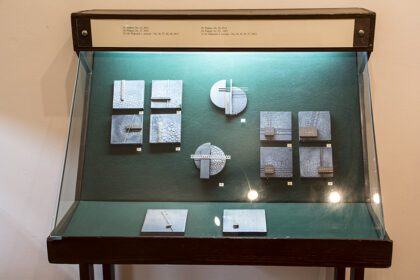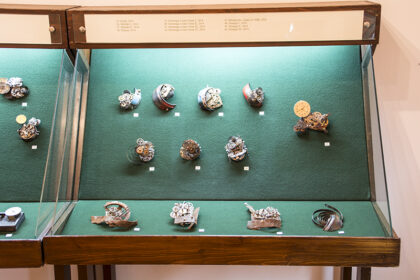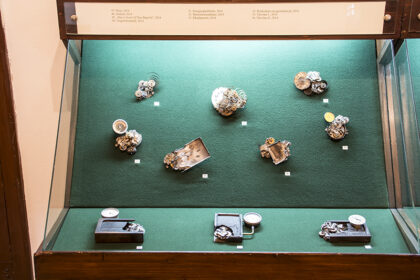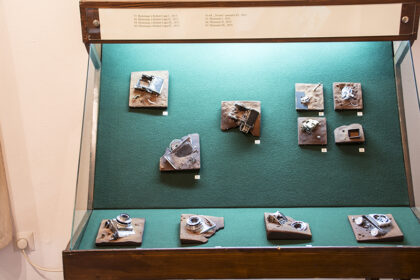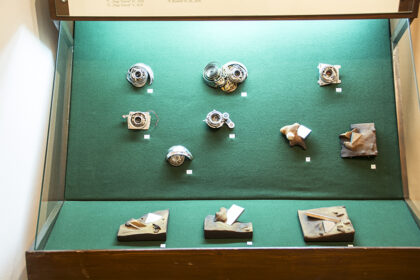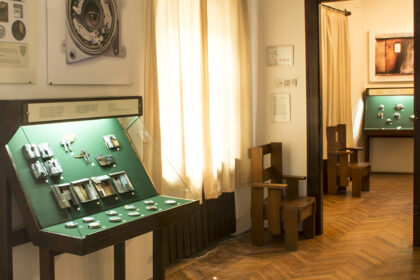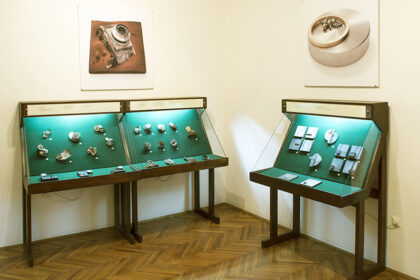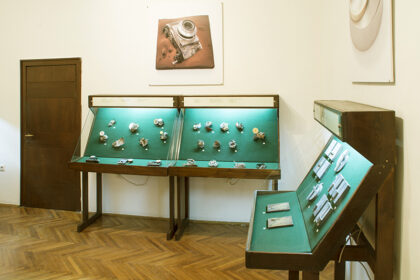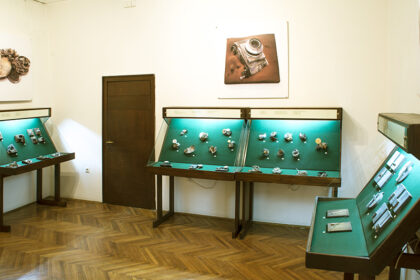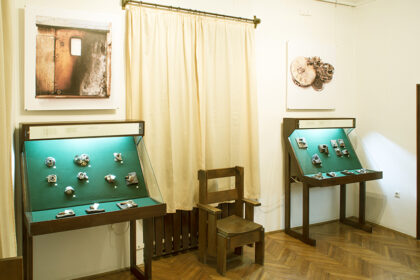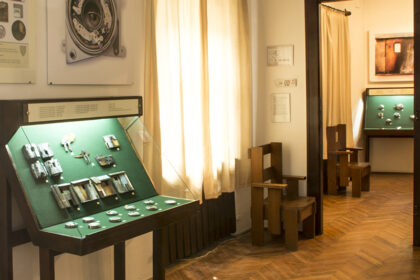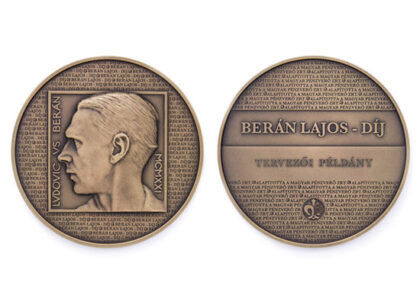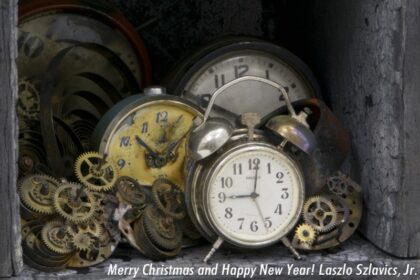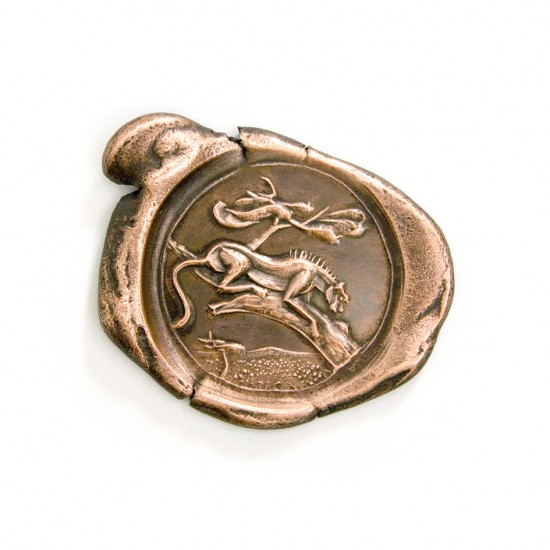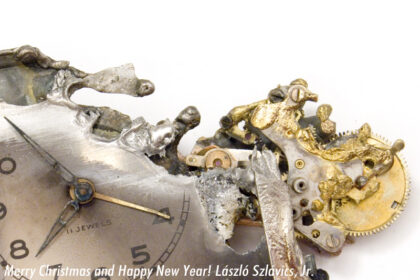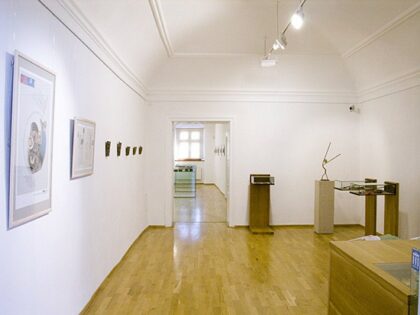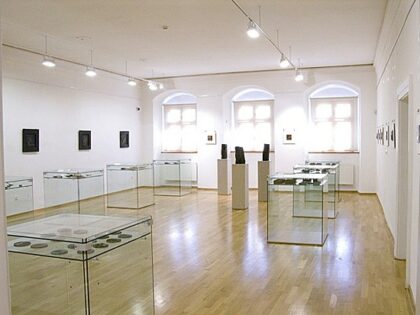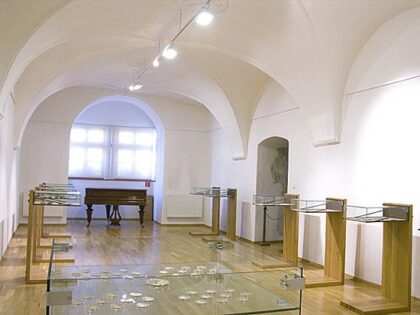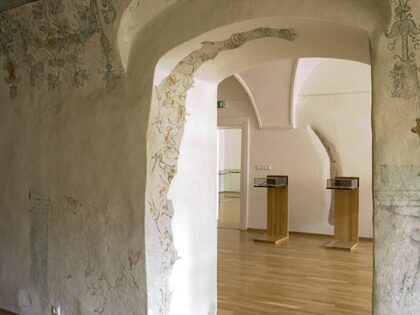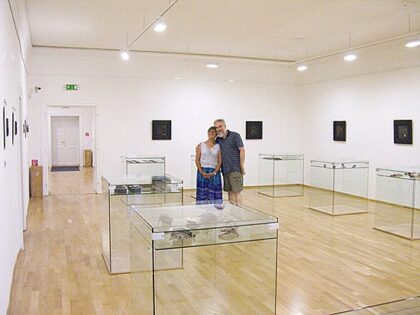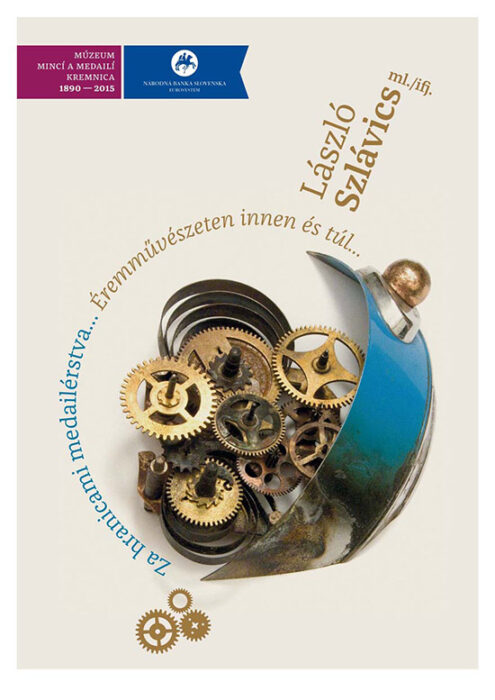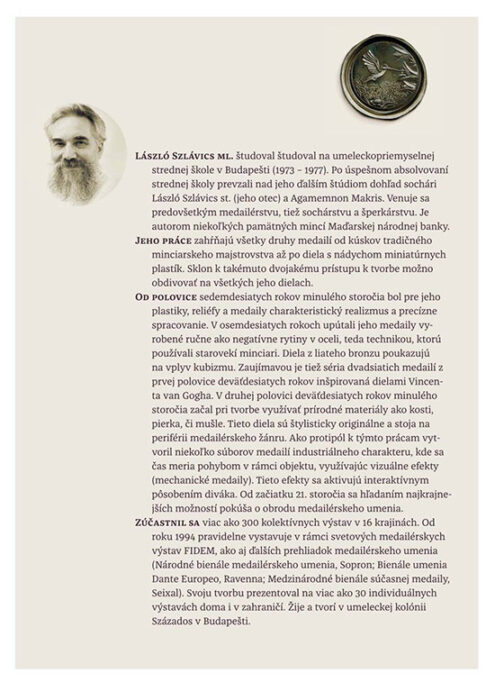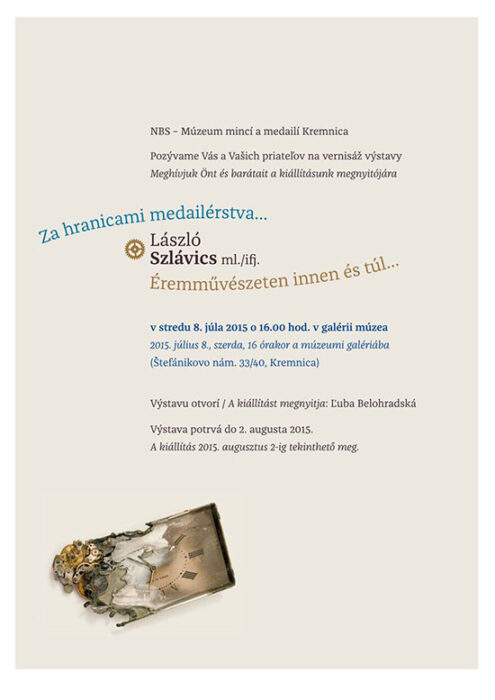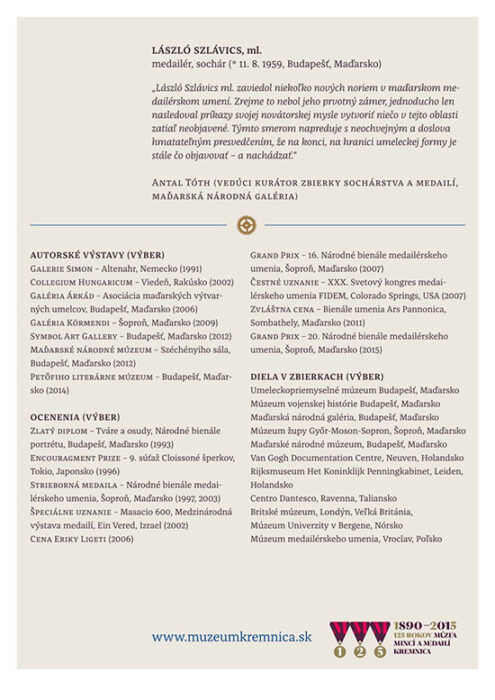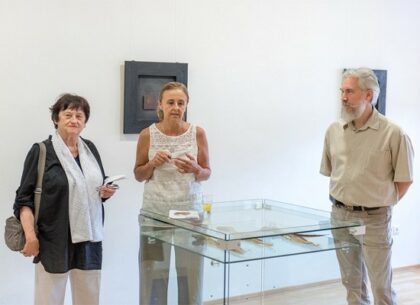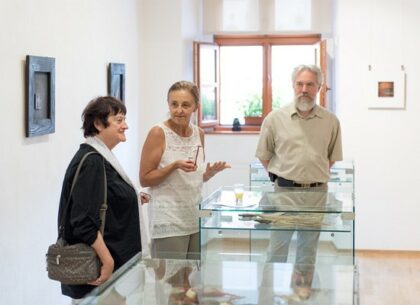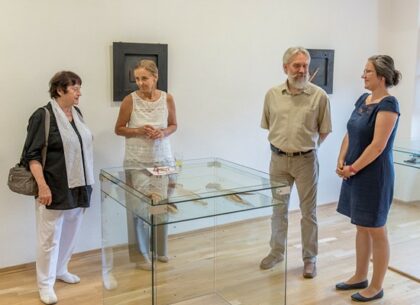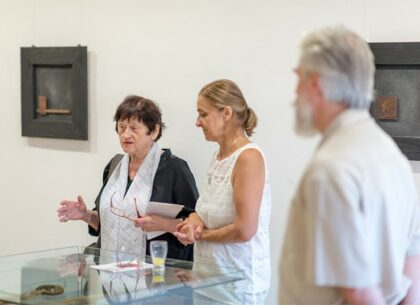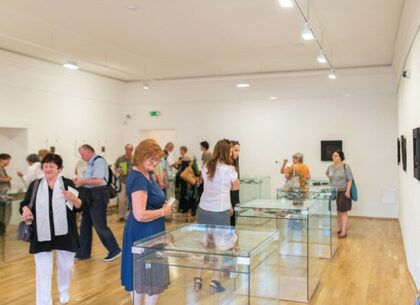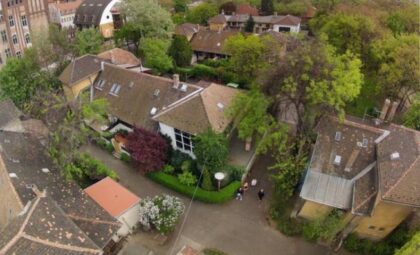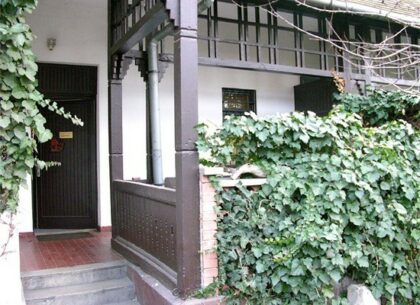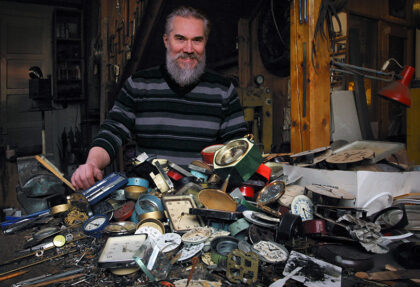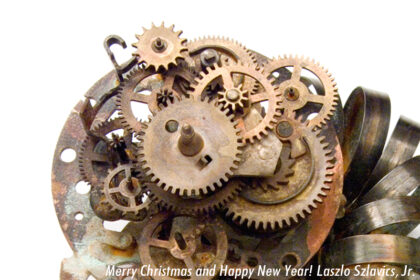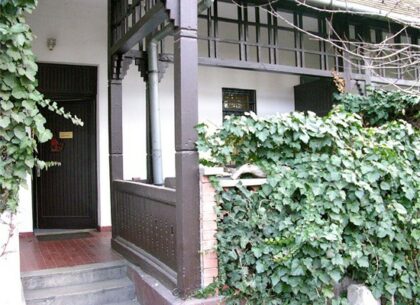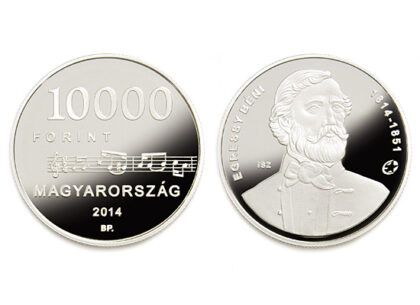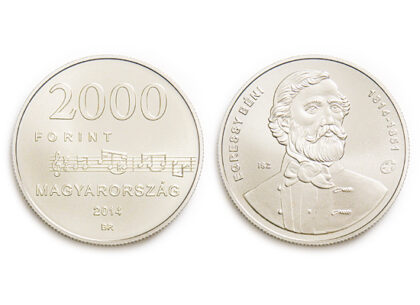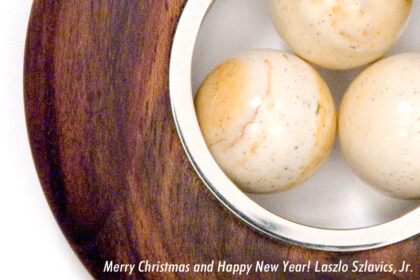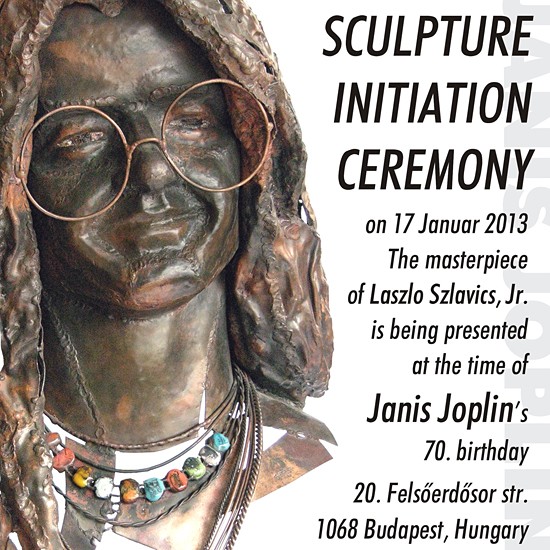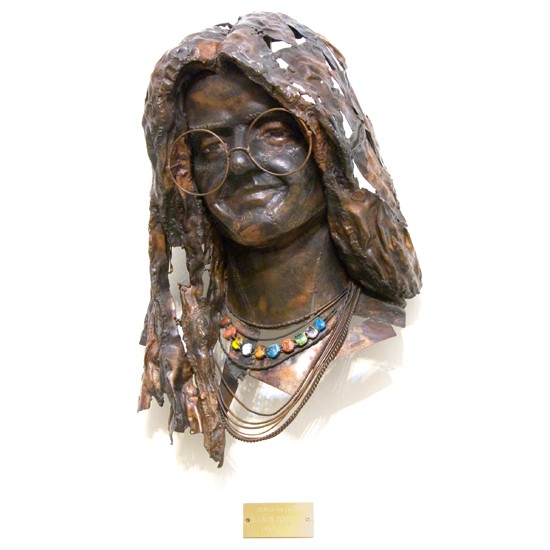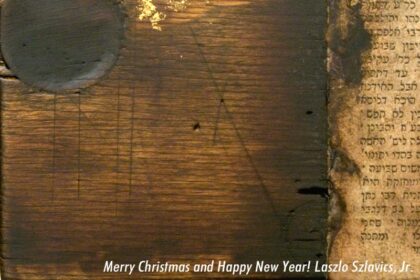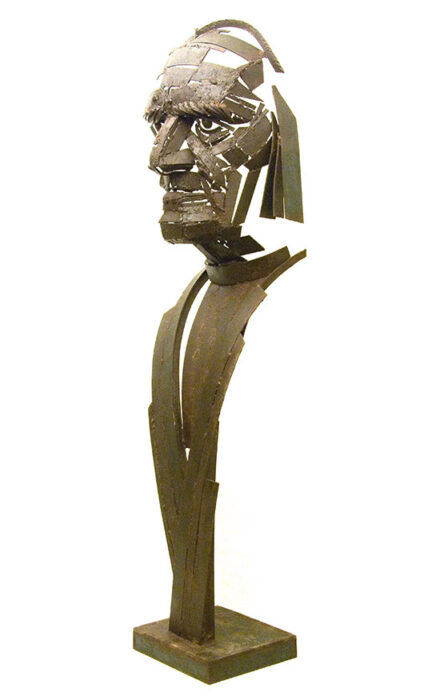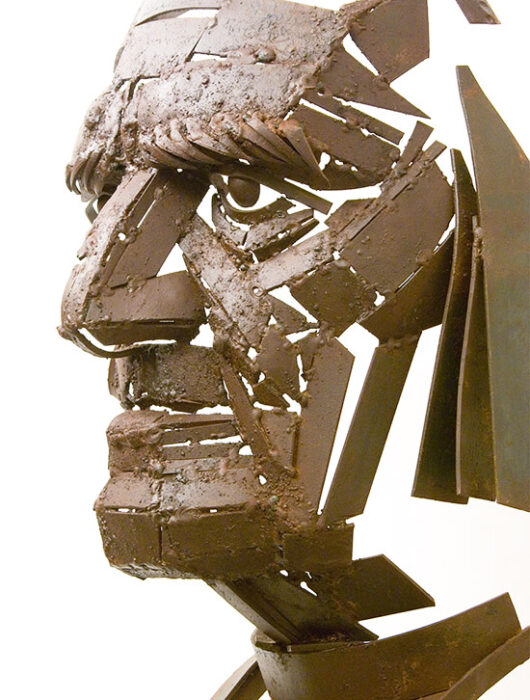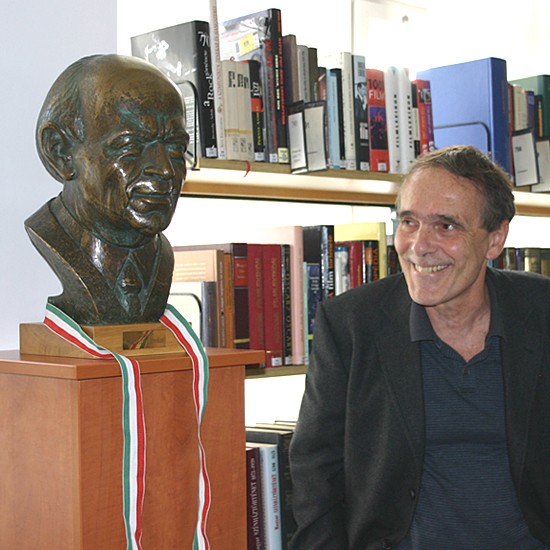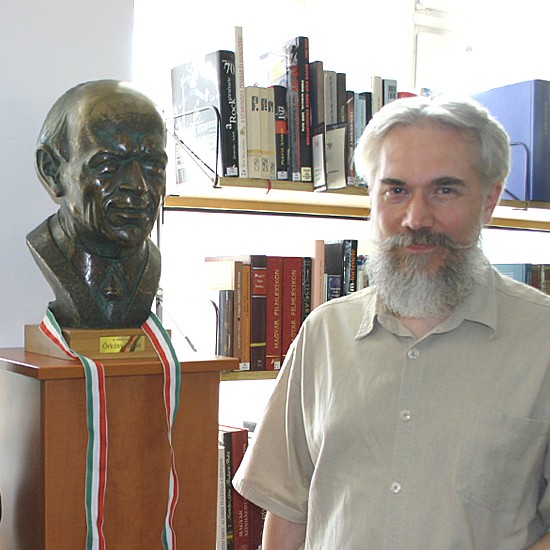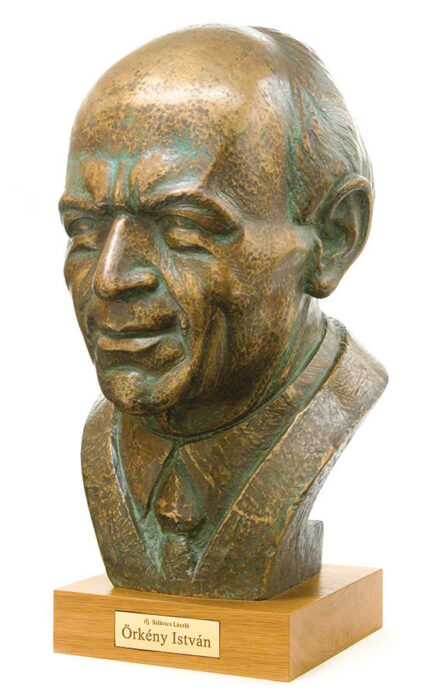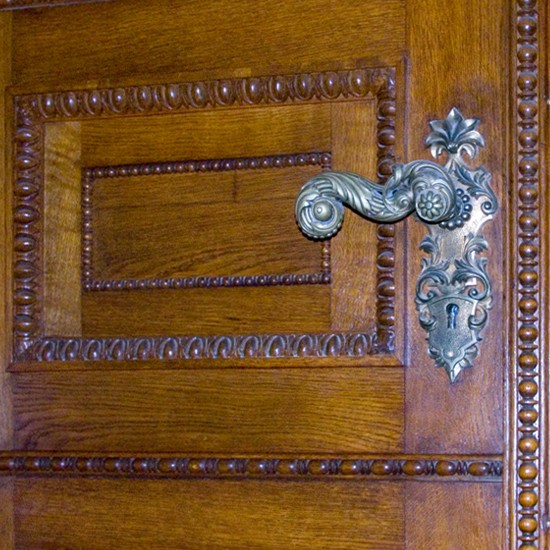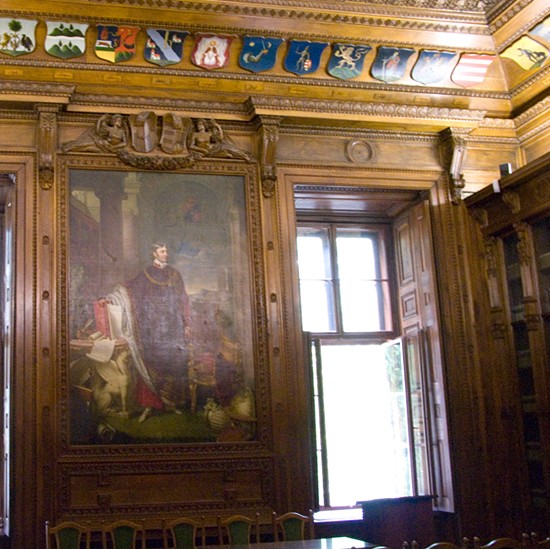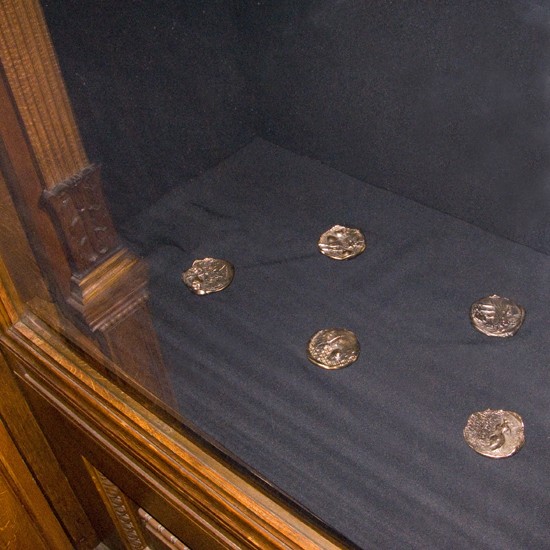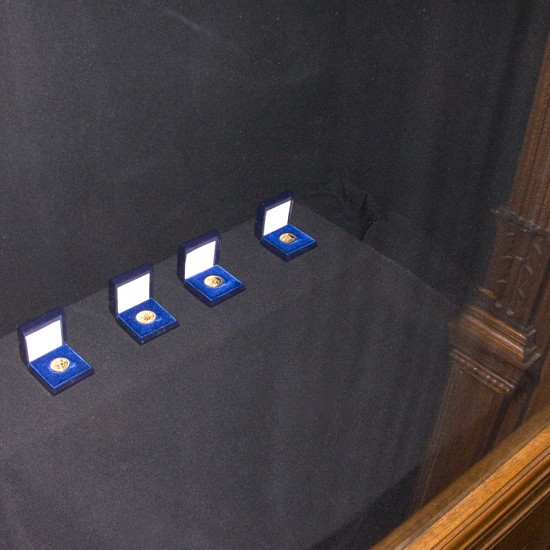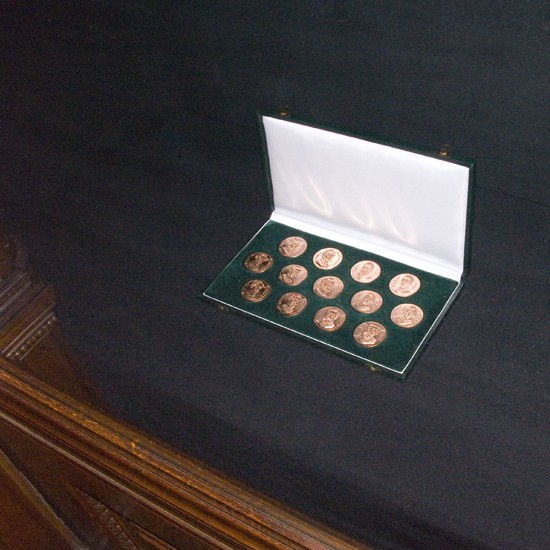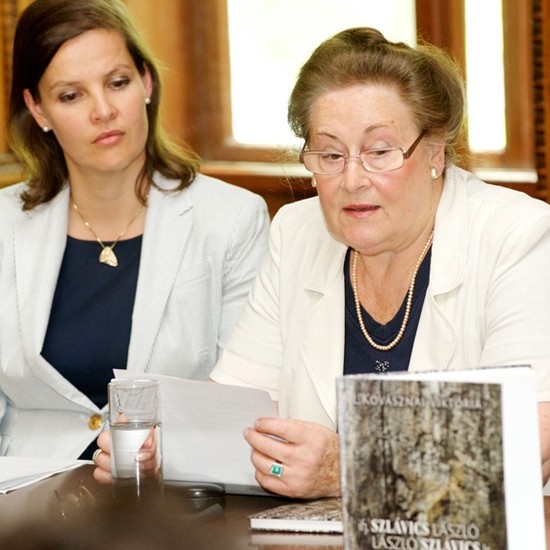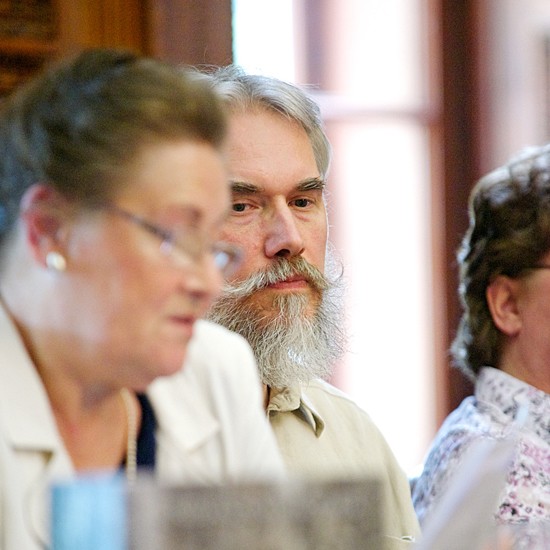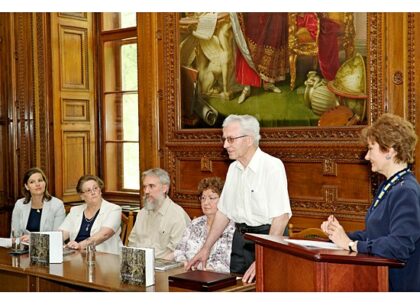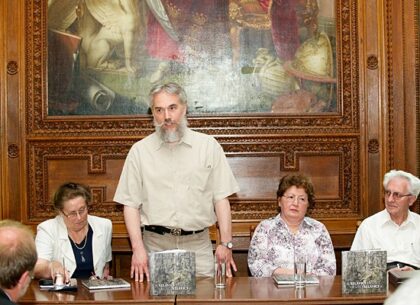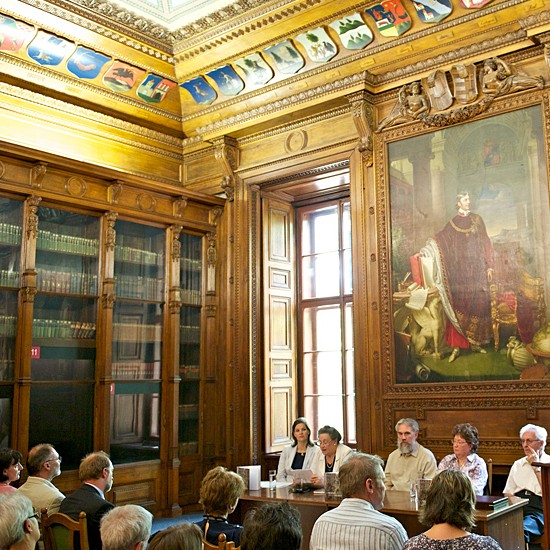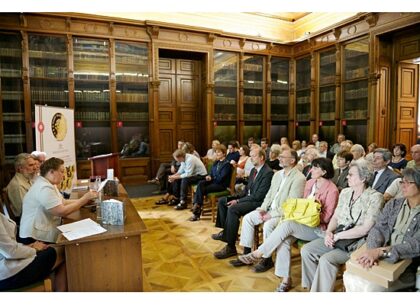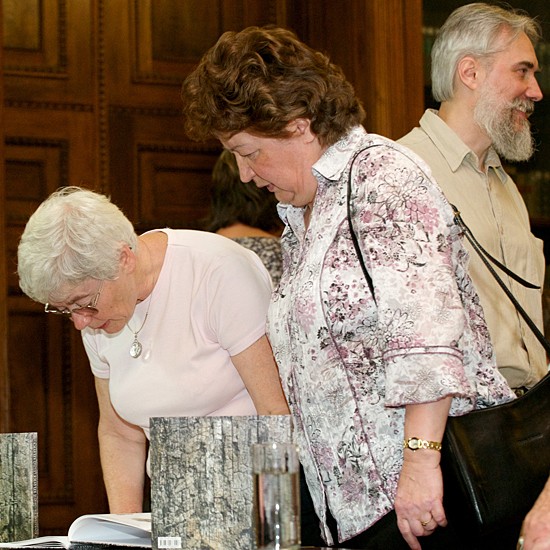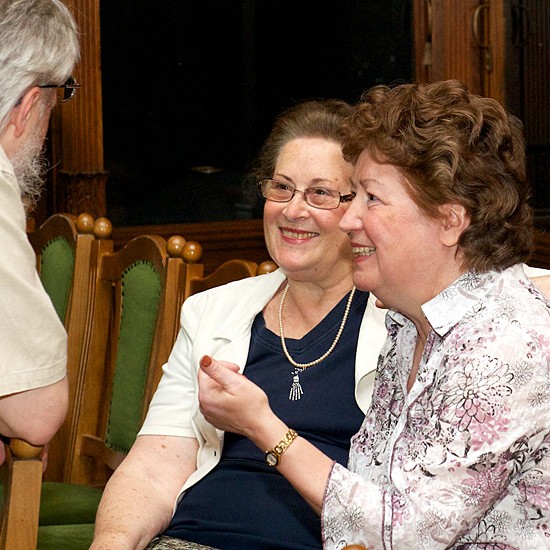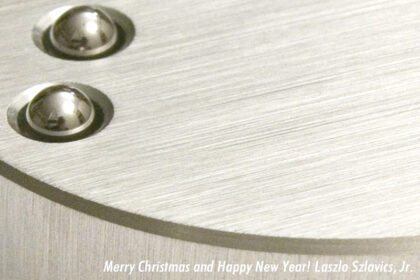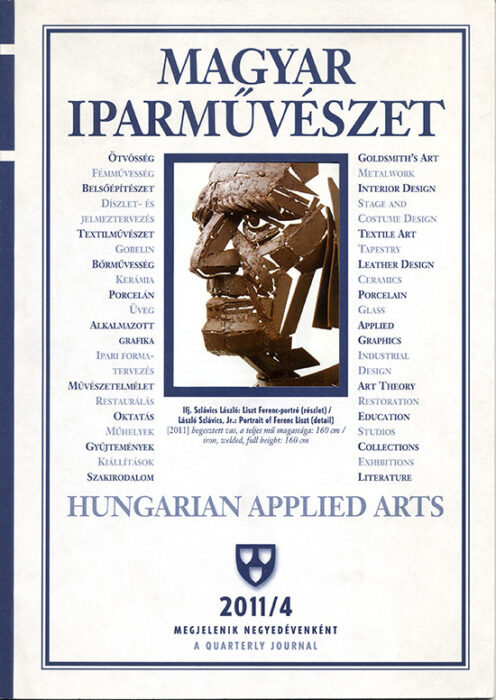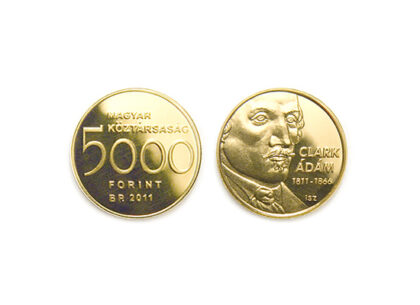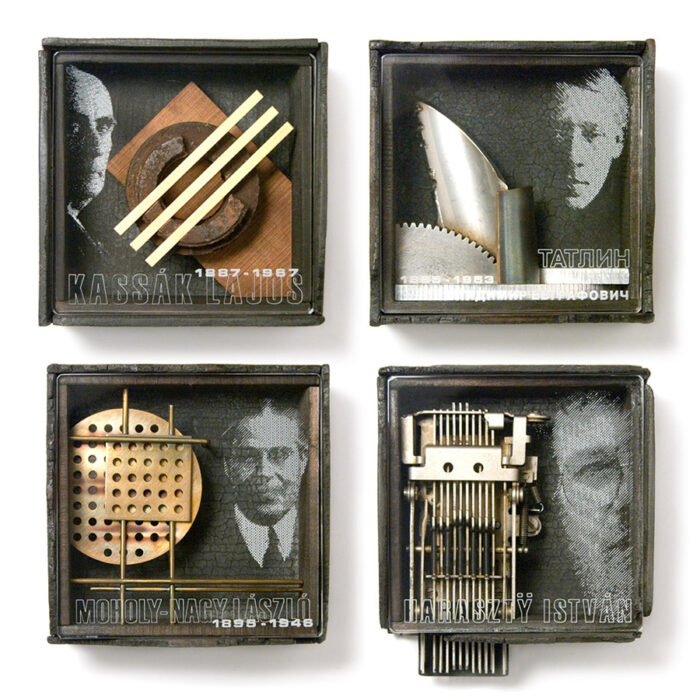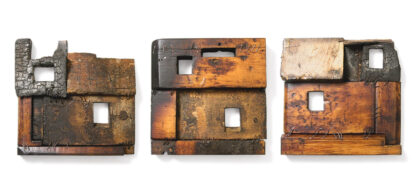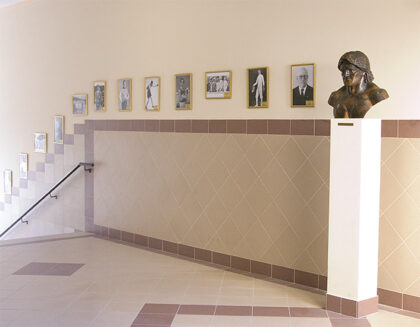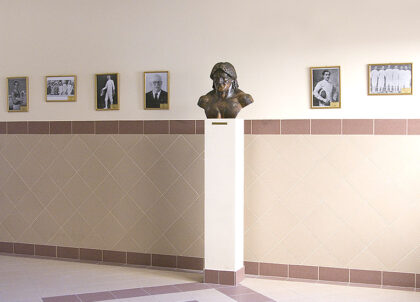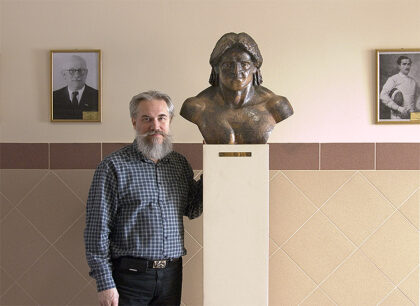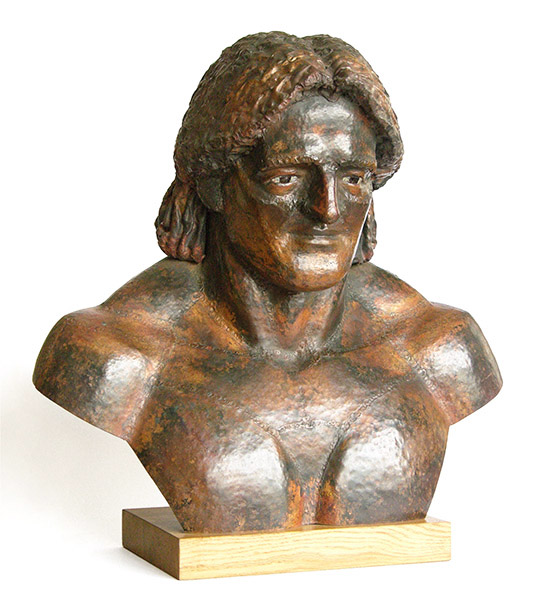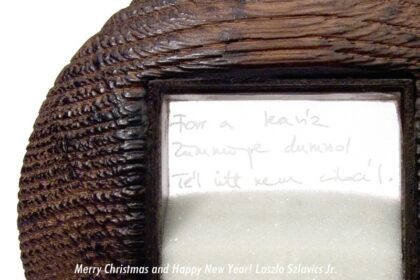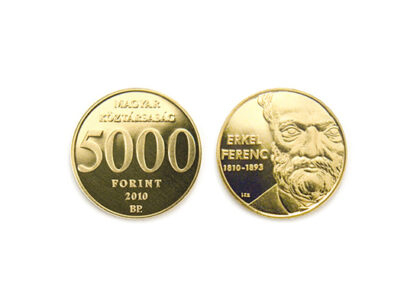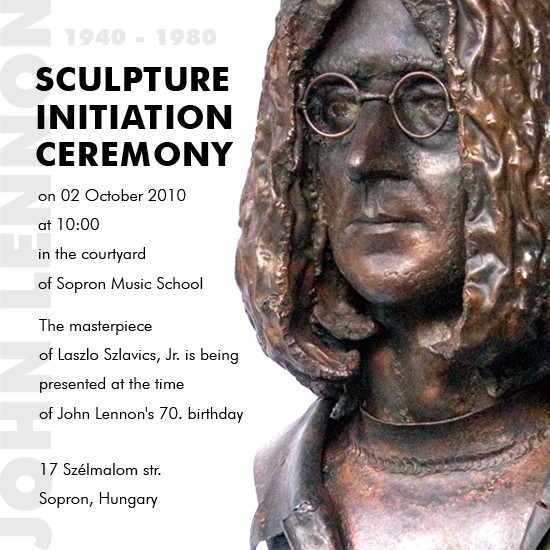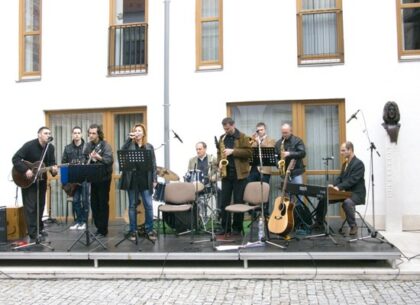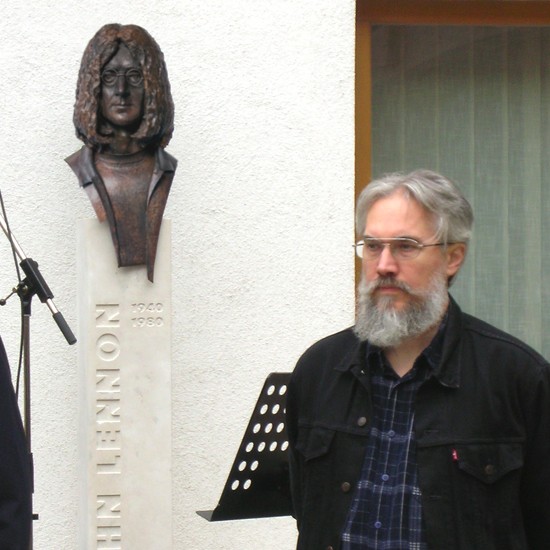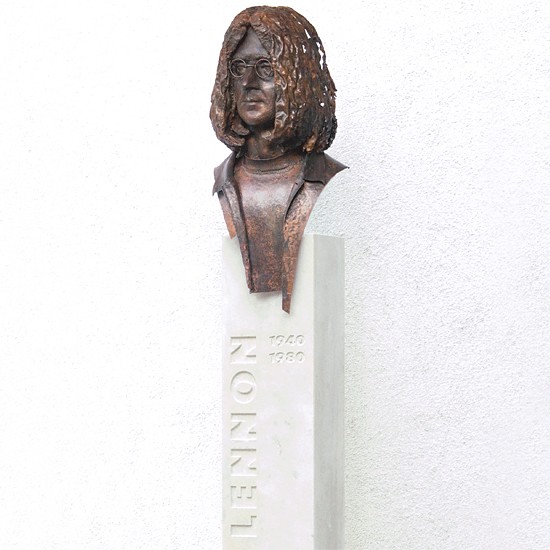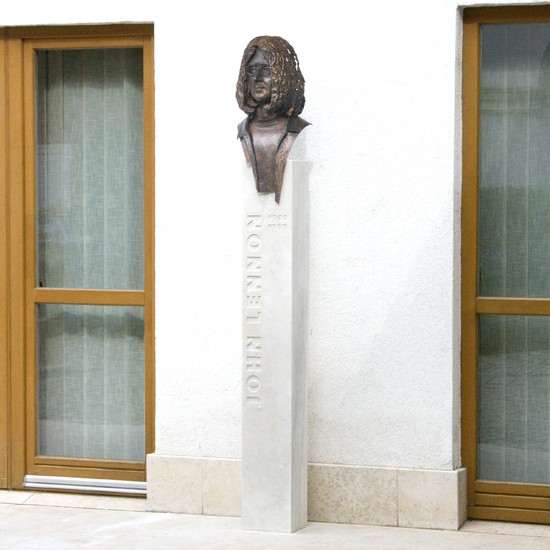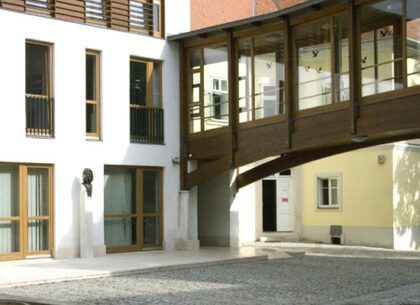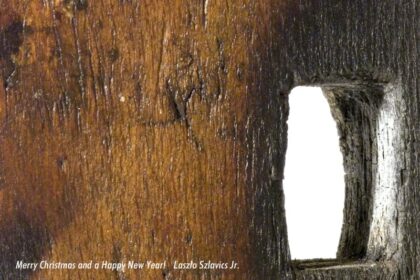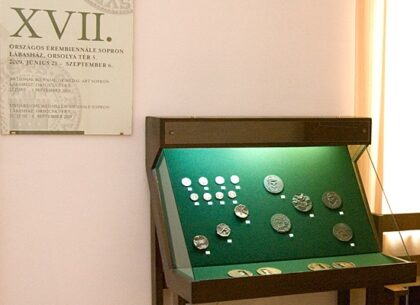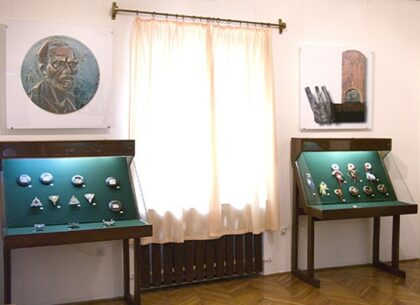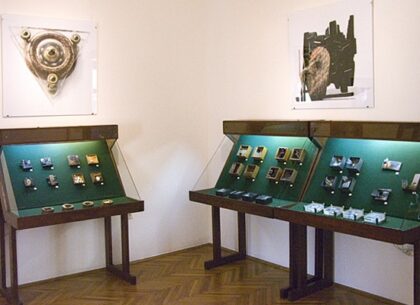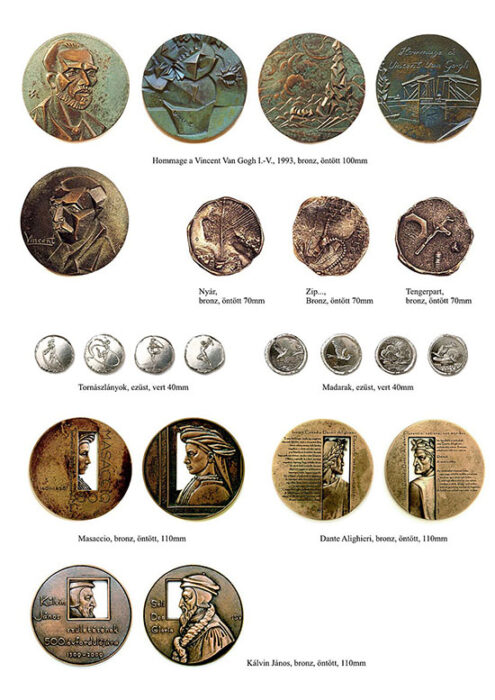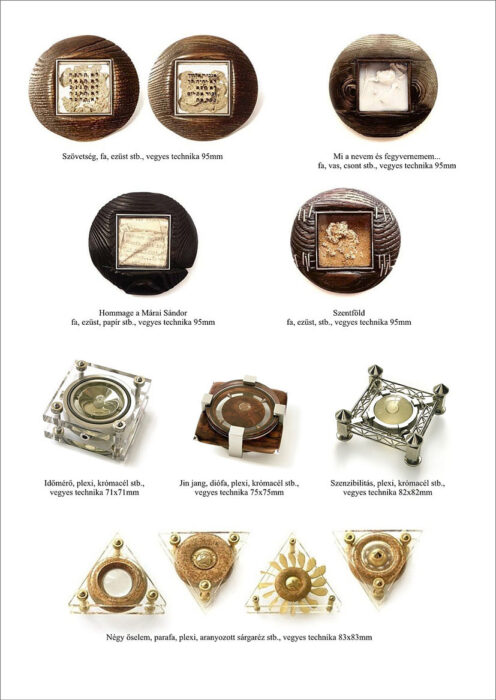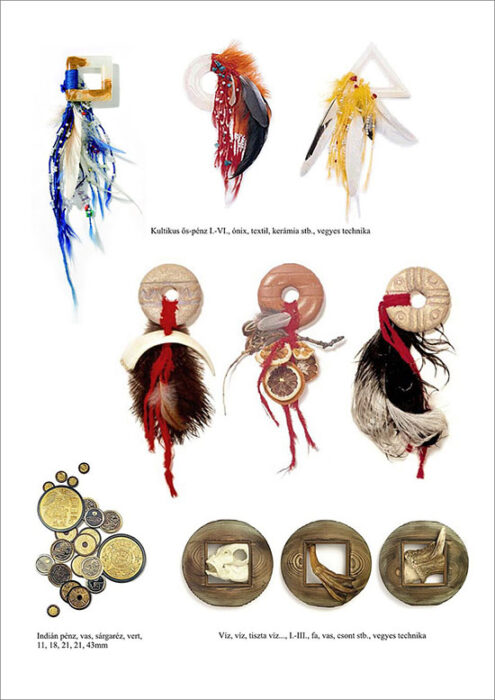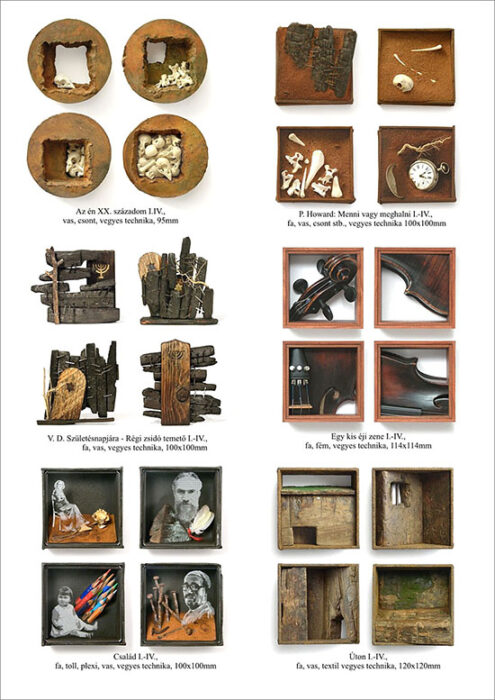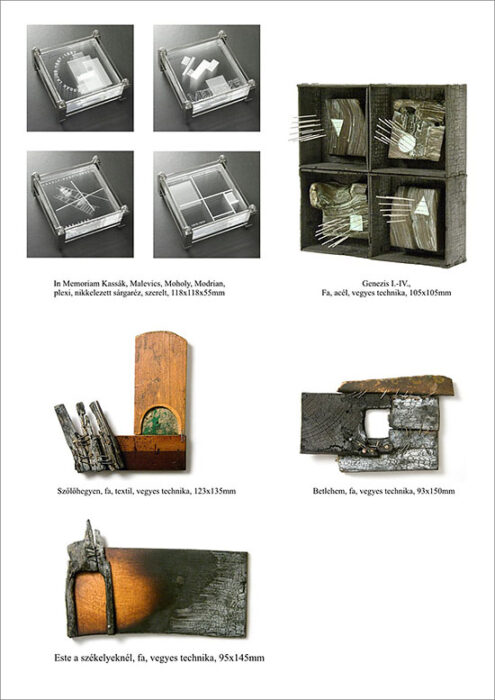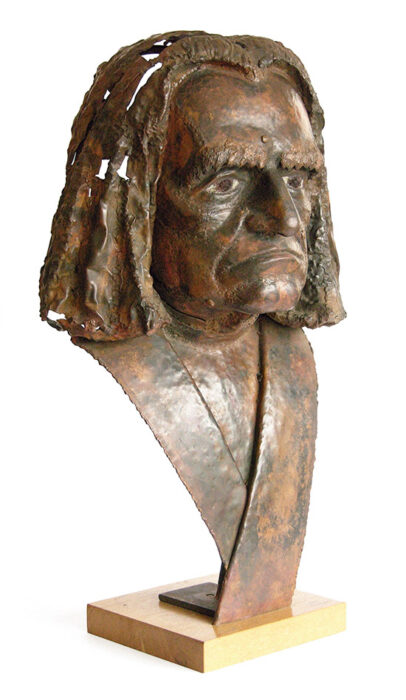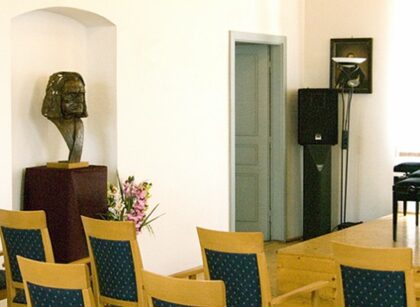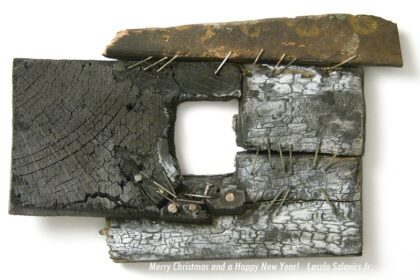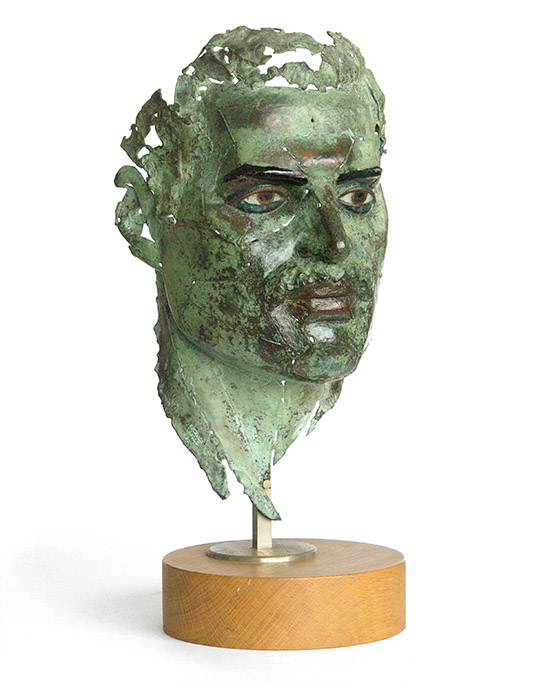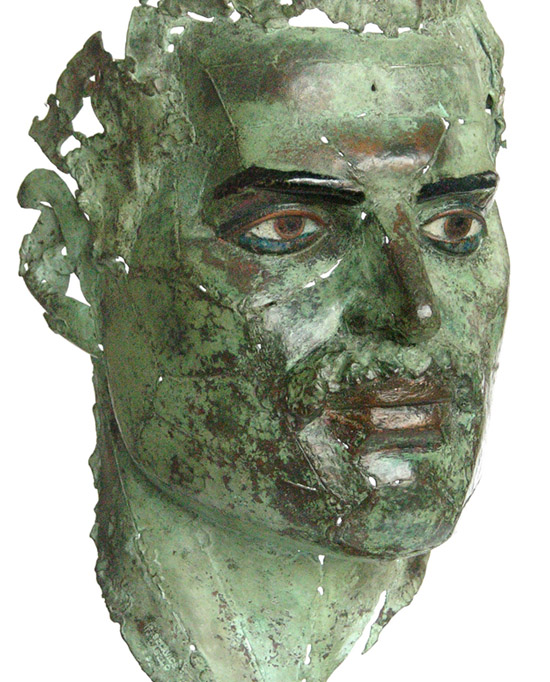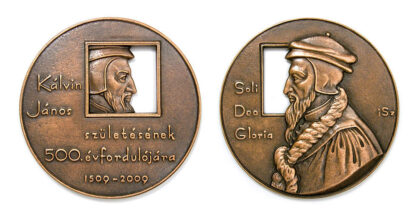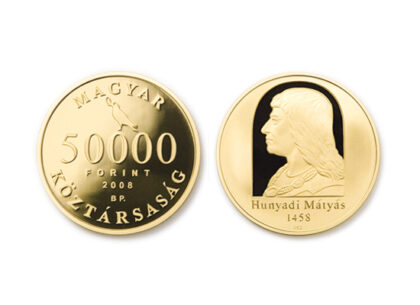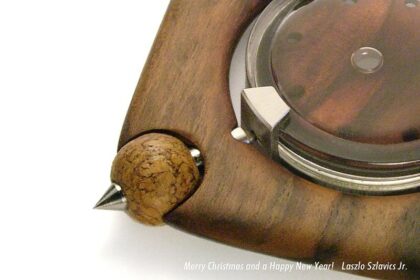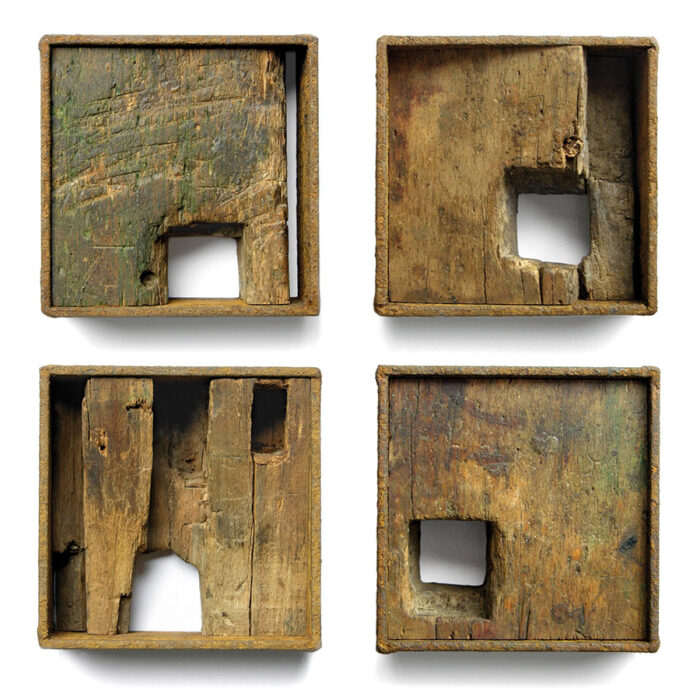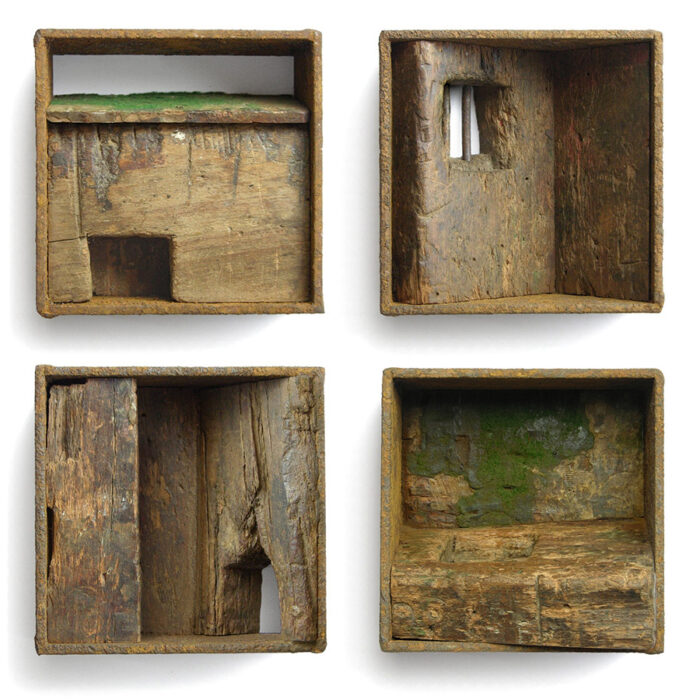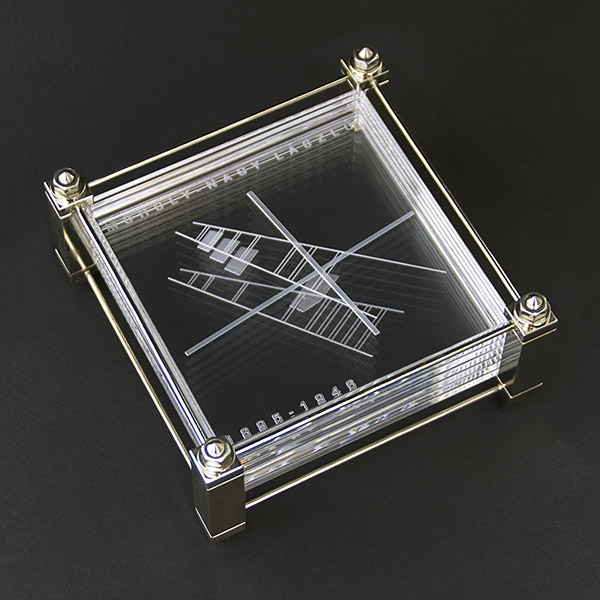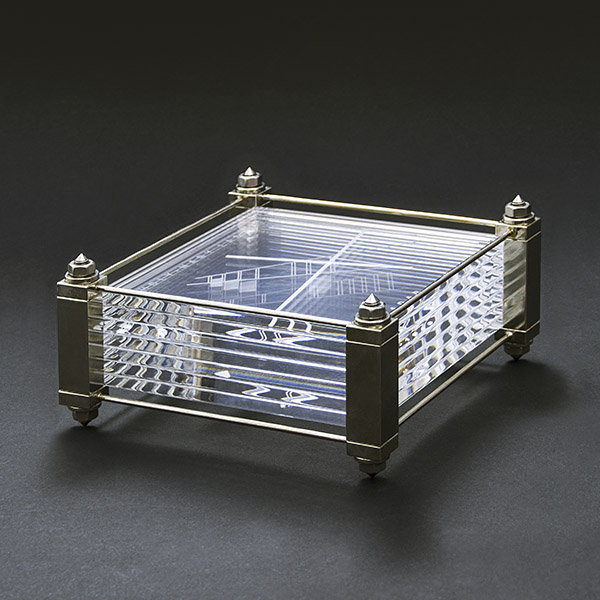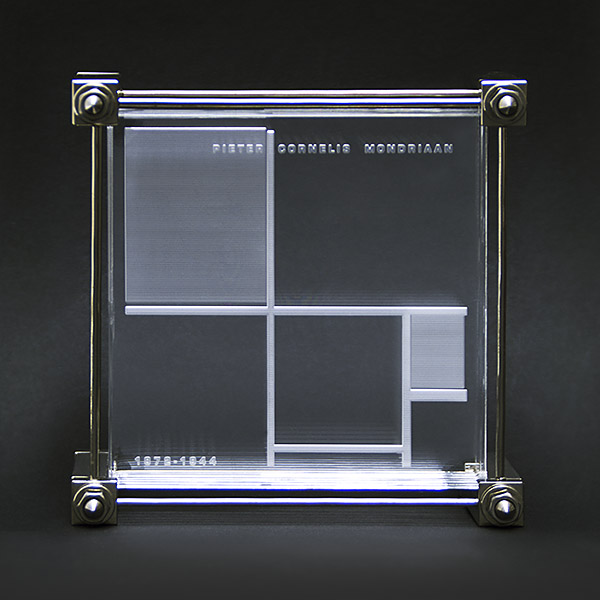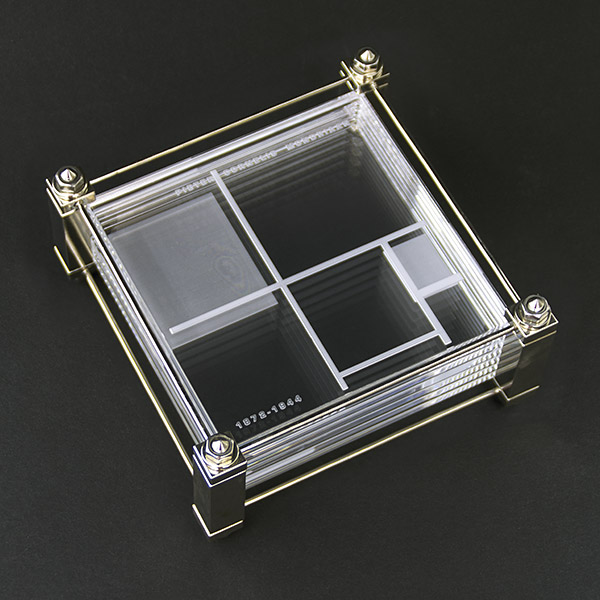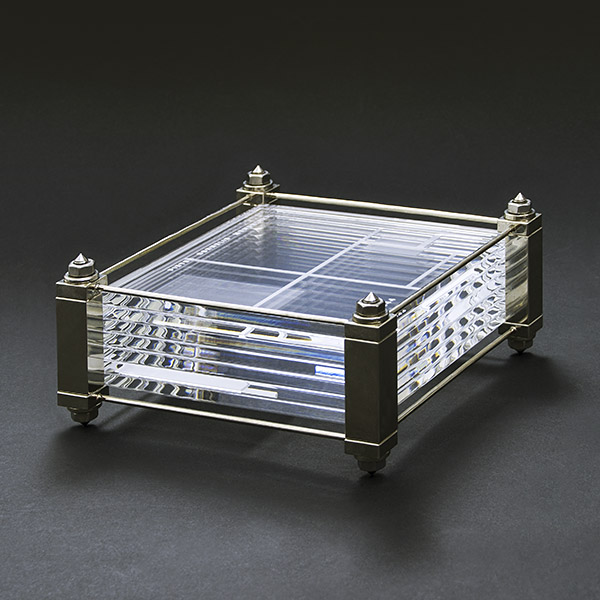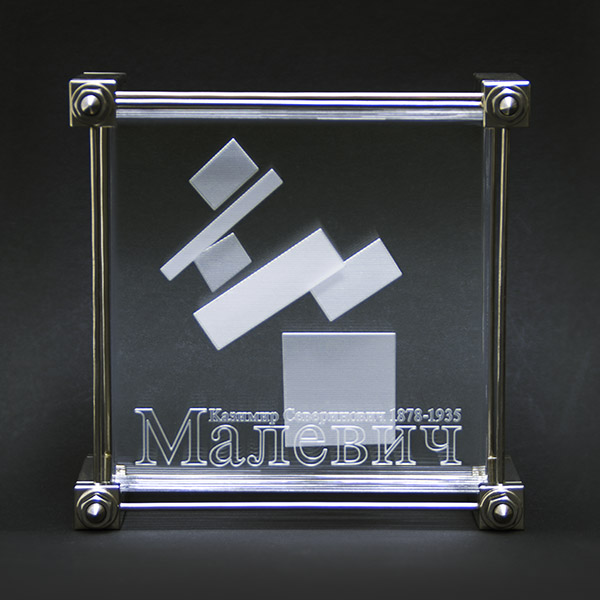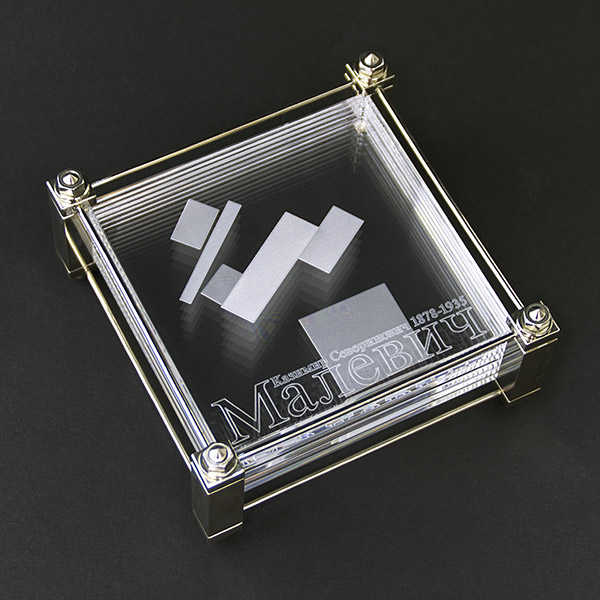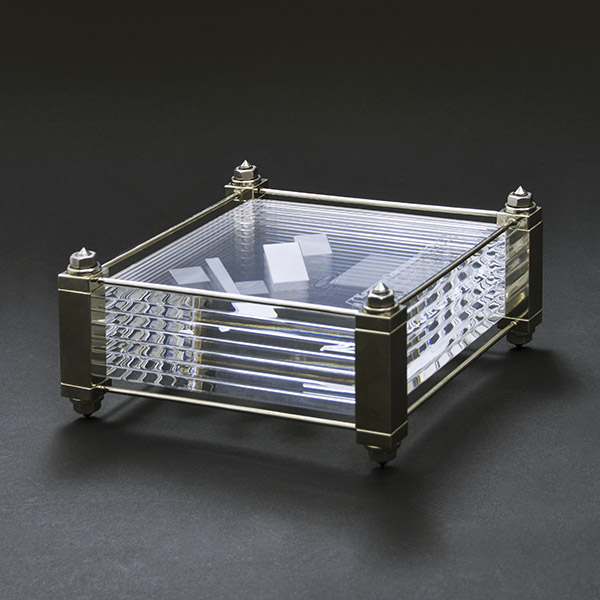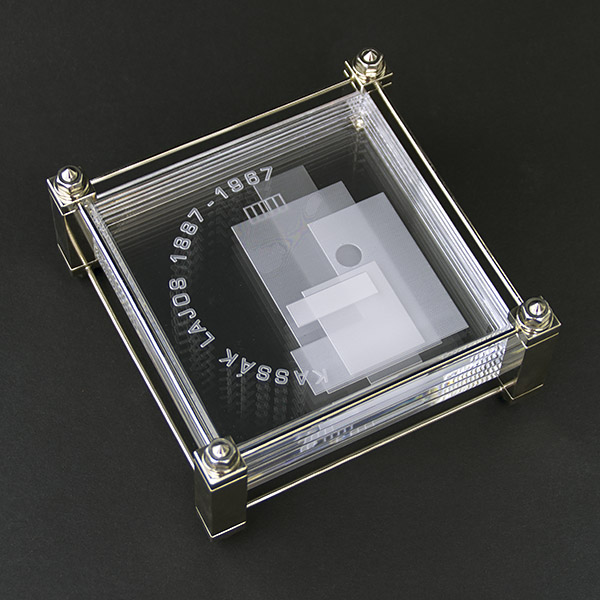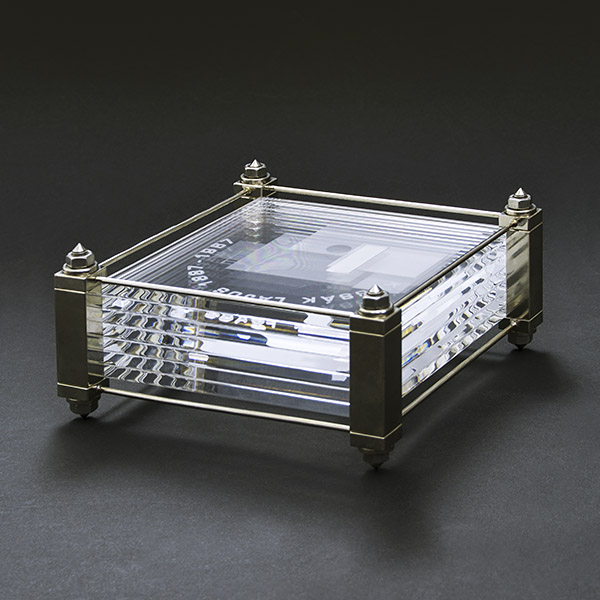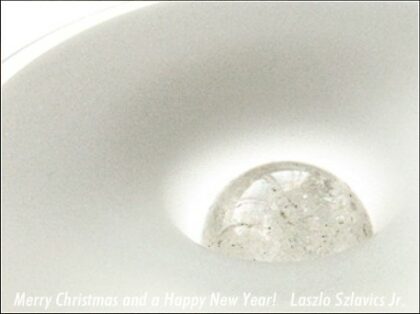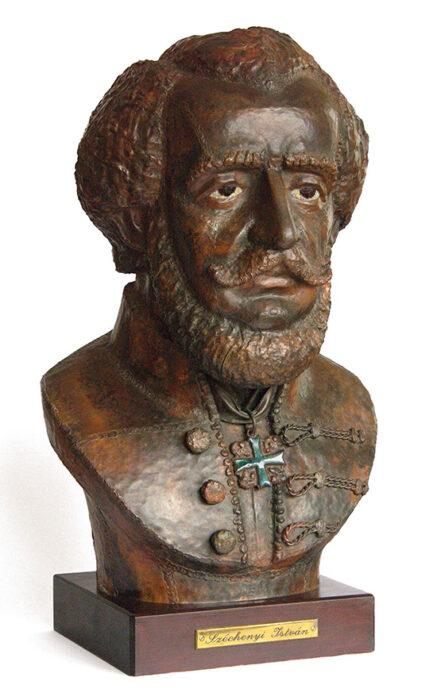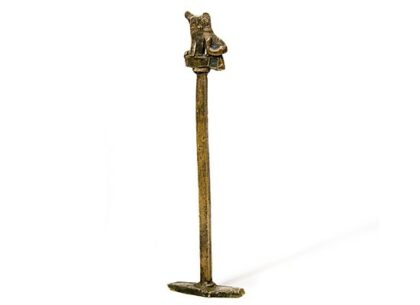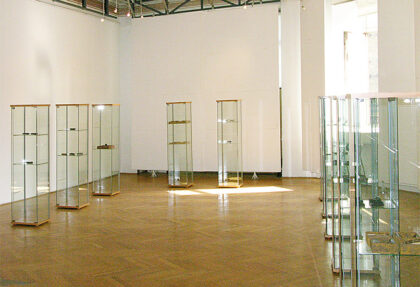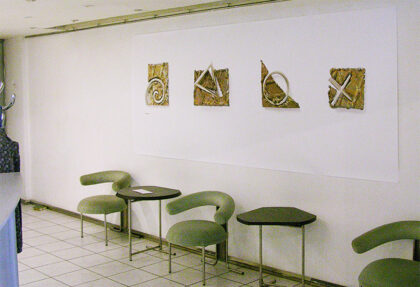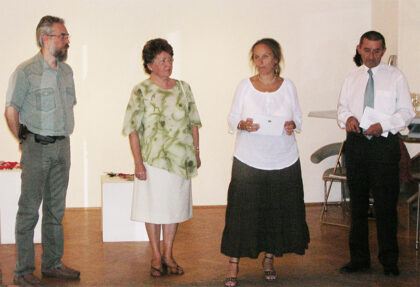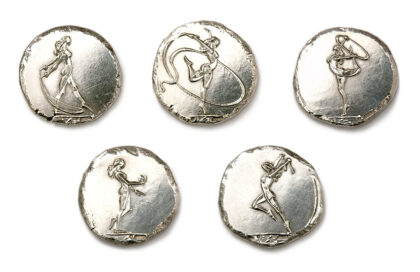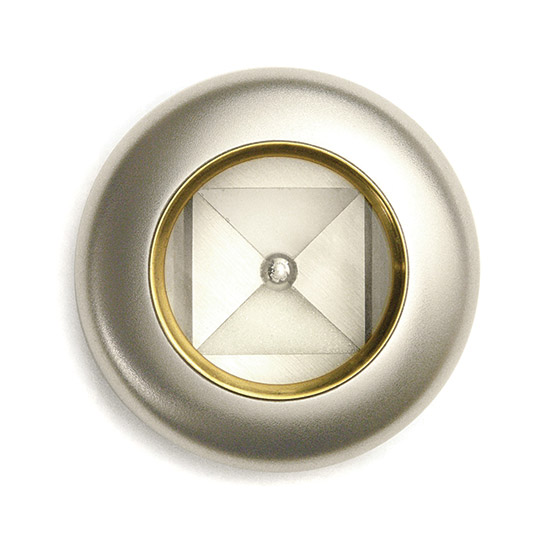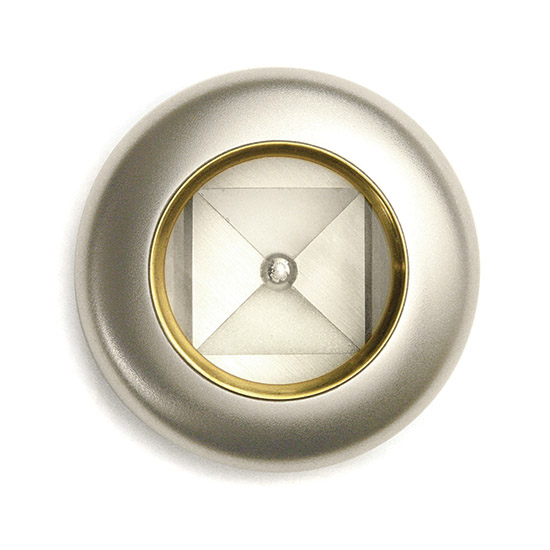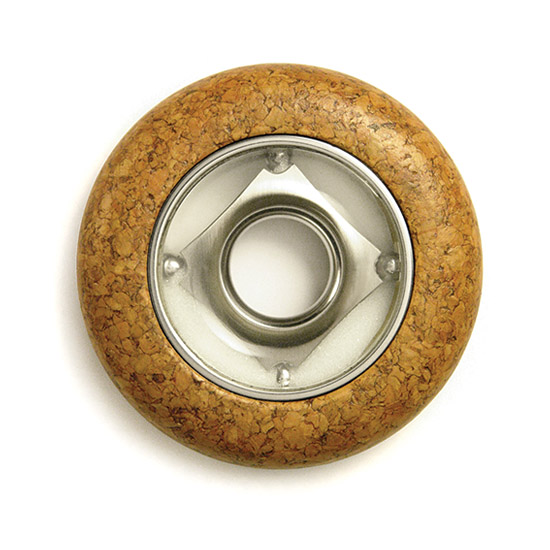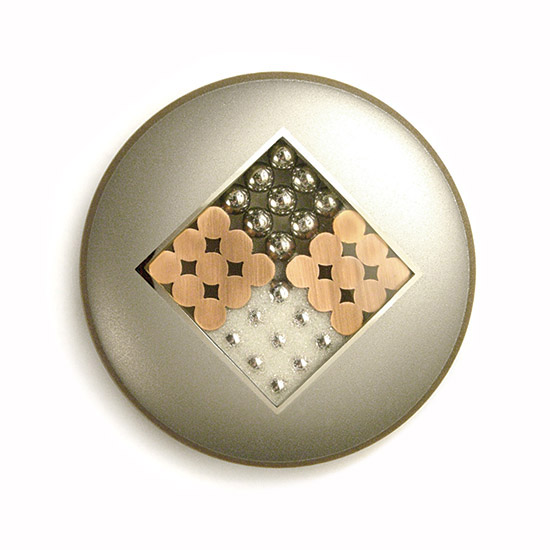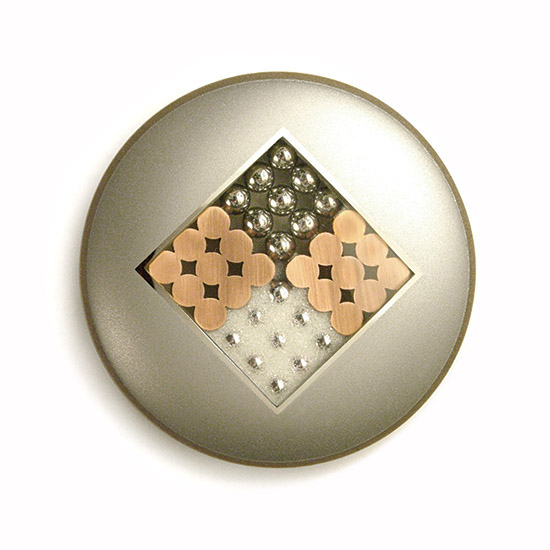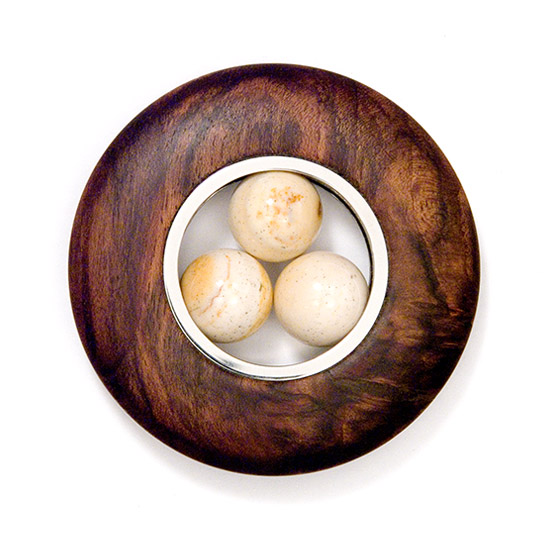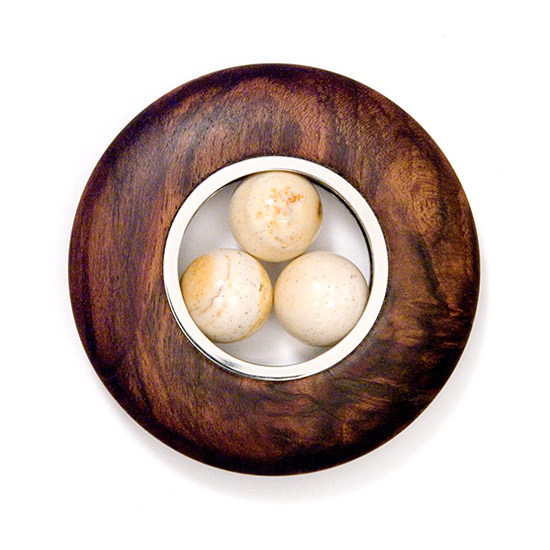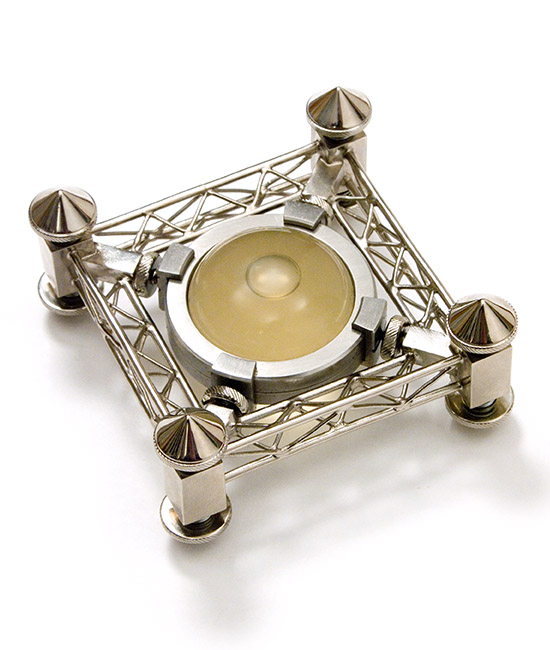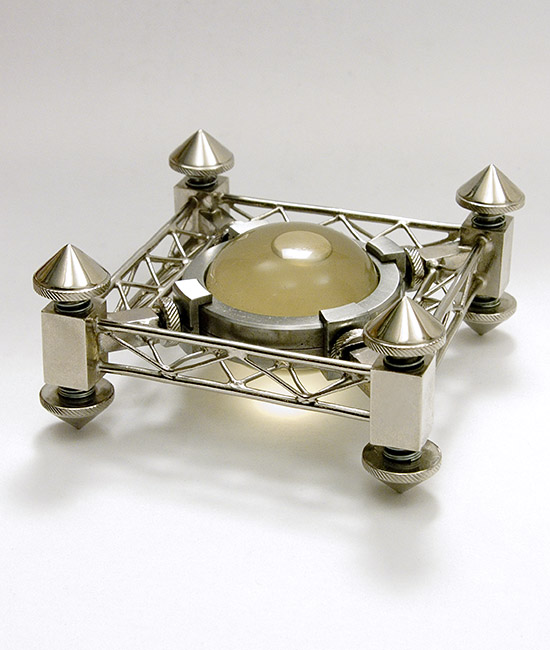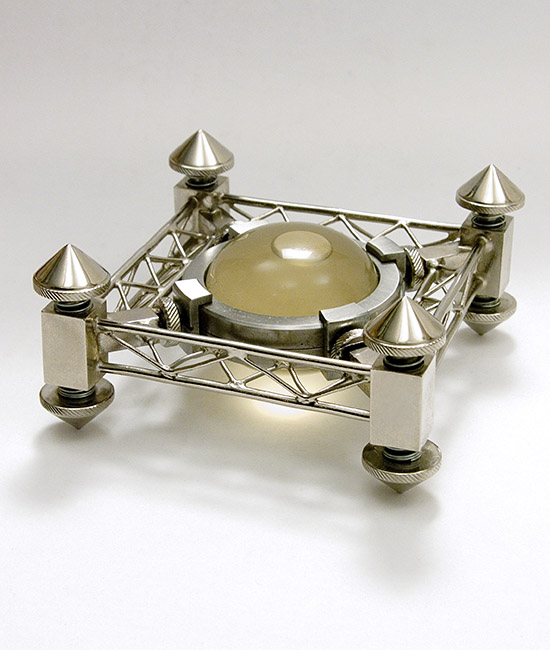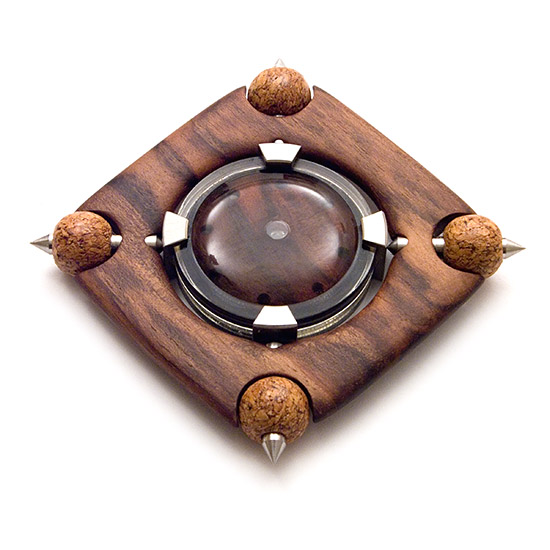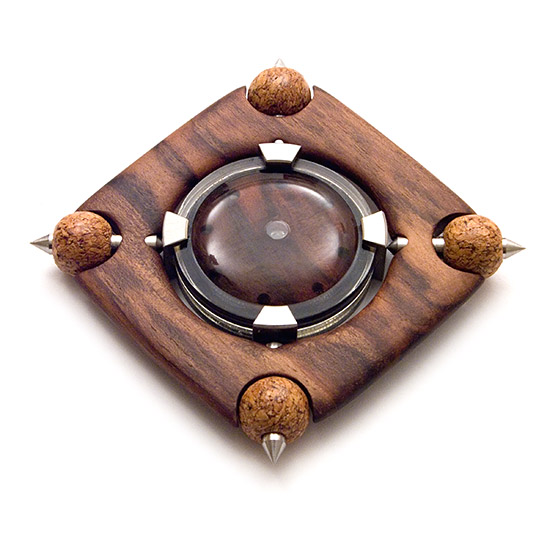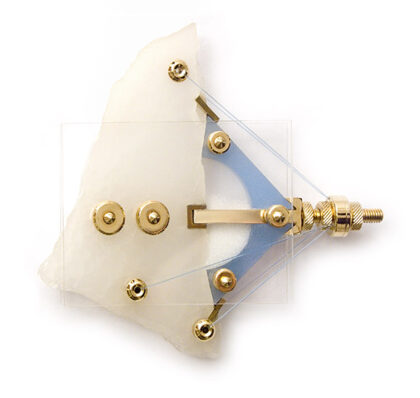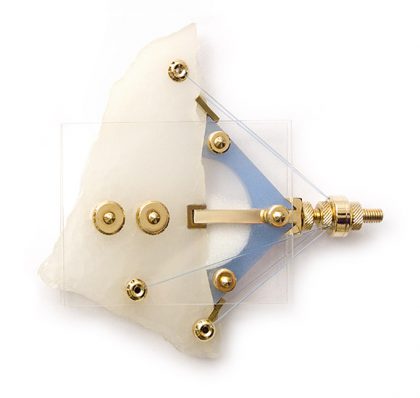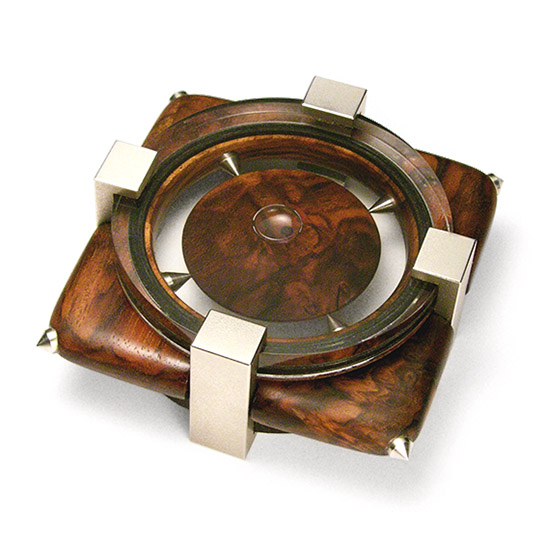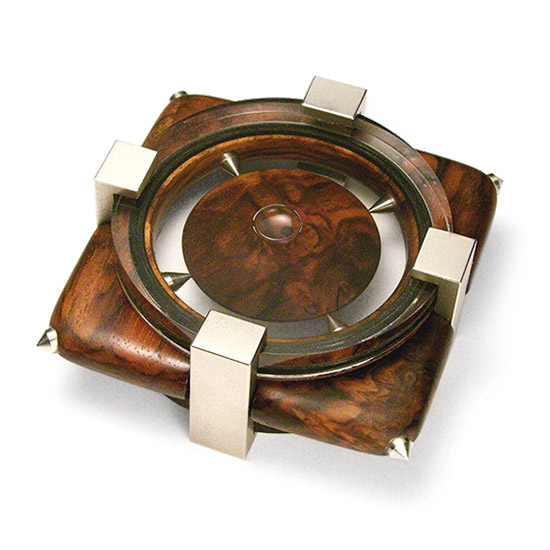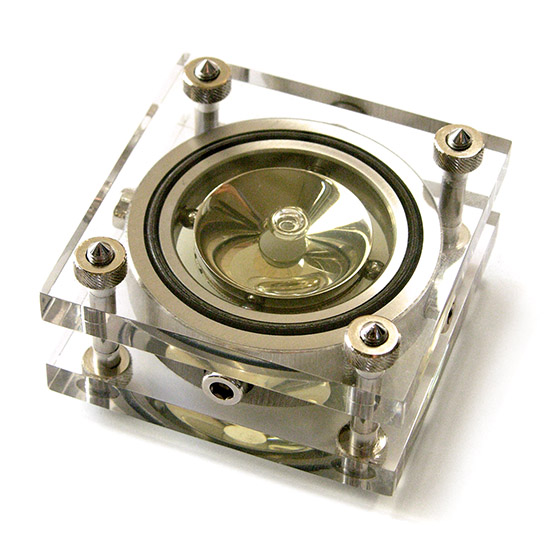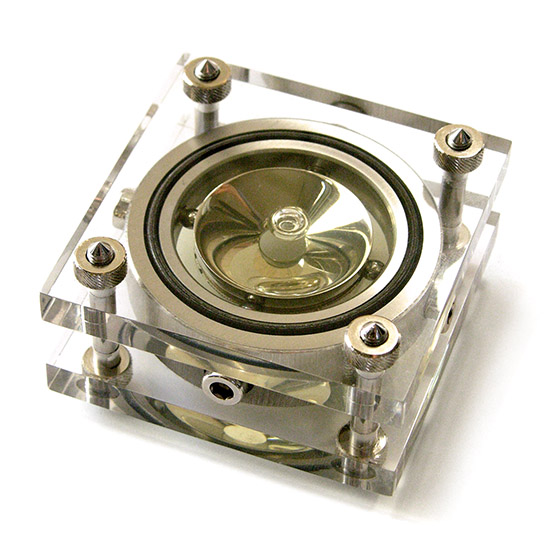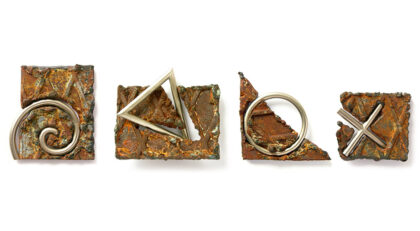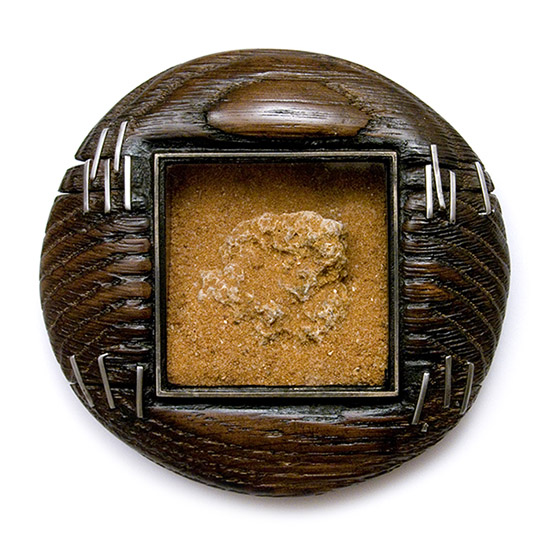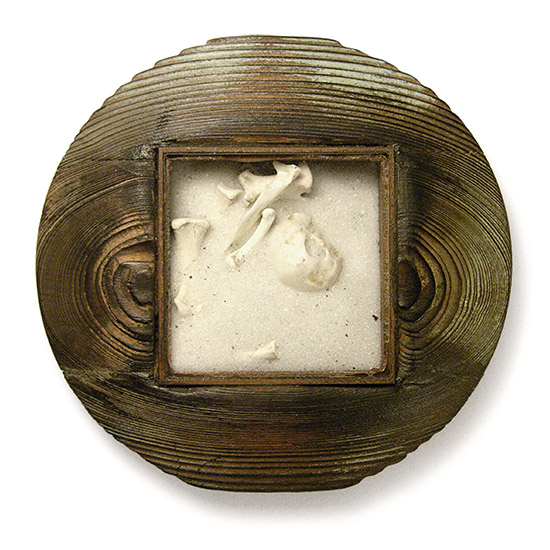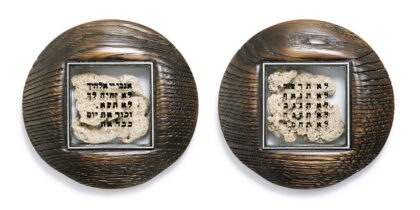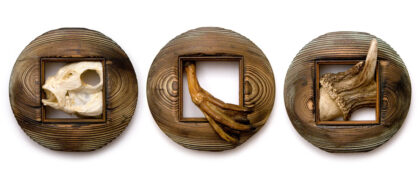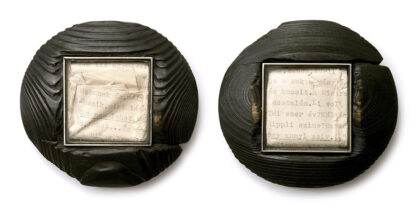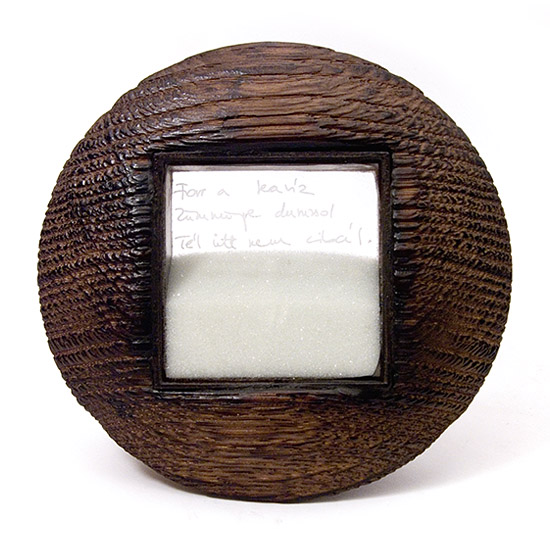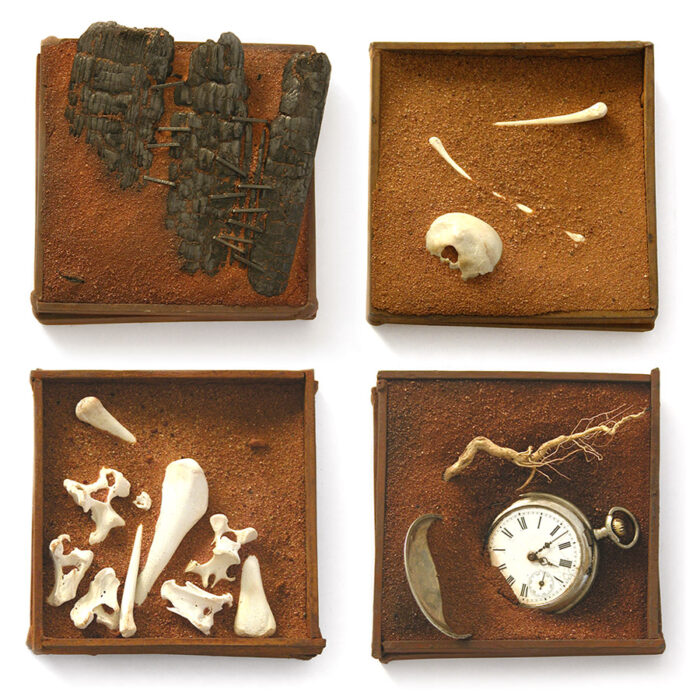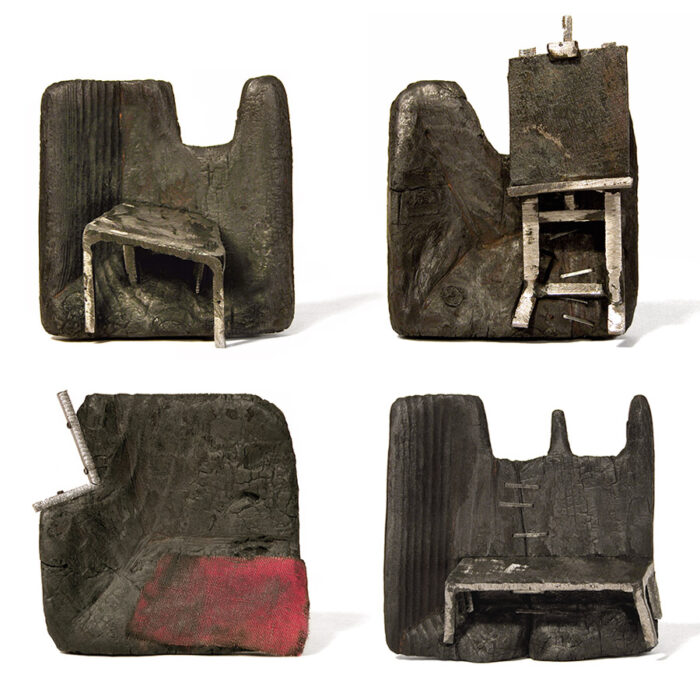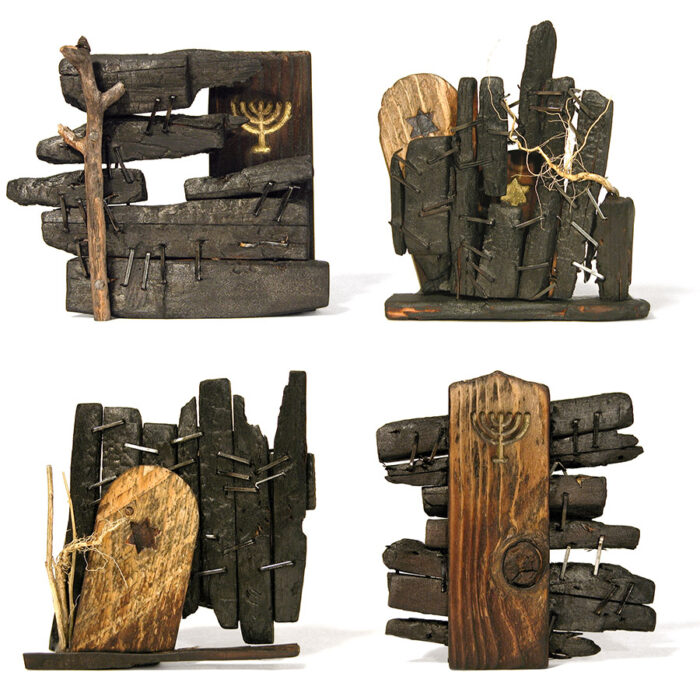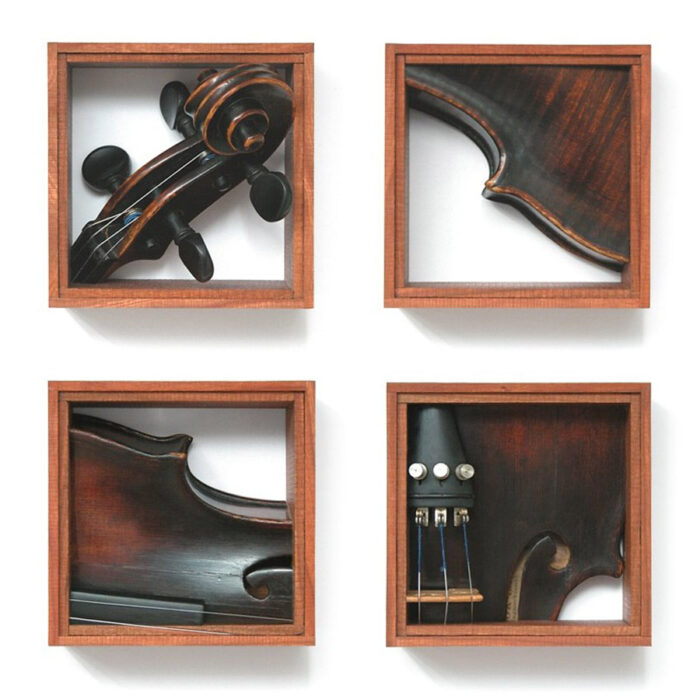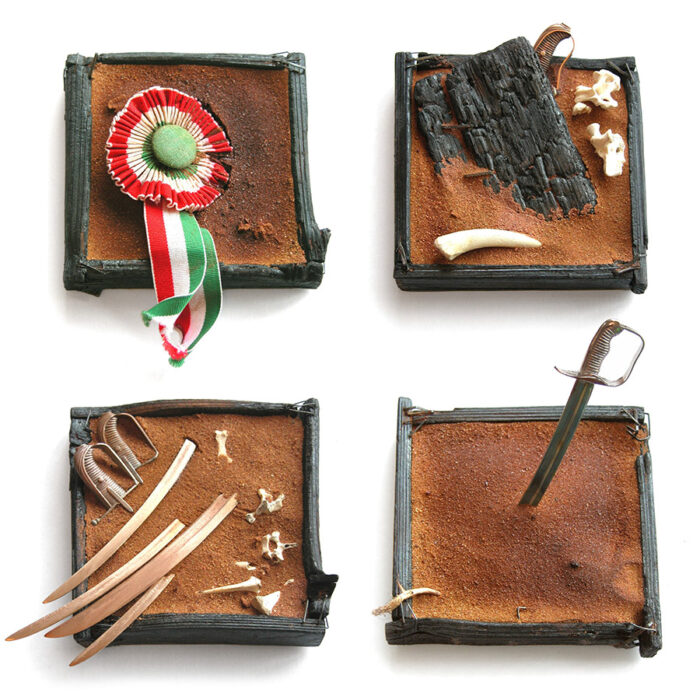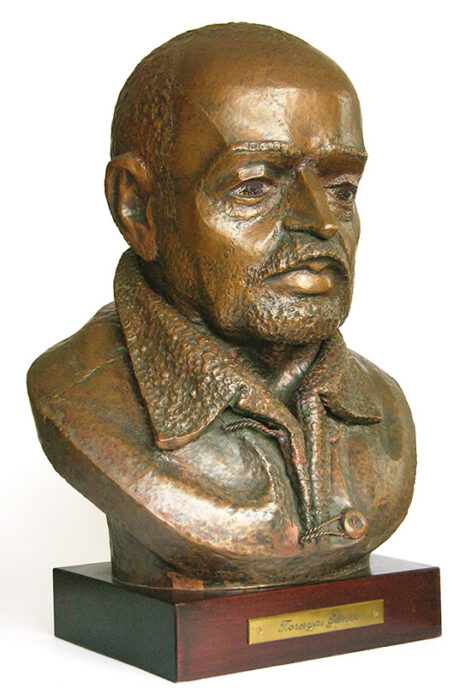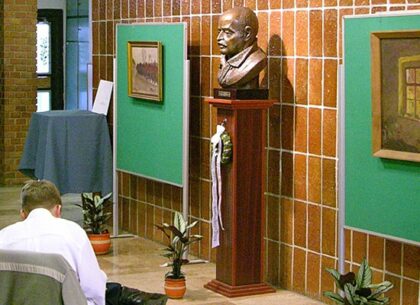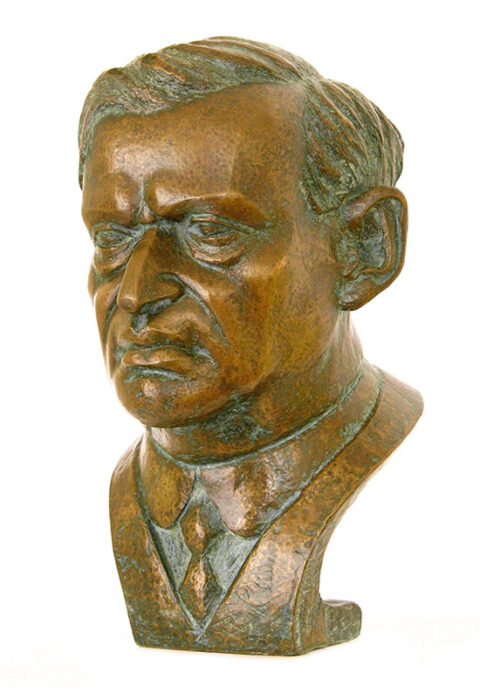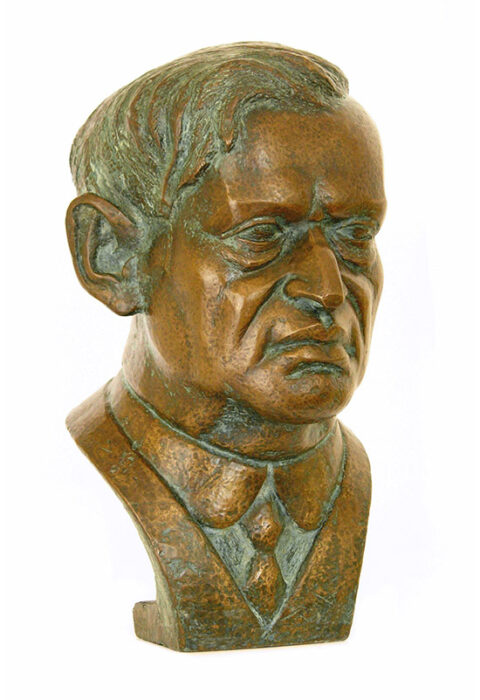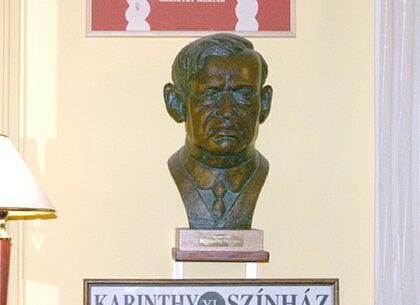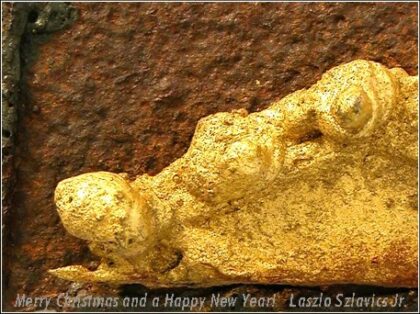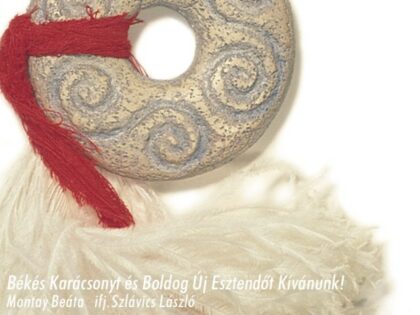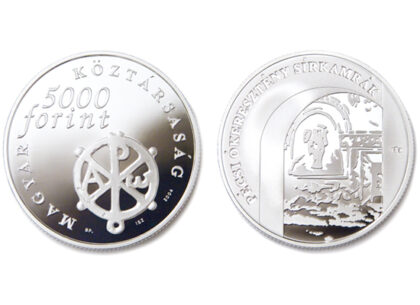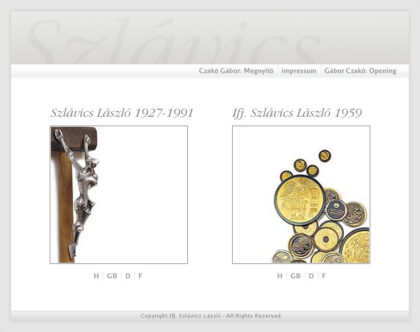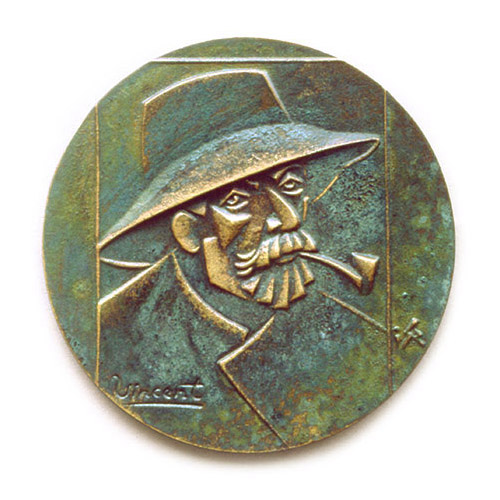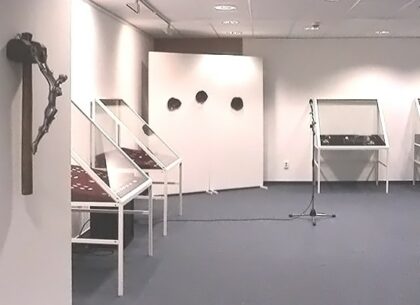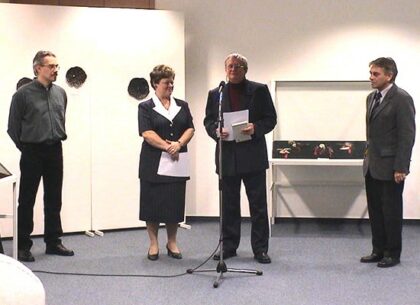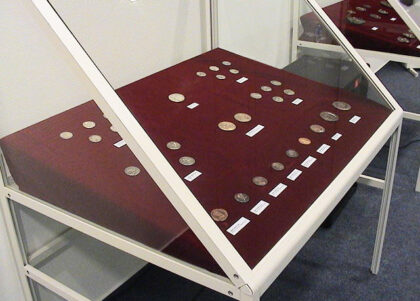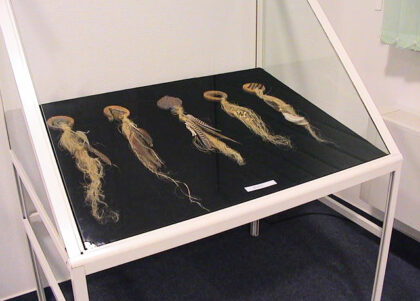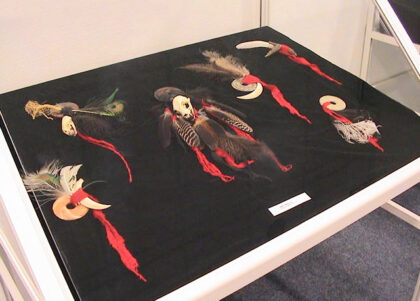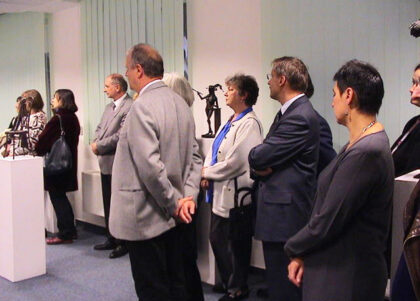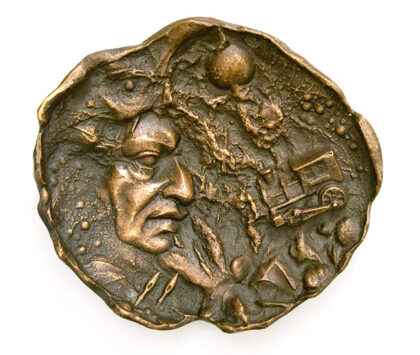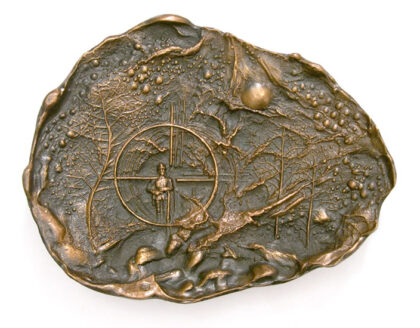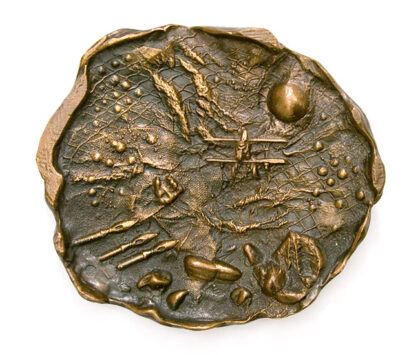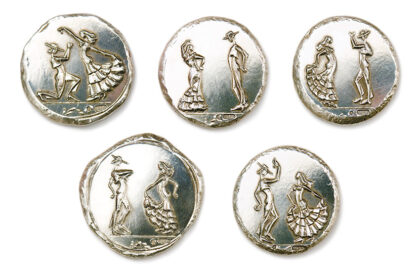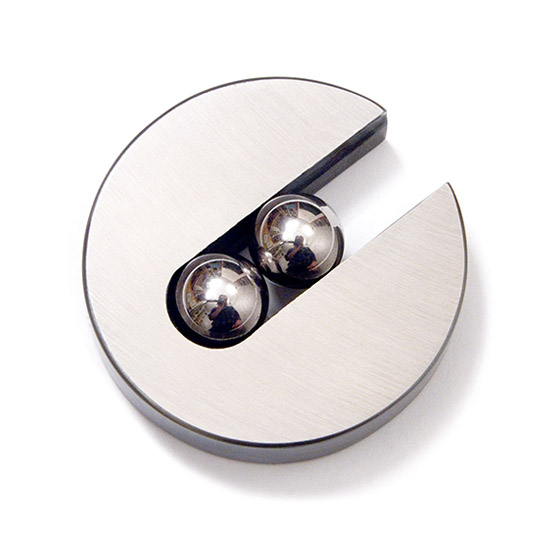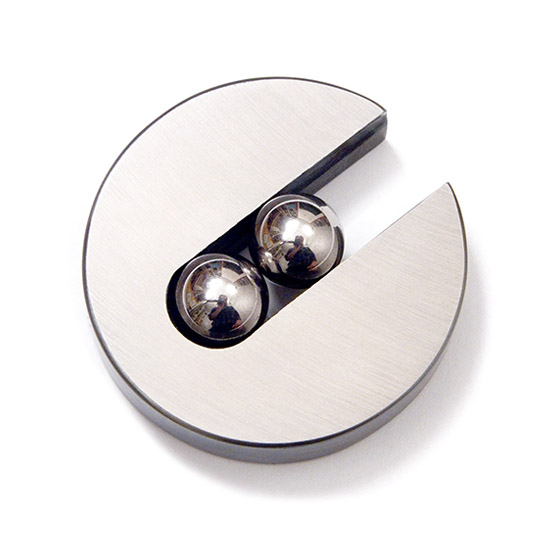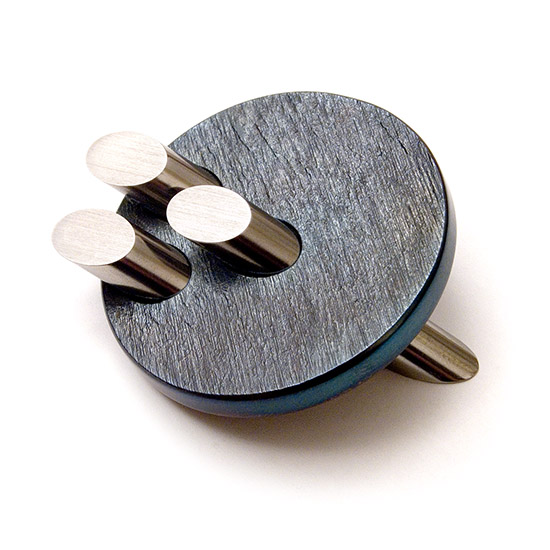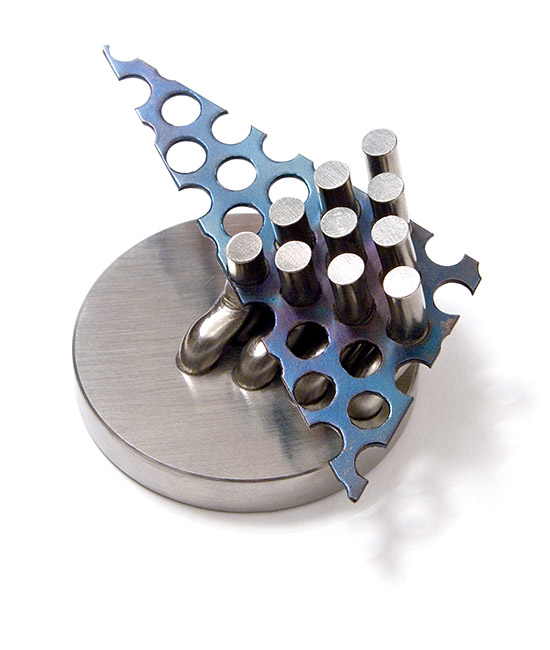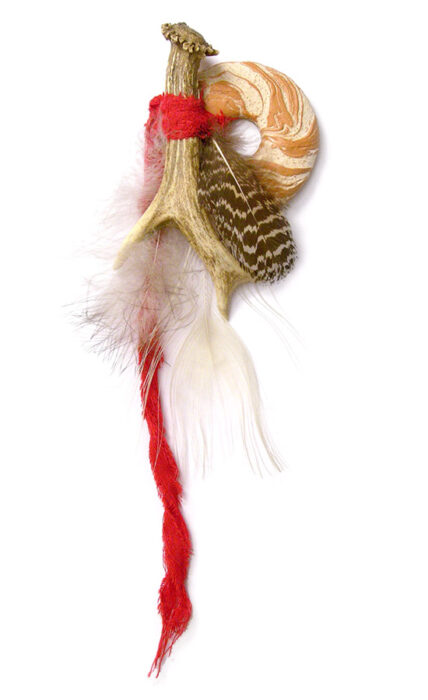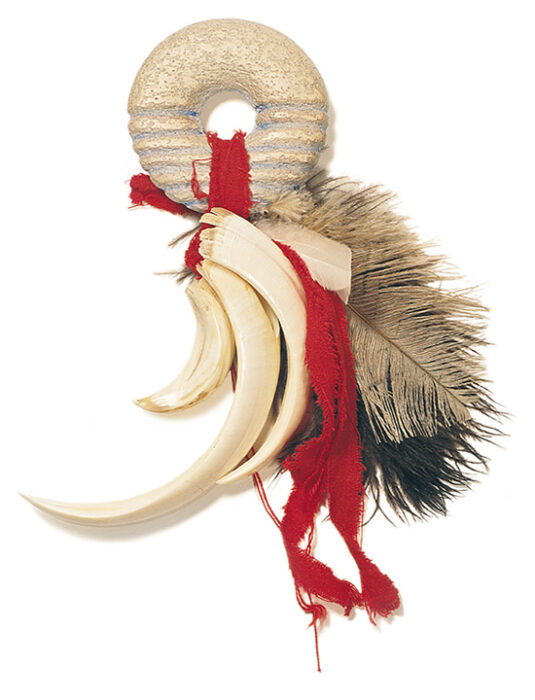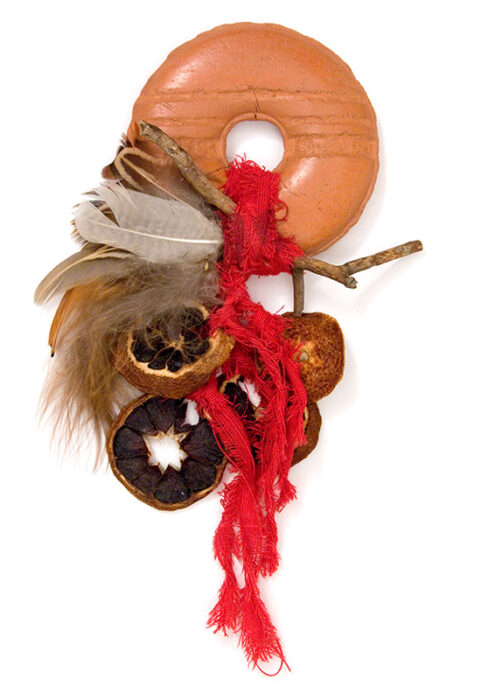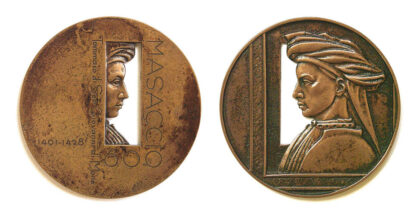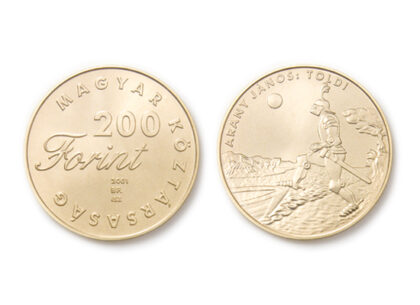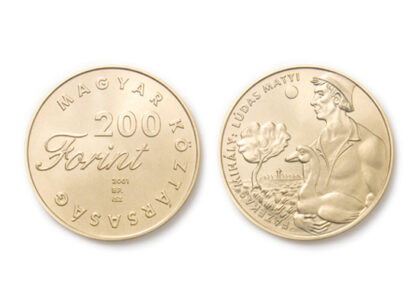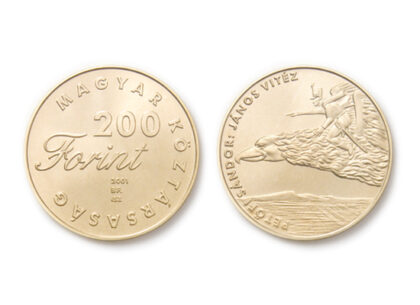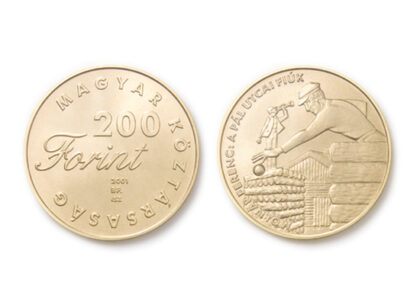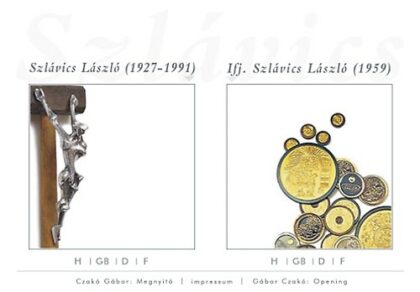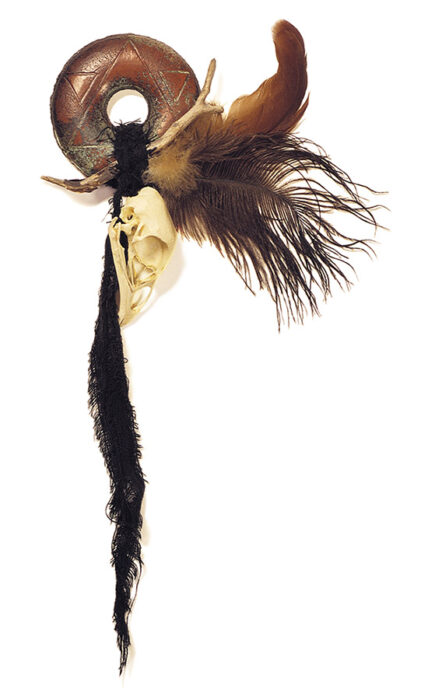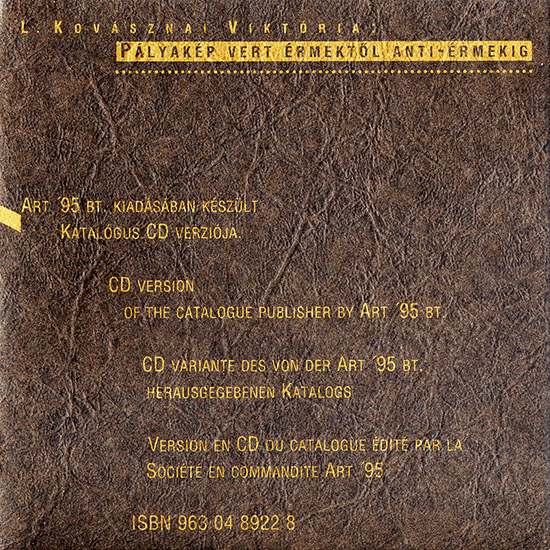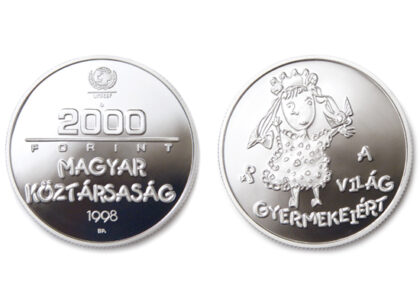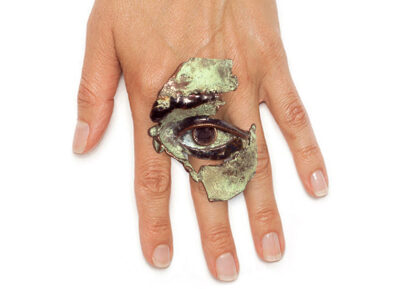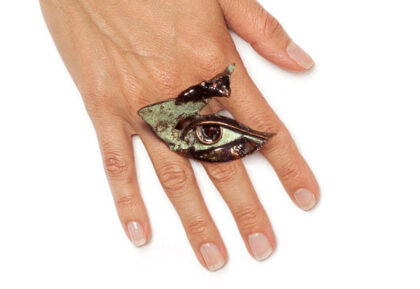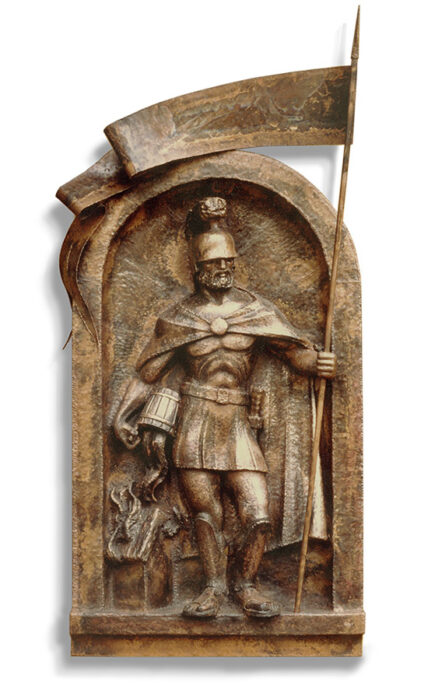Newer Jr. Szlávics works of art have been added to the subject collection of Tamás Kárpáti Hungarikonok
The personal object of three Hungarian icons – a work of art made using his objects has been included in the prestigious private collection:
The László Szlávics Jr. website has been renewed
The website of László Szlávics Jr. has been completed, in a new structure, with expanded content!
Photo reproductions of hundreds of works, data, current events, events, all important information about the artist that is publicly available.
KisKép Gallery in a new location – with the works of László Szlávics Jr.
1016 Budapest, Krisztina körút 75/A
Tel: +361 2014935
[email protected]
We wish you a happy holiday season and a prosperous new year – László Szlávics Jr.
In his weekly contemporary show – Attila Ledényi, the founding director of Art Market Budapest, in the background the work of László Szlávics Jr.
In his weekly contemporary show – György Gajzágó talks to the founding director of Art Market Budapest art fair, Attila Ledényi. In the background the work of László Szlávics Jr.
Budapest 100 – Open studios at the Százados út Art Colony
Within the framework of this year’s Budapest 100 program, with the support of the Józsefváros Municipality, the Százados út Artists’ Colony will open its doors.
On this day, the studio of László Szlávics Jr. can be visited by organized groups.
Anna & Márton S. duo and its guests – Quarantine concert video recording in the studio of László Szlávics Jr.
The Anna & Márton S. duo and their guests: Vera Földi and Szabolcs Sári
A38 Ship – Quarantine Concert Series
Host: Dunai Misi
Speakers: Anna Szlávics, Márton Somogyi, Szabolcs Sári, Veronika Földi
Vocal: Anna Szlávics
Keyboard: Márton Somogyi
Vocal: Veronika Földi
Trumpet: Szabolcs Sári
I’m at home – A38 Ship quarantine concert Cirkusz-KA ensemble video recording in the studio of László Szlávics Jr.
vocal: Anna Szlávics
guitar: Tamás Rock
double bass: Dániel Arday
percussion: Gábor Clemente
music: Anna Szlávics & Tamás Rock
lyrics: Anna Szlávics
recording, mixing and mastering: Anna Szlávics & Tamás Rock
Cirkusz-KA – Quarantine Concert // Carpathian Basin Anzix
Photos of the scene and filming:
From Szlávics to Szlávics – the exhibition of László Szlávics Sr. and Jr. opens in the Szolnok Gallery
50th solo exhibition of László Szlávics Jr. in the building of the Szolnok Synagogue.
Greetings: dr. László Horváth is the director of the János Damjanich Museum
The exhibition will be opened by: Róbert Péter Csiszár, curator and director of the exhibition
Designer of the building: Lipót Baumhorn, year of construction: 1899., renovation: 1960, 1972, building photos: Gyula Rácz, Christi
Exhibition of László Szlávics Sr. in the exhibition space on the ground floor:
Works by László Szlávics Jr. in the upstairs exhibition space:
A new exhibition is being built in the Gallery, Szolnok Television’s report on the organization of the exhibition 08/01/2020.
Szolnok Television’s program called Kultúrkorzó about the exhibition 12/02/2020
We wish you a happy holiday season and a prosperous new year – László Szlávics Jr.
The December issue of Life and Science has been published – the cover shows a wall clock statue of László Szlávics Jr.
The works of László Szlávics Jr. – Art Market Budapest 2019 in art fair
Presents the works of László Szlávics Jr. and Péter Botos in the G702 exhibition space.
October 3 – 6, 2019 Budapest, Millenáris
We wish you a happy holiday season and a prosperous new year – László Szlávics Jr.
Published The Medal – Viktória L. Kovásznai: Time and space differently – Recent medallic work by László Szlávics Jr
London, The Medal, No. 73 Autumn 2018.
A PDF version can be downloaded from the writings menu.
The works of László Szlávics Jr. – Art Market Budapest 2018 in art fair
The presents the works of László Szlávics Jr. and Péter Botos in the G704 exhibition space.
October 11-14, 2017 Budapest, Millenáris
During the art fair, two models, Emese László and Patrick Murakami, walked on site with their body sculptures by László Szlávics Jr..
Dress designer: Zoltán Rostás.
Some photos from the event:
Cirkusz-KA ensemble – Clip shooting in the studio of László Szlávics Jr.
The recording and post-production of the video clip “Spin” by the band Cirkusz-KA was made by the team of Reindeer Cinema.
Directed: Ábel Fadgyas
vocal: Anna Szlávics
guitar: Tamás Rock
double bass: Tamás Géza Szalay
music: Anna Szlávics & Tamás Rock
lyrics: Anna Szlávics
recording, mixing and mastering: Anna Szlávics & Tamás Rock
Artúr Görgei – inauguration of a portrait sculpture
In honor of the 200th anniversary of the birth of General Artúr Görgei, the Municipality of Visegrád will place the work of László Szlávics Jr. in the inner courtyard of the Town Hall. The work created within the framework of the invitation to tender was placed in a smaller size than the original plan.
Mayor András Félegyházi gives a greeting.
The statue will be unveiled by Dr. Gábor Földváry, Deputy State Secretary of the Ministry of Defense.
The work is praised by sculptor Ádám Farkas.
We wish you a happy holiday season and a prosperous new year – László Szlávics Jr.
Book presentation – Tibor Wehner: The last hour is always struck – László Szlávics Jr.’s works in the round
The publication published by Pauker Könykiadó is presented by art historian Lajos Lóska, hosted by Ágnes Koós. Art Market Budapest art fair, Millenáris B building G702 exhibition space
The works of László Szlávics Jr. – Art Market Budapest 2017 in art fair
The presents the works of László Szlávics Jr. and József Zalavári in the G702 exhibition space.
October 12-15, 2017 Budapest, Millenáris
Some photos from the event with the works of László Szlávics Jr.:
Solo exhibition – Sopron Museum
The National Medal Biennale was founded forty years ago this year. In the previous exhibition, the independent chamber exhibition of the younger sculptor and medalist László Szlávics, who was awarded the Béni Ferenczy Grand Prix, can be seen in the small hall of the Lábasház in Sopron.
Of the works made in the eight years since the previous Grand Prix, 78 carefully selected works are on display.
In the catalog of the National Medal Biennale, art historian László Beke wrote an introduction to the artist’s works available in English and German.
The exhibition can be viewed from June 18 to August 6, 2017. Lábasház, Sopron Museum, Sopron, Orsolya tér 5.
The solo exhibition was directed by: Viktória L. Kovásznai
Exhibition of László SZLÁVICS jr., winner of the Grand Prize of the 20th National Biennial of Medal Art
Medal artist László Szlávics jr.: a lesson in contemporary (art) history for viewers
The exhibition plan of the Sopron Medal Biennial Grand Prize winner László Szlávics Jr. is one of the most logical and cogent exhibition plans I have ever seen. It consists of six showcases, each evolving from the previous one or from the rest. But this logic is deceptive, for each showcase (group of art works) is interrelated with the rest by a variety of threads. It is not really logic (art rarely obeys the rules of Aristotelian logic), but rather a conception, or an idea that may undergo several modifications until the opening of the exhibition.
The writer of the catalogue introduction braces himself to face up to the selection of art objects, trying to analyze it so as – allegedly – to help the viewers understand the works. The artist, on the other side, sees his works differently. Actually, there is a hardly concealed struggle between critic and artist here, which is only alleviated by the fact that criticism is different from an introduction, the former may as well be negative, but the latter may not go further than being indifferent. A sort of “healthy compromise” emerges between the two which might also be called a reading.
Let’s see then what can be read out of the works in each of the six showcases.
1. Showcase: For István Harasztÿ’s Birthday I-X (2009-2016). The series pays tribute to the creator of the most recent wave of kinetic art in Hungary, István (“Édeske” [Sweetie]) Harasztÿ. It was he who kept stretching the boundary of the medal with his moving metal disks already in the last century. With sympathetic humour Szlávics improves on the celebrated master’s inventions, even adjusting the titles to him: Marking Time, In the Vanguard, Latitude, Gateway, Elusory, Meander, etc. – that is, diverse allusions to the – mostly magnetic – movement of metal balls and other small metal objects on the surface of discs. A whiff of humour may be suspected when the actual anniversaries behind the objects created in the seven years are inquired about, knowing that the master was born in 1934… the 75th was then the first.
Here belongs the cycle in honour of Szlávics’ other master Agamemnon (Memos) Makris (2009) – and the commemoration of the Greek town Patras with house facades built from pieces of burnt wood with staples (!). Is a wooden relief still a medal when only the 15cm x 15cm overall shape preserves the memory of one-time bronze or precious metal reliefs? Speaking of peculiar place names, we may mention Torii and Röjtök – the latter still familiar to the Hungarian ear (as the first member of the village name Röjtökmuzsaj and also as an alternative to rejtek ‘hide-out’), while Torii may be the ancient name of Torino, or a Japanese noun… as it turns out, it is the name of the famous Japanese gates (2008).
2. Showcase: Plaques (2012). The reference to the medal prevails but regarding the use of materials, we should rather speak of collages or assemblages here. In addition to burnt wood, iron and brass elements also appear. Wood is reminiscent of cracked soil as well. No.31 and No.32 generate associations to Lajos Kassák and László Moholy-Nagy. Ontogeny follows phylogeny? While medal art, like the related genres of coins, or also postage stamps and seals, began to define itself conceptually, it arrived at the ready made and objet trouvé, and proceeded even further to autonomous object creation and surface execution.
3. Showcase: About time. Clockworks (2014). Apart from involving newer and newer genres into the production of his “medals”, Szlávics is also busy creating metaphors. The exposure of cogwheels, springs and other parts is conceptually complemented by peculiar titles, temporal references such as Ancient times, Past Time, Moment, Music Machine, Soviet time (“Slava” clock from the former Soviet Union), Hommage à Jules Verne.
4. Showcase: About time. Shattered clockworks (2014). Barring the size of the exhibited objects, this showcase has nothing to do with the medal whatsoever, but conceptually it is connected to the previous vitrine. Some of the pieces suggest a cataclysm. The famous slogan of John Lennon and Yoko Ono – “War Is Over! (If You Want It)” – announced the end of the Vietnam war. In a Firestorm (a technical term of a nuclear disaster) everything gets deformed, even melted away. You can’t help recalling Dali’s Melting Time metaphor. The other (shattered) type incorporates metaphoric linguistic plays in the titles: Space Warp Meter, Wormhole Gauge, Dimension Modulator, Declination Marker, Portable Latitude Searcher. Harasztÿ could exclaim again: “I might have made them myself!”
5. Showcase: Shattered cameras. Hommage à Robert Capa and Memento (2015). Shattering continues with the 36 mm Leica-size cameras, which appear to emerge from under the ground after a war, as it were. Reference to the famous photographer (killed in the Indochina war by a mine) commemorates photo reporters of all times.
6. Showcase: Human eye and camera lens. “Big Brother” (2015) and Roswell ’47 (2016). A type of camera parts – lenses – that stare at you apprehensively when you catch their glance emerged from the sand like archeological finds in the previous showcase, too, in the Memento series. “Big Brother” is now familiar to everybody from George Orwell’s novel 1984: Big Brother is watching us day and night, there is no hiding from him. On the other side, the Big Brother was the Soviet Union where several of the cameras were produced. So far, that would just be cheap political humour, if you failed to realize that the component part termed “optic” i.e. lens is only the mount of the lens and the place of the actual lens is taken by an artificial glass eye. This recognition endows all implications with polysemantic meaning. One piece of the cycle, “Minority Report”, is quite intricate because, for one thing, the lens-eye is covered by the lamellae of a central lock. Thus, the cycle is not only about looking and seeing, but also about the media and communication.
The background to Roswell ’47 is most probably only known to those who look it up in special literature. The small town in New Mexico was the venue of the first major UFO disaster in the last century, in 1947, where extraterrestrial wrecks and remains even of living beings were allegedly found. Research gained momentum at the end of the last century, Szlávics joining this revival of interest. His most important find is a glittering steel plate emerging from the sand with strange signs (of writing?) on it, which may inspire associations to the golden plates of the Prophet Mormon or to the information about the Earth placed in the Venus rocket (1961). In both cases we have strange extraterrestrial communication.
The internal associative network of the six showcases illustrates how László Szávics Jr., perhaps the most spectacular innovator of the Hungarian medal, has covered the historical path of redefining the art of the medal over the past decade, from the traditional genres and techniques of sculpture and relief, touching on metal working, goldsmith’s art and jewellery, in no little measure upon the influence of conceptual art and object art. He has pondered on the interconnections of art and science, technology and culture, and arrived at comprehending the current state of the media and communication.
László Beke
The Lajos Berán Award medal has been completed
On the fortieth anniversary of the National Medal Biennale, Hungarian Mint LTD. Established the Lajos Berán Prize. The 65 mm diameter minted medal, which symbolizes the award to be presented for the first time this year, was made according to the plans of László Szlávics Jr.
We wish you a happy holiday season and a prosperous new year – László Szlávics Jr.
The Beauty of Animals – Honorable Mention
Among the works received for the international medal competition announced at the Tongdao Gallery, The Beauty of Animals – First Global Art Medal Grand Prix in Beijing, the minted copper medal depicting László Szlávics Cheetah received the Honorable mention. The Tongdao Gallery, four Chinese cities, Beijing, Shanghai, Shenyang, Dalian, and then New York will present the exhibition. The traveling exhibition opened in Shanghai in the fall of 2015 and closes with a New York premiere in February 2017.
We wish you a happy holiday season and a prosperous new year – László Szlávics Jr.
There is a solo exhibition of medal art from here and beyond in Körmöcbánya
NBS – Múzeum mincí a medailí Kremnica the Coin and Medal Museum of the National Bank of Slovakia invites you and your friends
Wednesday, July 8, 2015 at 4 pm in the gallery of the museum for the opening of the solo exhibition of the sculptor and medalist László Szlávics Jr.
The exhibition will be opened by art historian Ľuba Belohradská.
Available until August 2,
LÁSZLÓ SZLÁVICS junior – medallist without limits
Let me begin with some biographical details about László Szlávics junior. Like his eponymous father, his background is in sculpture. There was, so to say, a seamless transition from the nursery to the sculptor’s workshop. In such circumstances an artist quickly gains the expertise and mastery that most novice sculptors would acquire only after a lengthy training process. The rest is then a question of an inborn talent that lays the basis for the career.
In the field of music we speak of ‘child prodigies’ whose extraordinary abilities are apparent from an early age. After completing secondary education at the School of Applied Arts in Budapest, Szlávics joined his father’s workshop in order to refine his skills. He was guided by both his father and by the prominent Greek sculptor Agamemnon Makris (who had enriched the local sculpture scene after being granted political asylum in Hungary).
The late 1970s, when Szlávics junior emerged as a sculptor in his own right, was a time of key events in the history of Hungarian medallic art, when in 1977 the Hungarian National Gallery hosted a memorable edition of the FIDEM international art medal congress, and the same year saw inaugural editions of both the Nyíregyháza-Sóstó international symposium of cast medals and the National Biennale of Medallic Art (the Biennale, held in the western Hungarian town of Sopron, was hosted for the twentieth time in 2015).
The opportunity to share creative insights about medallic art directly at events in Budapest was a catalyst in the development of the young Szlávics as a medallist. His decision to focus on designing medals and plaques may also have been inspired by the art medal exhibition at the FIDEM congress.
In almost four decades as a medallist László Szlávics has employed every historical technique known in the craft. For example, he has created struck medals by engraving a steel matrix and then striking the medal by hand (a technique also used by the Austrian artist Helmut Zobl, who won second prize at the Kremnica International Quadrennial of Medallic Art in 1992). His work in cast medals and plaques displays extensive refinements.
In line with evolving trends in the last third of the 20th century that saw increasing crossovers between medals, plaques and artwork, Szlávics enhanced his range of artistic techniques with the addition of assemblage – capturing the poetics of objets trouvés in such a way as to inspire new and significant associations. Assemblage has allowed the artist to link together various discarded objects of modern civilisation (for example, clock mechanisms and faces, corroded iron), or new materials and technologies not typically associated with medals (for example, plexiglass combined with a photographic image or with white shiny metal), as well as organic materials (such as specially treated animal bones, feathers of exotic birds, seashells and cork), or sand and paper. For this artist, wood has a special place in the hierarchy of materials. We might expect him to carve wood, but Szlávics makes do with sanding, rasping and arranging fragments, and then, as it were, sewing them together with metal attachments. He exploits the subtly differentiated colour shades of the surface facture and the internal structure, which is revealed through sanding and then transformed through charring.
The age of the wood fragment – or ‘the memory of the wood’ – becomes the direct bearer of the message conveyed by the particular work, in other words a philosophical meditation about the time and processes of expiration. By softening the relief composition, the artist achieves a kind of image relief.
Let us turn our attention to the message of Szlávics’s medallic art and sculpture workshop, with formal perfectionism being a sine qua non of the artist’s personal message.
The core thematic cycle comprises struck medals portraying leading figures from Hungary’s past and from the sciences and arts. From a conventionally designed medal disc, Szlávics sets to work on the body of the medal, cutting out the space into which he inserts the portrait (of, for example, Dante, Andersen, Masaccio).
In later works, he turned the portrait into a form of assemblage (seen, for example, in the ‘Family’ cycle depicting his father, mother, sister and himself) that incorporates photographic images. This technique was also applied in his ‘Tribute to the masters’ cycle. In portraying the artists Kassák, Moholy-Nagy and Haraszty, he uses not only photographs but also their own works as a form of attribution.
Szlávics’s medals represent a coherent axis of inspiration and thought that evokes historical reference to constructivism, which has been a continuous feature of Hungarian fine art from Kassák and Moholy-Nagy through to contemporary forays into deconstruction or the light ironising paraphrase – as exemplified in the work of Szlávics’s friend and sculptor István Haraszty.
Philosophical seriousness and intellectual depth are revealed in what are known as the meditation cycles – devoted to ancient cosmological ideas about the essence of the world (symbolised by the four elements: earth, air, fire and water), in the appellative ecological cycle warning about water pollution, and in the cyclical apocalyptic ‘relief images’, which are assemblages providing the artist’s personal interpretation of things that happened in the 20th century.
A key symbolic construct of Szlávics’s artistic language is the depiction of the house, the dwelling, or the devastated ruin. In this regard, it is worth noting the use of such symbolism in Hungarian sculpture, where the house and its internal space takes on the spiritual quality of a ‘cover’ for the human story, as we can see, for example, in the work of the sculptor Erzsébet Schaár in the second half of the 20th century.
Szlávics became a committed devotee of the mythologies of natural nations and of the magical, irrational and even miraculous shamanic practices associated with them. In his beautifully vivid and jewel-like ‘shamanic coins’ there are loose artistic allusions to the ritual adornments of Indian medicine men and tribal chiefs.
To the field of contemporary Hungarian and European medals, plaques and chamber reliefs, Szlávics has introduced a symbiosis of the raised element and richly shaded surface colour. In this way his works achieve a fullness of expression.
The exhibition of works by László Szlávics junior is a highlight of the current season at the Gallery of the NBS Museum of Coins and Medals in Kremnica, which has previously exhibited other distinguished medallists from both Slovakia and abroad, such as the Bulgarian Bogomil Nikolov, the Czech Jiří Vlach, and the Pole Jacek Dworski.
Ľuba Belohradská
Kremnica, 7 and 8 July 2015
Studio visit at the sculptor László Szlávics Jr.
Organized by the Józsefváros Gallery on Saturday, June 13 from 3 pm at the Százados út Artists’ Colon.
We wish you a happy holiday season and a prosperous new year – László Szlávics Jr.
Afternoon of Open Studios – with László Szlávics Jr.
Sunday afternoon, June 1, 2014, detailed program at the Százados út artist colony
Experience report on Dívány.hu with photos by Bianka Rostás
The commemorative coin of Béni Egressy from the bicentenary was published
The coin is part of the international collector programme “Europe” featuring the common topic “European composers” in 2014
denomination: 10 000 Ft
edge: PP
date of issue: 2014.04.22.
material: Ag/Silver
fineness: .925
issue limit: 5000
diameter: 37 mm
weight: 24 g
designer: László SZLÁVICS Jr.
denomination: 2 000 Ft
edge: BU
date of issue: 2014.04.22.
material: non-ferrous metal
issue limit: 5000
diameter: 37 mm
weight: 24 g
designer: László SZLÁVICS Jr.
We wish you a happy holiday season and a prosperous new year – László Szlávics Jr.
Janis Joplin – sculpture initiation ceremony
We wish you a happy holiday season and a prosperous new year – László Szlávics Jr.
Inauguration of the bust of Franz Liszt
December 11, 2012 at 7 p.m.
László Szlávics Jr. donates a large bust of Franz Liszt to the Department of Music of the Savaria University Center of the University of West Hungary. The work will be placed in a concert hall named after the composer as part of a traditional Advent concert.
Inauguration of István Örkény’s portrait sculpture
May 30, 2012 at 5 p.m.
In honor of the 100th anniversary of the birth of István Örkény, László Szlávics Jr. donate a life-size portrait of the writer to the Tata City Library. The cast bronze work will be placed in the reading room of the institution.
Book presentation and medal exhibition in the Széchenyi Hall of the Hungarian National Museum
May 24, 2012 at 4 p.m.
Argumentum Publishing House, the Hungarian Treasury and the Hungarian National Museum Sincerely invite you Viktória L. Kovásznai: For the presentation of the book László Szlávics Jr.
The volume is presented by art historian Katalin Keszthelyi.
At the venue of the event, an exhibition of sixty-four works donated by László Szlávics Jr. to the Medal Collection of the Hungarian National Museum can be seen.
We wish you a happy holiday season and a prosperous new year – László Szlávics Jr.
The Christmas issue of the Hungarian Applied Arts magazine has been published
On the front page, László Szlávics Jr., with a reproduction of a portrait sculpture by Franz Liszt.
8th Goldsmiths’ Biennale – Budapest capital 2th District Municipality Award
8th Goldsmiths’ Biennale – Budapest capital 2th District Municipality Award
László Szlávics Jr., a sculptor and goldsmith, received the award in the exhibition hall of the Klebelsberg Cultural Mansion in Budapest.
The award-winning work:
The commemorative coin of Adam Clark from the bicentenary was published
The Magyar Nemzeti Bank has issued a gold commemorative coin with a face value of HUF 5000 to celebrate the 200th anniversary of the birth of Adam Clark. By issuing the coin, the Bank pays tribute to the builder of the Széchenyi Chain Bridge and architect of the Tunnel under the Buda Castle.
Denomination: 5 000 Ft
edge: Proof like
date of issue: 2011.08.14.
material: Au/Gold
fineness: .999
issue limit: 10000
diameter: 11 mm
weight: 0,5 g
designer: ifj. Szlávics László
18th National Biennial of Medal Art – Organizing Committee Award
László Szlávics Jr. received the Award of the Organizing Committee.
Award-winning works:
The Champion – Bust Inauguration
The work of László Szlávics Jr.: The Champion was inaugurated at the new Kruj Iván Sports Hall of the ESMTK Wrestling Department.
The bust made of copper plate in the foreground is a donation from the artist.
We wish you a happy holiday season and a prosperous new year – László Szlávics Jr.
The commemorative coin of Ferenc Erkel from the bicentenary was published
The Magyar Nemzeti Bank has issued a gold collector coin ‘Ferenc Erkel’ with a face value of HUF 5,000 with to celebrate the 200th anniversary of the birth of Ferenc Erkel. Because of its small size, the gold coin is special, being the first Hungarian issue to be admitted to the international programme ‘The Smallest Gold Coins of the World’.
Denomination: 5 000 Ft
edge: Proof like
date of issue: 2010. 11. 06.
material: Au/Gold
fineness: .999
issue limit: 10 000
diameter: 11 mm
weight: 0,5 g
designer: ifj. Szlávics László
John Lennon – sculpture initiation ceremony
We wish you a happy holiday season and a prosperous new year – László Szlávics Jr.
Solo exhibition – Sopron Museum
Simultaneously with the National Medal Biennial, as a side event, the previous exhibition features a solo exhibition of the artist awarded the Ferenczy Béni Grand Prix in the small hall of the Sopron Museum.
The carefully selected exhibition material provides an overview of the hundreds of medals made over more than three decades.
In the catalog of the biennial, the study of Antal Tóth gives an overview of the artist’s work. The full text of the article entitled A Wizard in Hungarian Medallic Art, together with reproductions of works of art, is available by clicking on the link.
The study can be downloaded in pdf format under the ‘Writings‘ menu item.
The exhibition can be viewed from June 21 to September 6, 2009. Lábasház, Sopron Museum, Sopron, Orsolya tér 5.
Exhibition of László SZLÁVICS jr., winner of the Grand Prize of the 16th National Biennial of Medal Art
A Wizard in Hungarian Medallic Art
It is an obligation for László Szlávics jr. to produce this exhibition, since the organizers of the Sopron Medal Biennial follow the time- tested practice and expect the Grand Prize winner of the previous show to present his/her work in greater depth. (This expectation is at the same time a flattering offer.)
Szlávics jr. wishes to comply by presenting a transparent cross-section of his oeuvre abounding in turns and new solutions in proof of his openness to innovation and restless mental constitution. Not that it means that he rhapsodically tries his hand at this and that. Quite contrarily, he carefully and persistently digs down to the root of any problem that captures his attention and goes on to seek a new challenge when he has exhausted the potentialities of the previous one.
It would not be like him if he did not overbid the offer by putting on display some of his small sculptures as well in the town, in the Körmendi Gallery, in addition to his medals. Not only this complementary exhibition but also the fact that he goes into small sculpture as well is a surprise. Earlier his sole interest was the medal.
László Szlávics jr. began making medals in the traditional manner, but with the intaglio technique. (In the wake o Miklós Borsos and László Csontos it became a popular technique.) In time he replaced their plaster base, which proved too yielding, with steel, reviving a procedure that is only used by the minting institute today.
He has made struck and cast medals alike. The culmination of the previous technique was marked by the ensemble of the Amerindian coins produced with a technical expertise as if they had been issued by the Mint. The perfect technical execution is one of the main idiosyncratic features of Szlávics’s art: he is a
technical genius who wastes his technical skills on useless things. He constructs practically purposeless but aesthetically valuable contraptions of impeccable mechanical and electromechanical subtlety such as the Time- keeper or Four Elements. Beside him the only handy-man sculptor of similar
stunts is Édeske (István Harasztÿ).
Let’s return to the starting point. Szlávics improved on the concept of pseudo-money when he created valuables of never existing civilizations (of Stone Age level) from feathers, shells, dried fruits and innumerable other materials to produce his Cultic Proto- Money series. With them he has stretched the
boundaries of medallic art to the extreme, to the anti-medal (as Viktória L. Kovásznai has interpreted them). These objects assembled with the macramé technique can only be linked to medallic art (pseudo-money/coin/medal) in a conceptual way, and each piece is unique and irreproducible. This resistance to
multiplication is perfectly contradictory to this small but prolific art form. It neglects the millennia- tested criterion of the medal.
I think it is the miracle of Hungarian art history and art criticism – even though it can be fairly accurately traced what art political constellations and aesthetic considerations were underlying it – that these objects have been recognized as medals and their creator applauded as a medallist.
The elements, diverse materials used for the cultic protomoney inspired new ideas in the artist who has been creating his works including medals from found (found? adequately selected) objects in the past decade. In this regard, he has treaded in his father’s footsteps; in the old- age period of his
career László Szlávics sr. created his shocking, surrealistic sculptures from household and industrial metal waste picked mostly from junk-heaps.
His son, the medallist compiles his medals from a variety of materials such as wood, bone, metal, textile, paper, sand, etc. One group of works insists on the square or round forms reminiscent of the classic medal and plaque in form and size, while another group contains open, irregular compositions with wayward silhouettes, and though they are horizontal objects, they look like small sculpture rather than medal. In the new works a change can be discerned in the artist’s approach and conception: the troublesome work of steel engraving and the mechanical precision have been left behind. Having freed himself of these cumbersome and elaborate methods of execution, the artist has begun to work with “impressive inventiveness”, making work playfully enjoyable first of all for himself. Of course, it needed a great amount of courage!
This turn was also accompanied by a change in themes. From his inventions belonging to pseudo-prehistoric cultures embodied by the Amerindian coins and the Cultic proto- moneys, and from the closed systems measuring real yet abstract time in periodic movement (Time- keeper, Yin- yang, etc.) he switched over to the themes of personally experienced time called history. It is represented by Covenant, Holy Land, My 20th century, Ancient Jewish Cemetery (the latter paying tribute to a fellow artist), etc. and even Family, all being subjective reflections of history.
László Szlávics jr. has set several new norms in Hungarian medallic art. It was presumably not his express aim, but he was merely following the dictates of his innovative mind to do something new not yet found in the trade.
He is heading in this direction, with the sure – and literally tangible – conviction that at the extremes, on the limits of the art form there is still a lot to be searched – and found out.
Antal Tóth
The works in the exhibition:
Inauguration of the bust of Franz Liszt
László Szlávics Jr. donated a bust of Franz Liszt to a primary art education institution in Sopron.
The work, made of copper plate, was placed in the concert hall of the music school.
We wish you a happy holiday season and a prosperous new year – László Szlávics Jr.
I. Ars Pannonica Biennial of Fine Arts – Special Prize
The 1st Ars Pannonica Fine Arts Biennial, held at the Szombathelyi Gallery, received its special prize at the opening ceremony by László Szlávics, Jr.
The award-winning work:
Jubilee John Calvin commemorative medal – Hungarian Reformed Church
In honor of the 500th anniversary of the birth of John Calvin, the Hungarian Reformed Church decided to issue a commemorative medal. He announced a national public competition for the selection of the work, where the first place was won by the work of László Szlávics Jr.
The winning work:
“550th anniversary of the ascension to the throne of Mátyás Hunyadi” – gold collector coin
Denomination: 50000 Forint Au
edge: PP
date of issue: 2008. 01. 21.
material: Ag./gold
fineness: 986
issue limit: 5000
diameter: 25 mm
weight: 10 g
designer: Szlávics László, Jr.
We wish you a happy holiday season and a prosperous new year – László Szlávics Jr.
Honorable Mention – FIDEM XXX Art Medal World Congress, Colorado Springs, USA
The FIDEM XXX World Congress of Medal Art exhibition has opened, Colorado Srings, USA.
The exhibition featured 2,400 works by 800 artists from 30 countries. The jury awarded the performance of two artists.
László Szlávics Jr. was awarded the Honorable Mention.
Award-winning works:
16th National Biennial of Medal Art – Béni Ferenczy Grand Prix
The National Medal Biennale opened in Sopron. At the opening ceremony, Mátyás Firtl, Member of Parliament of Sopron, presented the grand prize of the exhibition to sculptor and medalist László Szlávics Jr.
Award-winning works:
We wish you a happy holiday season and a prosperous new year – László Szlávics Jr.
Inauguration of the bust of István Széchenyi
László Szlávics Jr. donated a bust of Count István Széchenyi to the Budapest Shipping High School.
The work made of copper plate was placed in the foyer of the institution.
Erika Ligeti Award
The recognition was founded by the Medal Section of the Association of Hungarian Fine and Applied Artists.
Its aim is to preserve the memory of Erika Ligeti and to recognize the outstanding medal art activity.
The members of the Section awarded the prize for the first time to László Szlávics Jr. by secret ballot.
The symbol of the award is a bronze copy of Erika Ligeti’s small sculpture.
2th ARTicum International Biennial of Fine Arts – Sculpturist Award
At the grand opening of the 2th ARTicum International Biennial of Fine Arts in Szolnok, László Szlávics Jr. received the Sculpturist Award of the exhibition.
The award-winning work:
Book presentation and solo exhibition, Árkád Gallery, Budapest
Published Viktória L. Kovásznai: Time and Space in Recent Works by László Szlávics Jr. 1995 – 2005.
Publisher: Art ’95, ISBN 963-04-8922-8
On this occasion, the works in the publication can be seen in an exhibition.
The guests are greeted by: Ágnes Urbán, Secretary General of the Association of Hungarian Fine and Applied Artists.
Art historian Antal Tóth will present the book and open the exhibition.
Árkád Gallery, Budapest, Rákóczi street 30.
An online version is available here
The pdf version from book can be downloaded from the writings menu item.
Silver-javelin National Fine and Applied Arts Competition – 3rd Prize
László Szlávics Jr. received the 3rd Prize of the Fine Arts category at the ceremonial opening of the Silver-javelin Fine and Applied Arts Competition held at the National Sports Museum in Budapest.
“Only from a pure source” fine art exhibition – Special prize
In Budapest, a fine art exhibition entitled “Only from a Pure Source” was organized at the Renée Erdős House in honor of Béla Bartók. At the opening ceremony, László Szlávics Jr. received the Special Prize of the exhibition.
Lecture by Viktória L. Kovásznai on the new works of László Szlávics Jr. in Hungarian Numismatic Society
Viktória L. Kovásznai will give a pictorial presentation at the congress of the Hungarian Numismatic Society: László Szlávics Jr.’s New Medals 1995-2005.
János Tornyai statue inauguration
László Szlávics Jr. donated his work on the name giver to the János Tornyai Primary School in Hódmezővásárhely.
The bust made of copper plate was placed in the foyer of the art school.
The Karinthy Theater received a portrait of Frigyes Karinthy
László Szlávics Jr. donated his life-size portrait of Frigyes Karinthy to the first permanent theater in Újbuda.
The cast bronze work was placed in the lounge of the institution.
We wish you a happy holiday season and a prosperous new year – László Szlávics Jr.
15th National Biennial of Medal Art – Award of the Foundation for Hungarian Medal Art
László Szlávics Jr. received the Award of the Foundation for Hungarian Medal Art.
Award-winning works: Eine kleine Nachtmusik, 2004., violin, wood, mixed , media, 114 x 114 – 114 x 114 mm
We wish you a happy holiday season and a prosperous new year – László Szlávics Jr.
Published Hungarian, Early Christian Necropolis of Pécs, silver collector coin
Part of the series World Heritage sites in Hungary
The Early Christian Necropolis is an archaeological exhibition site near the St. Peter and Paul Cathedral in Pécs.
On 30 November 2000, the site was declared a part of UNESCO’s World Heritage.
Denomination: 5 000 Ft
edge: BU & Proof
date of issue: 2004.12.09.
material: Ag/silver
fineness: .925
issue limit: 5000 – 5000
diameter: 38,61 mm
weight: 31,46 g
designer: László Szlávics Jr.
The László Szlávics Website has been renewed
The website presenting the works of László Szlávics, older and younger, has been expanded, in addition to the large number of reproductions of works of art, the full material of studies, including several published books, is available online.
Petőfi in Fine Arts – National Competition 2th Prize
László Szlávics Jr. received the 2th prize.
Award-winning works:
14th National Biennial of Medal Art – Civitas fidelissima Award
László Szlávics Jr. received the silver medal at the 14th National Biennial of Medal Art.
Award-winning works:
For Dezső Váli’s birthday – Studio, 2002., wood, iron, textile, mixed media, 95 x 95 – 95 x 95 mm
For Dezső Váli’s birthday – Ancient Jewish cemetery, 2002., wood, iron, mixed media, 100 x 100 – 100 x 100 mm
Jenő Rejtő memorial exhibition 1st prize
At the ceremonial opening of the exhibition held at the Petőfi Literary Museum, László Szlávics Jr. received the first prize of the national fine art competition.
The award-winning work: ‘P. Howard – To go or to die’, 2003., iron, wood, bone &c., mixed media, 100 x 100 – 100 x 100 mm
Artifact of the Month – Hommage à Vincent van Gogh Commemorative Medal
The painter, on the 150th anniversary of his birth, was commemorated by the Hungarian National Gallery with some medals made about him. Among them were two works by László Szlávics Jr.
Paternal Heritage – A solo exhibition opens in Vienna
The exhibition features works by László Szlávics Sr. and Jr.
October 22, 2002 – November 5, 2002
The guests are greeted by Dr. Károly Csúri, director of Collegium Hungaricum
The exhibition will be opened by writer Gábor Czakó
Collegium Hungaricum, Hungarian Cultural Institute, Hollandstraße 4. A-1020 Wien
Opening:
Ladies and Gentlemen
Welcome to the exhibition of the Szlávics masters.
It might be best to start with the simple one; it will get more complicated anyway.
The two artists, László Szlávics Jr. and Sr. are father and son.
300, 500 or even 5000 years ago nothing was more natural for the young ones to follow their parents’ trade; the painters’ sons used to become painters, in the Bach family generations of musicians followed each other. Nowadays if children follow in their parents’ footsteps, it may cause trouble, since this age, the Age of Market Economy is about competition. You are the rival of the others, so you have to beat them and if opportunity arises, wipe them out. Not all the people have the heart to do so; thus, the young ones are often worried whether they will be able to outperform their fathers or not.
Would the Market, today’s judging god recognise their efforts? Dostoievsky described the atmosphere of his age, saying that ‘it crosses everybody’s mind to kill his father’. And Freud later also elaborated the theory of father complex. Needless to say, nowadays parents often see rivals in their children as well. We don’t know whether the father complex had any victims in the artist families during the ancient religious ages before the Age of Market Economy. The flourishing and the masterpieces of the artist dynasties prove, there were much fewer victims than today.
What’s the reason? Perhaps for the simple reason that the aim and point of art was different. Today sculpture is merely one of the productional activities, which are under the control of the market, or rather of the profane forces manipulating the market. During the religious age, cult and culture used to form one unit, that is to say culture, including art had a cultic nature. It was something like a religious service. Art made an attempt to pronounce the unutterable name of God. Due to this spiritual saturation, kitsch didn’t exist in any of the periods of any of the religious ages; neither in the Middle Ages, nor in the prehistoric age, nor in the high and folk art. Clumsy works were made though, but no spiritually empty ones. Kitsch is an invention of the Age of the Market Economy along with penicillin, the telephone and the nuclear bomb. It means the work of art was made by the respect of the Market, that is, its spiritual content equals its god’s, the Market’s. That is zero.
Bulks of the works of art in the Age of Market Economy tend to become kitsch. Kitsch is something that doesn’t exist. Concerning its form, it looks like music, a sculpture, a film, but in spiritual sense it doesn’t exist. The creator of religious societies were looking for harmony, some common benefit instead of danger, that is why they didn’t sign their name on their works, though obviously there must have been some of them who longed for success, but even they knew there is no need to beat anybody else, not in the least their fathers. Making the decision about who got further in defining God’s unutterable name is not profane judges’ business, but God’s. His game rules are known from the Gospels or the saint books of tradition, according to which the meekest gets the furthest.
What joins the Szávics masters, first of all, is the normality of family traditions. Secondly, humility. The greatest respect, knowledge and application of the ancient rules of the trade. This is the basis of cultic art and other activities, pursuing the art, raising the material to the level of the spirit. At several exhibitions we can see exhibits made by metal sculptors that a beginner locksmith would be ashamed of.
Another important thing they share is glee. Béla Hamvas, the great Hungarian philosopher of the last century wrote the following about glee. “Glee is the only thing I’m not willing to give up for even the sake of lie. “Glee is the hot azure purity of the human soul freed by Christ’s smile; I am as real as I am gleeful; happiness and pain is the same; glee is one of the great wonders of the world; it comes from melancholy, which is the most delightful paradox; it’s not a laugh because it’s not overcoming, avoiding or cramp, free of history, has no other meaning but itself.”
It would be really worth taking the works one by one but I wouldn’t like to ruin your joy of discovery. Yet, let’s have a look at Leonardo da Pincsi, this fascinating flying man with its screws, or the lying figure of Life-path, which is a huge, rustic foot with the ornamentation of the proud Corinthian column head.
You can see here the famous scandalous work from the 60’s, the Paternal heritage. Christ crucified onto a hammer, if you like, the Redeemer crucified onto the working class, said to be glorious and ruling at the time – full of smile and pain, which Lászó Szlávics Sr. didn’t even renounce for the sake of lying. In front of us there is the Young woman on one huge foot. She is the woman, the anima living in the souls of men since eternity. This woman is as solid and real as the one who has a deep and spiritual relationship with the material we come from. Who is mother and material in one. In the light of glee we can say “she has both feet on the ground,”as the saying goes, since this one huge foot is enough for two. Instead of her head there is an open hand, waiting for blessing and holding onto the sky- this way the earth and the heaven is united in the woman, who creates life from the material of the earth and the blessing of the heaven.
László Szlávics Jr. also tells us stories, like his father. Of course he doesn’t produce literary short stories either, but calls us into inside happenings. Right here the guest objects of the cast bronze items: On the riverbank wing’s fluttering, will it sink? Remember? A fascinating paradox of melancholy.
The artist’s unique venture is the attempt to baptise money. Old coins, even notes used to have the portraits of kings or national heroes on them, this way bearing the marks of personality and even that of cult as well. The modern money is the electron vibrating in the credit card, or not even that, but some impersonal number the global stock exchange gurus are playing with at my expense. To say the least, they keep robbing you and me – absolutely legally, disguised by impersonality. With his cultic proto-money László Szlávics Jr. refers to other cultures and creatures he used, distant in time and space: feathers, cruel skulls of predators, strings, branches, stones – the four elements seem to unite in them, the air, the fire, the water the earth. These medals wish to name Reality again, the real value, which keep us alive. It is no mere chance that circles, triangles and squares are repeated; they are the symbols of perfection, completeness and divinity.
Let’s have a look at the assembled medals. On the one hand, they are technical masterpieces; on the other hand, they are fun and fate, which are the same because they are glee. Worthy companions of Nicholas Schoeffer and István Haraszty’s works. If we get in touch with them, seemingly sleeping time will start in them – their history will appear. Inside us.
On the struck silver medals ostriches are running under the sun, a vulture is fighting a poisonous snake, a splendid couple is dancing flamenco. There is a mirror around them.
Gábor Czakó
Some photos from the works presented:
Masaccio 600 International Art Medal Competition, Special Mention
Masaccio 600 International Art Medal Competition, Ein Vered, Israel, Special Mention, Winer, László Szlávics, Jr., from Hungary
Published Hungarian Children’s Literature series., non-ferrous collector coin
János Arany: Toldi,
Mihály Fazekas: Mattie, the goose boy,
Sándor Petőfi: John the Valiant
Ferenc Molnár: The Paul street boys
Denomination: 200 Ft
edge: BU – Proof
date of issue: 2001.08.01.
material: non-ferrous metal
issue limit BU: 12000
issue limit Proof: 5000
diameter: 29,2 mm
weight: 9,4 g
designer: ifj. Szlávics László
The first version of the László Szlávics Website has been completed
The website of László Szlávics, Sr. older and younger, is based on the material of two CDs published in November 1998. The uploaded material is available in Hungarian, English, German and French. In addition to a large number of art reproductions, the two portfolios make the full material of studies, including several published books, available online.
Published – Viktória L. Kovásznai on A Cycle of Cultic Proto – Money by László Szlávics, Jr. 1996 – 1997 book
The book was published in English-Hungarian in the first days of January.
650 numbered, signed copies.
The printing is made on special parchment paper using a offset technique.
The sheets were assembled with a modern version of ancient Japanese technique.
Each piece of the hardcover volume was made individually by hand.
Publisher: Art ’95, ISBN 963-04-8922-8
An online version is available here
The pdf version from book can be downloaded from the writings menu item.
Rijksmuseum becomes the property
Rijksmuseum Het Koninklijk Penningkabinet, (Royal Netherlands Medal Collection) Leiden becomes the property of:
Cultic proto-money, 1997., ceramics, feather, chicken skull, twig, mixed media, 350 x 180 mm
An interactive CD-ROM presenting the work of László Szlávics Jr. has been published
November 1998
The electronic version of the book, published in 1997, is in Hungarian, English, German and French.
Publisher: Art ’95
Number of copies: 300 pcs.
Issued from Hungary: ‘UNICEF – For the world’s children’ silver collector coin
Published – Viktória L. Kovásznai: László Szlávics, Jr.
The book was published in English-Hungarian in mid-December.
The study is complemented by 50 color reproductions.
Publisher: Art ’95, ISBN 963-04-8922-8
Of the 500 copies published, 100 are hardcover.
An online version is available here
The pdf version from book can be downloaded from the writings menu item.
9th Cloisonne Jewelry Contest, Tokyo, Encouragement Prize
The winner, László Szlávics, Jr. sculptor from Hungary.
Award-winning work:
Relief of St. Florian in Csepel
László Szlávics Jr. prepared the relief at the request of the Budapest Fire Brigade. The work of art was inaugurated at the ceremonial handover of the barracks in Csepel.
